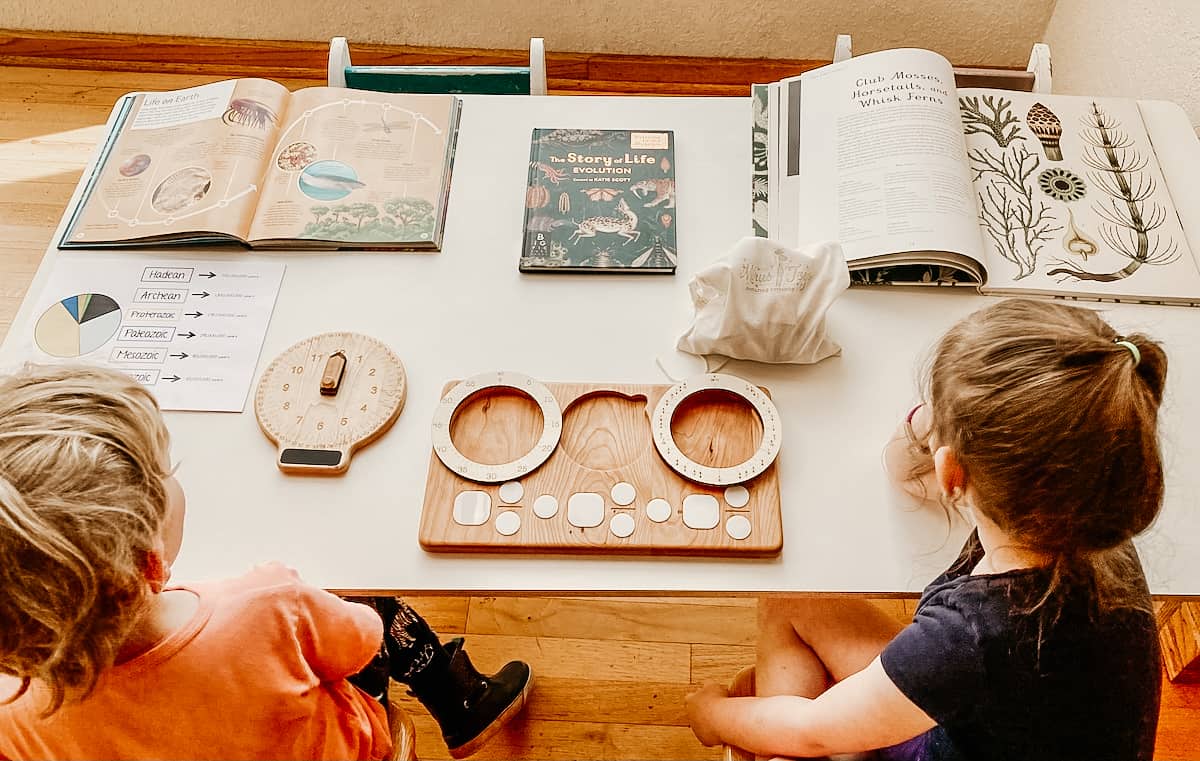
"Imagination can thus picture for us the primeval earth of hard, brown rock unrelieved by verdure of grass of leaf, without sound of bird a living creature, the silence broken alone by plunging waterfalls, booming thunder, or stones dislodged in avalanches. The grim brown crust is slowly being modified and overlaid with hospitable coverings, but before it can become the home of living beings some agency must ensure the purity of the air they will have to breathe...The plant life that was already established in the ocean heard the call and took the necessary leap to land."
- Maria Montessori
We’re back today to share the history of earth or the Second Great Lesson materials and follow-up for elementary and family-style learning. We really took our time and spent a couple of weeks exploring works related to The Coming of Life.
Jump to:
Disclosure of Material Connection: Some of the links in the post are “affiliate links.” This means if you click on the link and purchase the item, I will receive an affiliate commission. Amazon links are not affiliate links. You can read my full affiliate disclosure.
You can check out these Montessori Elementary Curriculum resources as well as these Earth Science Books, Botany Books, and Zoology Books for more details on what you see below.
If you haven't already, be sure to check out the First Great Lesson to see where this story starts.
The Second Great Lesson in Montessori's Cosmic Education a.k.a. The Story of Life picks up where the First Great Lesson ended: the formation of the Earth. The Second Great Lesson introduces students to the Long Black Line, the Clock of Eras, and the Timeline of Life. It's traditionally given to Elementary students after The First Great Lesson Follow-Up work is complete.
The Second Great Lesson tells the story of how Mother Earth changed over time and came to be the home of a variety of life forms, beginning with the simplest microscopic life in the ocean all the way to the appearance of humans.
The Long Black Line was originally used by Maria Montessori as a lesson in humility for a group of students. Together, Montessori’s Five Great Lessons provide children with a contextual understanding of who they are, where they come from, and their unique purpose or cosmic task.
Since we are including Primary and Elementary students in our History of earth for kids, the goal was, again, to strike a balance between what's been taught in Primary in the past and what to introduce to a Lower Elementary student. Also, I like to introduce content and materials that are buildable, knowing that some topics will be revisited in the future.
This Montessori Second Great Lesson covers Sensorial, Language, Math, Science, Nature, Geography, History, and Art. There are many different directions you can take with this lesson.
Zoology Books
Experience the wonder and awe of the animal kingdom!
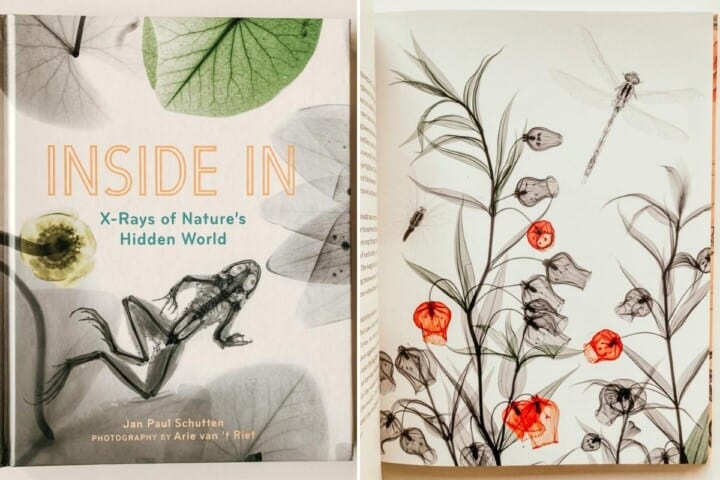
The kids spent a lot of time engaged in activities related to the Clock of Eras, Earth's layers, Earth's atmosphere, Water, and Botany. We're in the middle of harvest season, so that has definitely added interest to Botany-related work.
You'll also find materials and follow-up work for exploring animals, including prehistoric animals.
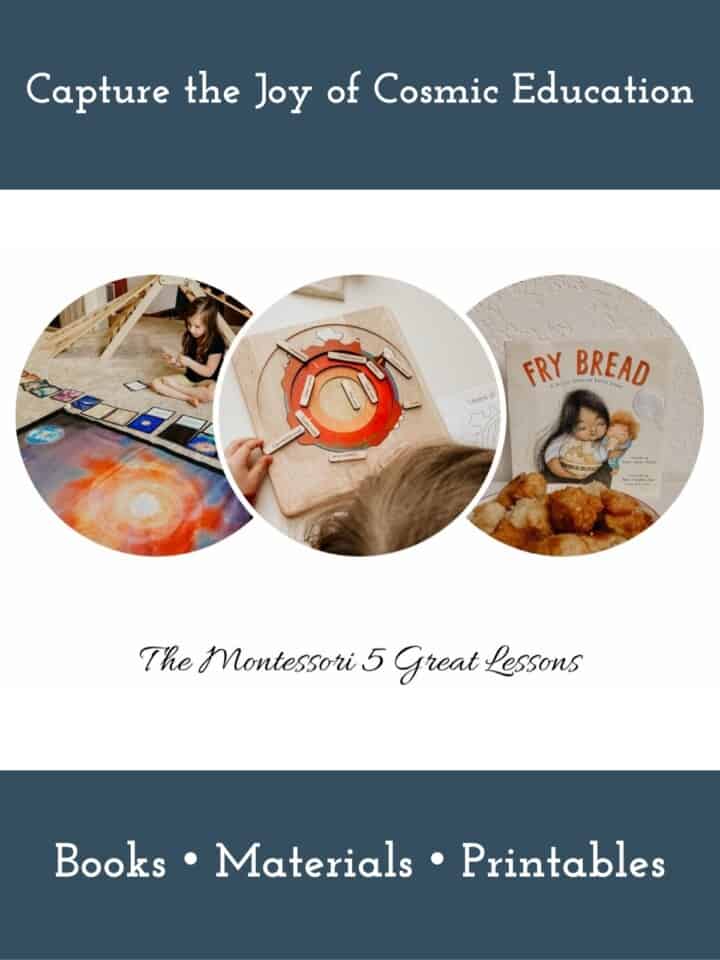
How to Homeschool Elementary
A Family-Style Approach to the Montessori Great Lessons
Free Montessori Great Lessons Series
Do you want assistance with planning your year? We've put together a FREE series on the Great Lessons for elementary and family-style learning that will take the overwhelm out of the beginning of your school year and keep you moving with ease all the way to spring.
Explore the Montessori Great Lessons, the introduction to the Cosmic Curriculum, traditionally given to Elementary students near the beginning of the school year. This free 5-part weekly email series will help you tell the story of how our universe began all the way to the origins of language and numbers.
Montessori's Five Great Lessons provide children with a contextual understanding of who they are, where they come from, and their unique purpose or cosmic task. Sounds like a big undertaking, right? Well, it doesn't have to be.
Learn more about this elementary homeschool course.
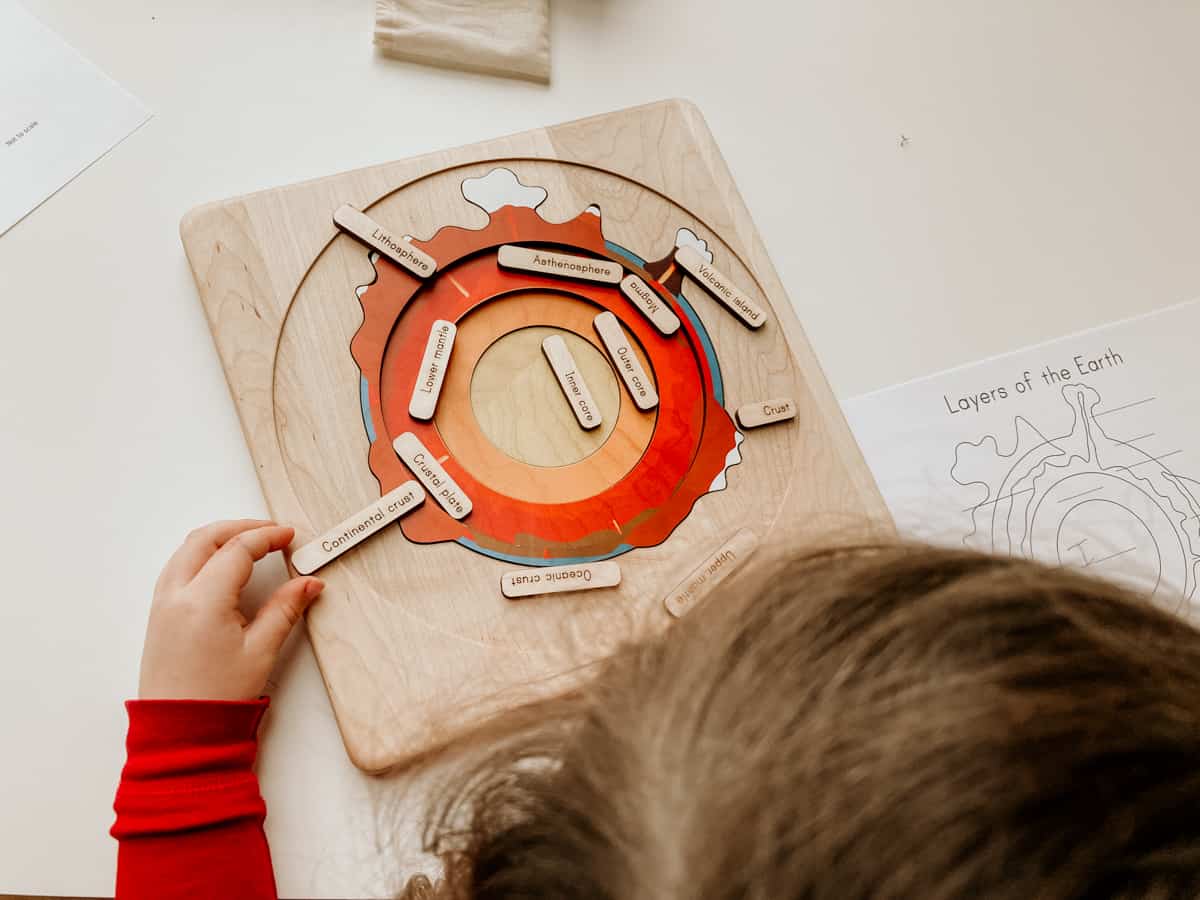
History of Earth for Kids: The Montessori Second Great Lesson
This Montessori Second Great Lesson contains materials and follow-up work for all ages, but especially ages 2-12. It contains books, printables, and hands-on activities. More specifically, it covers topics such as the Clock of Eras, Layers of the Earth, Layers of the Atmosphere, the Water Cycle, Landforms, First Plants, and First Animals.
We also revisited some geology and paleontology materials, including prehistoric animals such as dinosaurs, and our collection of geology and paleontology books.
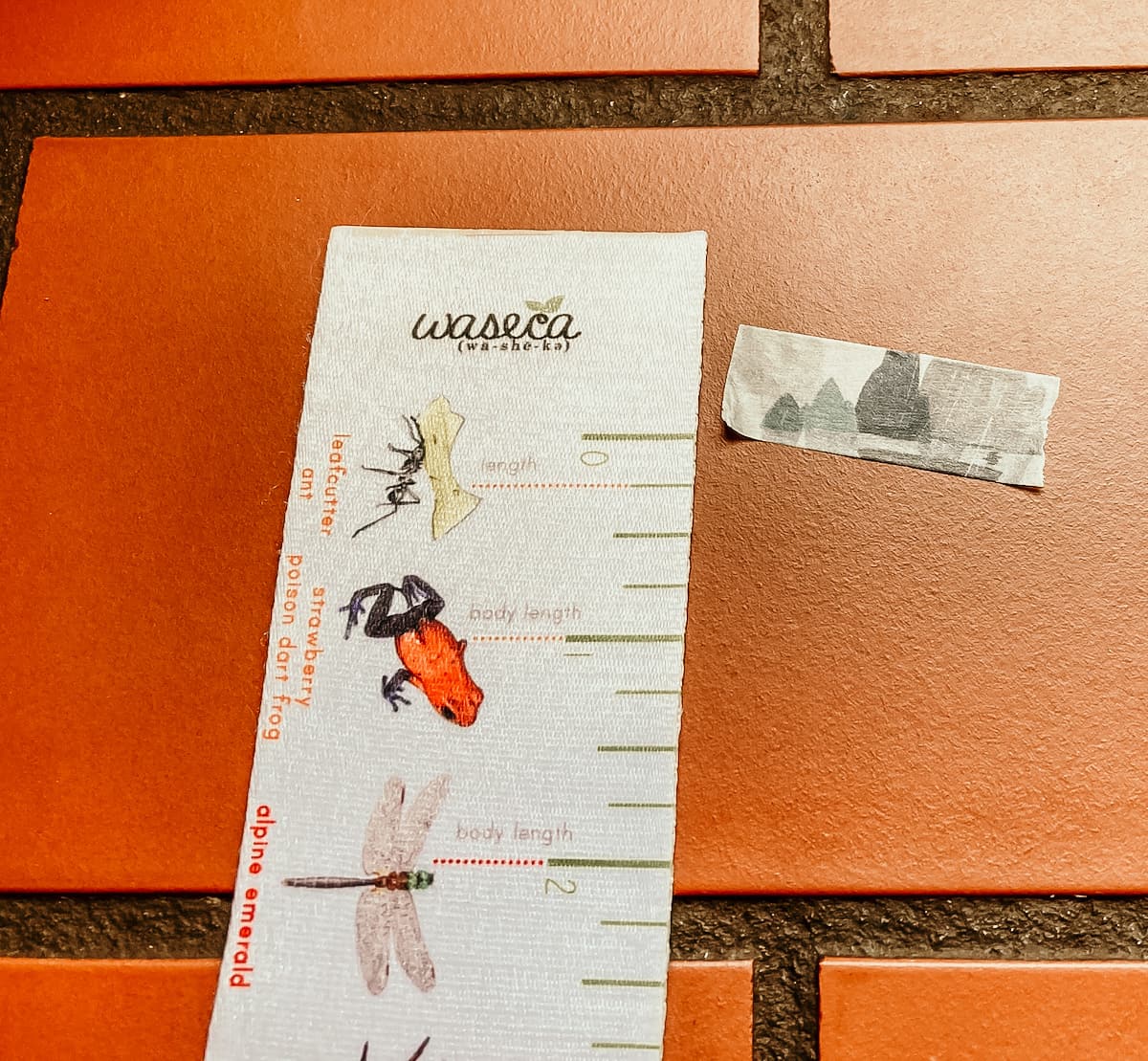
Second Great Lesson
For the Long Black Line demonstration, we decided to create our own line on the floor using some washi tape and our Waseca Biomes Animals of the World Measuring Tape. The original Long Black Line is 30 meters with 1 cm of red at one end, indicating the appearance of humans on Earth.
Waseca Biomes
Save $15 on your first purchase!
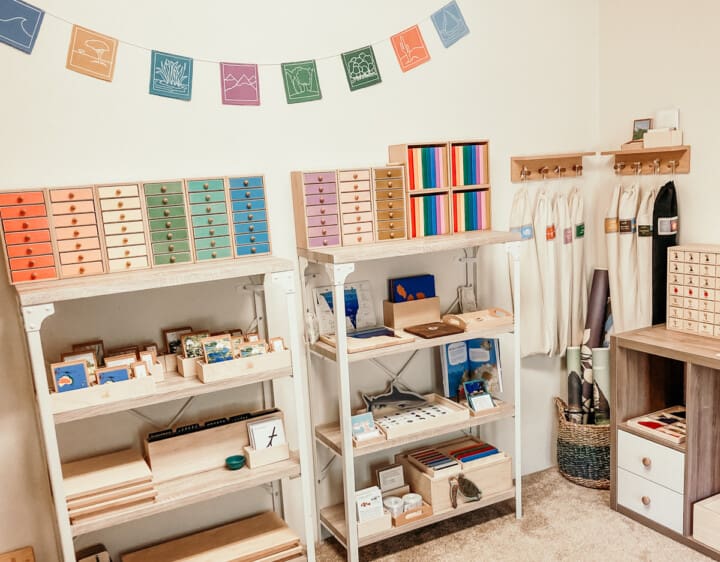
I divided the original measurements by 3 to make it simpler for us to create. Maybe not as dramatic as the original line, but just as effective for our storytelling purposes. I followed the suggestions of Children of the Universe and told The Story of the Earth and The Story of Life as we walked the line. At the end of the line, the kids finally found out what the red mark they drew actually signified.
As practice for this great work, the kids spent time using these Montessori Measurement printables prior to the Second Great Lesson. Get 16% off your purchase from Montessorikiwi here.
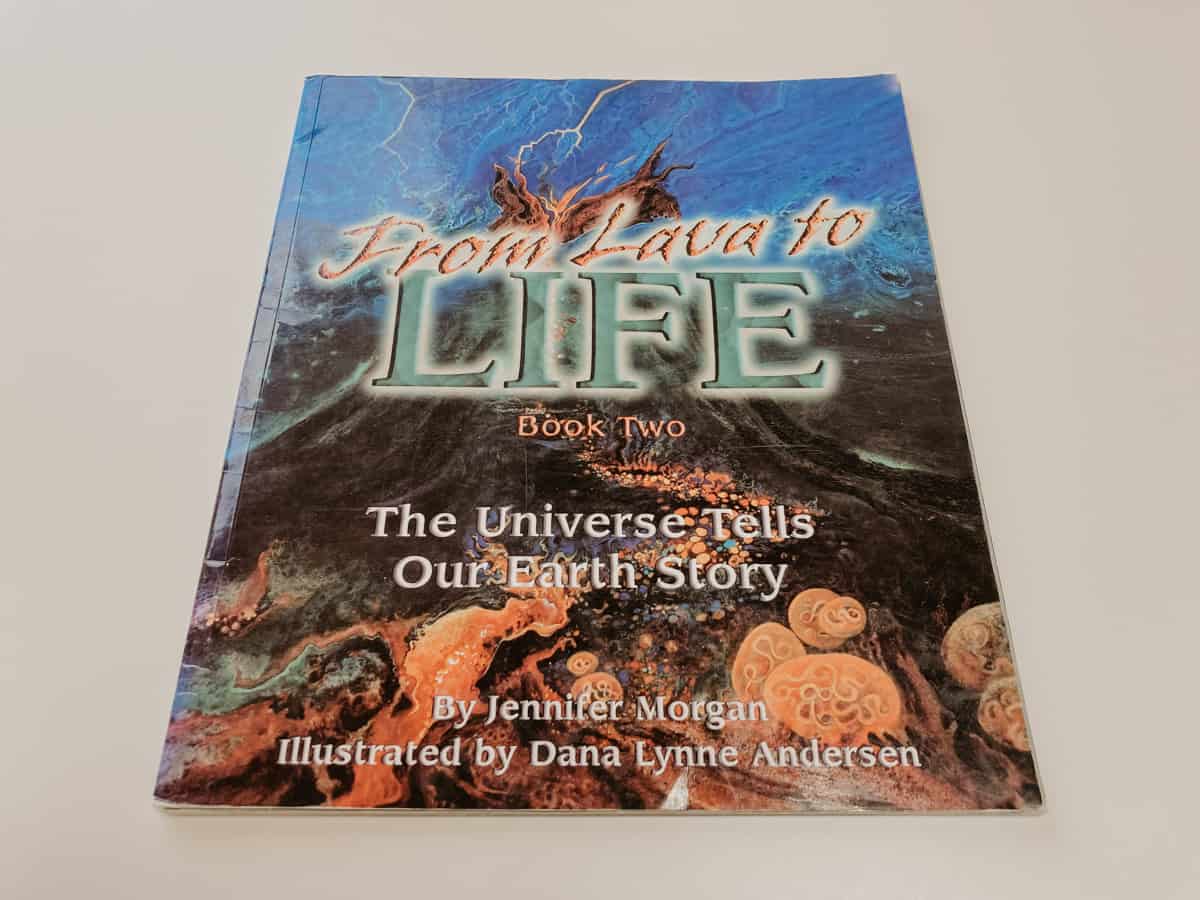
Second Great Lesson Revisited
The next day we revisited the Second Great Lesson using From Lava to Life. We read the story together before making our way over to a workspace to explore the Clock of Eras Charts. I explained how the Clock of Eras relates to a regular clock using a Montessori Learning Clock. Then, I gave a simple explanation of how it tells time on Earth up to the present day, just like our Long Black Line.

Afterward, they explored the Mirus Toys Fraction Manipulation Board as we learned more about each era. Noah used the Time Ring with his Fraction Circles and our Kaia used the Fraction Ring.
I originally thought it may be a bit confusing to learn about all the eras on the clock. However, we found the colors on the Clock of Eras helpful for remembering what took place during each era.
The Clock of Eras
The purpose of the fraction manipulation board is to stimulate interest and explore geometric concepts, not replicate the clock of eras. The beginning of the Cenozoic Era is very close to the present day or 12:00 and is, therefore, smaller than the smallest fraction piece (1/10).
However, that is precisely the point. It's meant to reinforce the impression of how short a period of time humans have been on Earth.
Mirus Toys Clock of Eons/Eras Puzzle
Explore Deep Time!
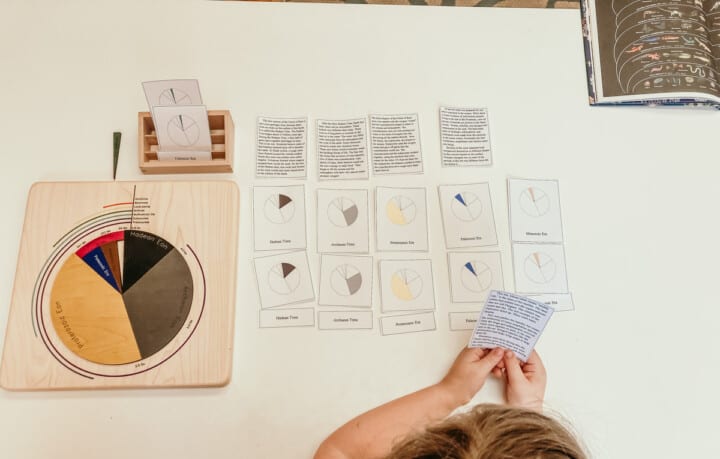
This Clock of Eras Puzzle is another fabulous hands-on resource. It includes eons and eras as well as major events associated with each one and a control card. We use it along with the Fossilicious Clock of Eras Three-Part Cards.
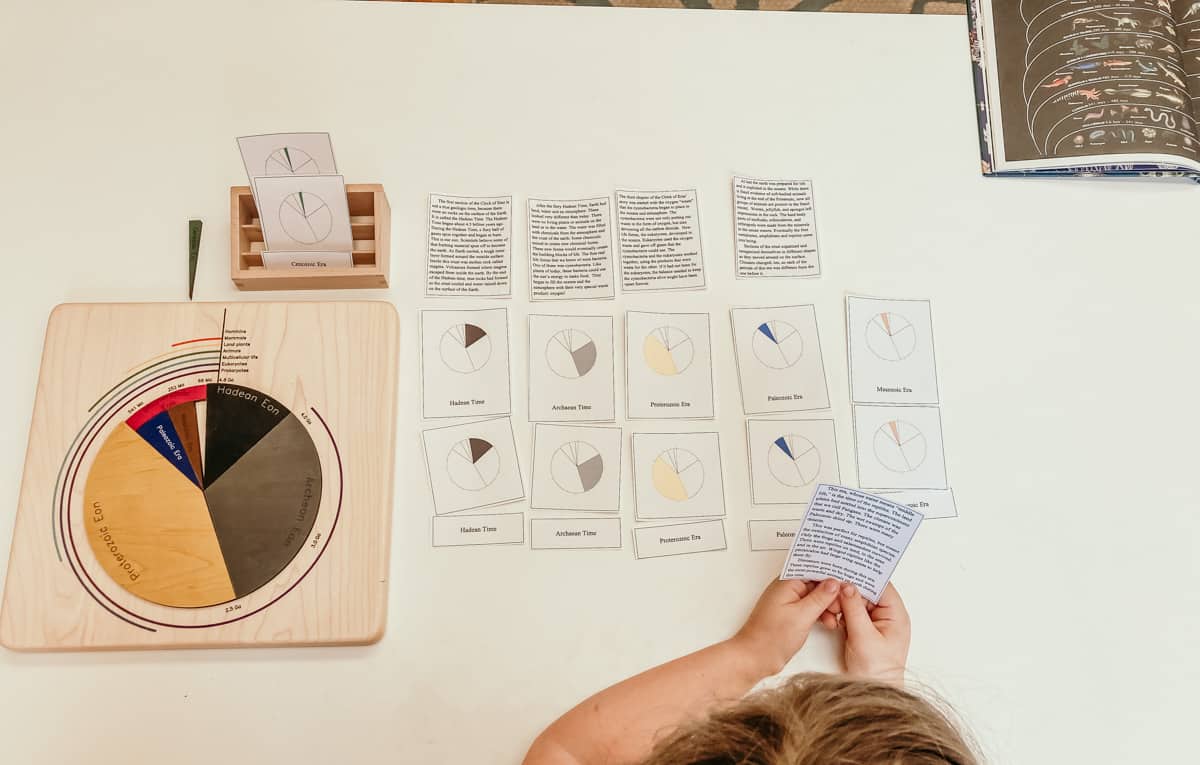
A precise clock can also be made using the Clock of Eras Charts printables mentioned above. Get 16% off your purchase from Montessorikiwi here.
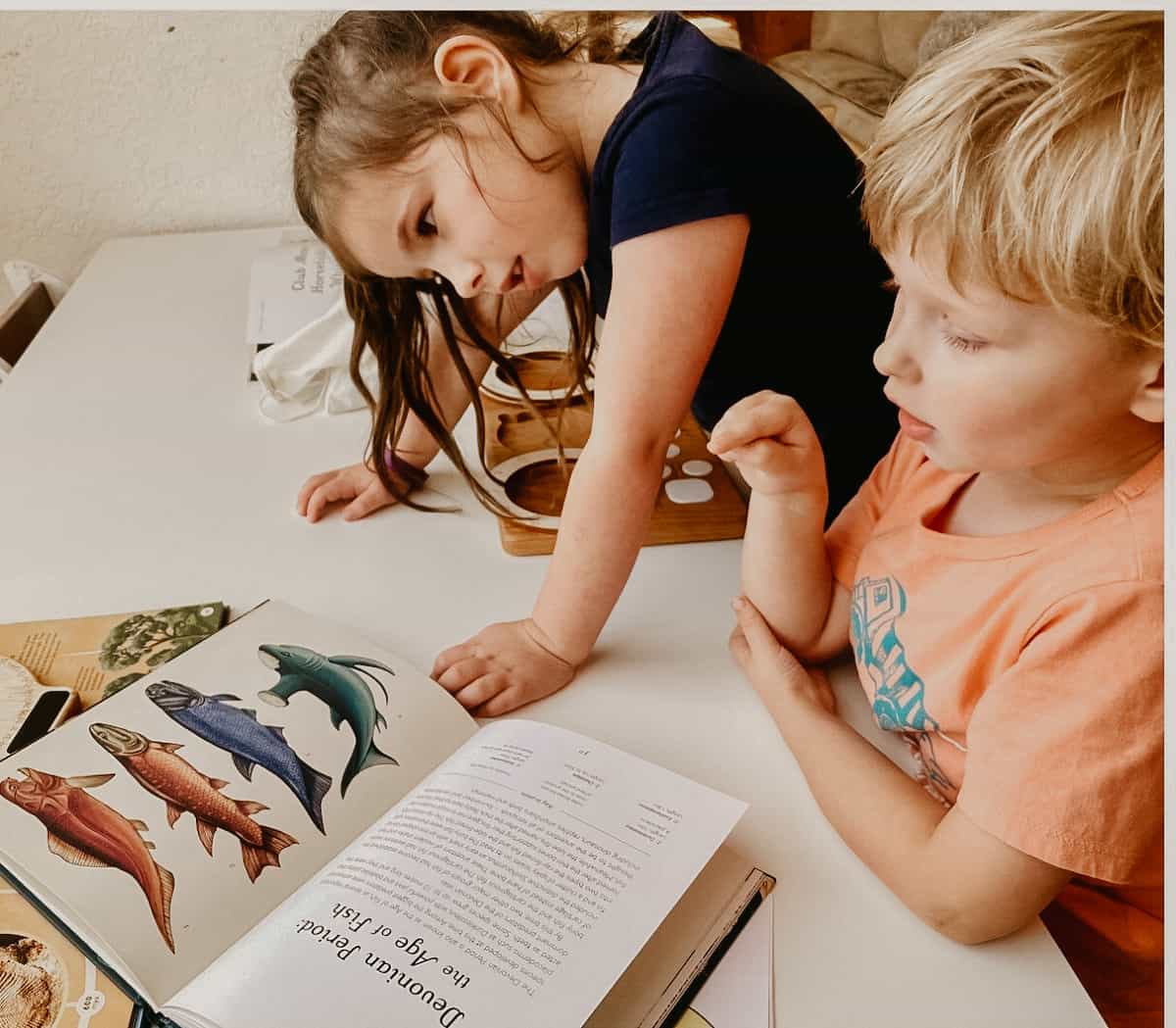
We also had some books out as additional timeline resources and for examples of early plant and animal life. The Dunkleosteus has always been a big hit in our homeschool.
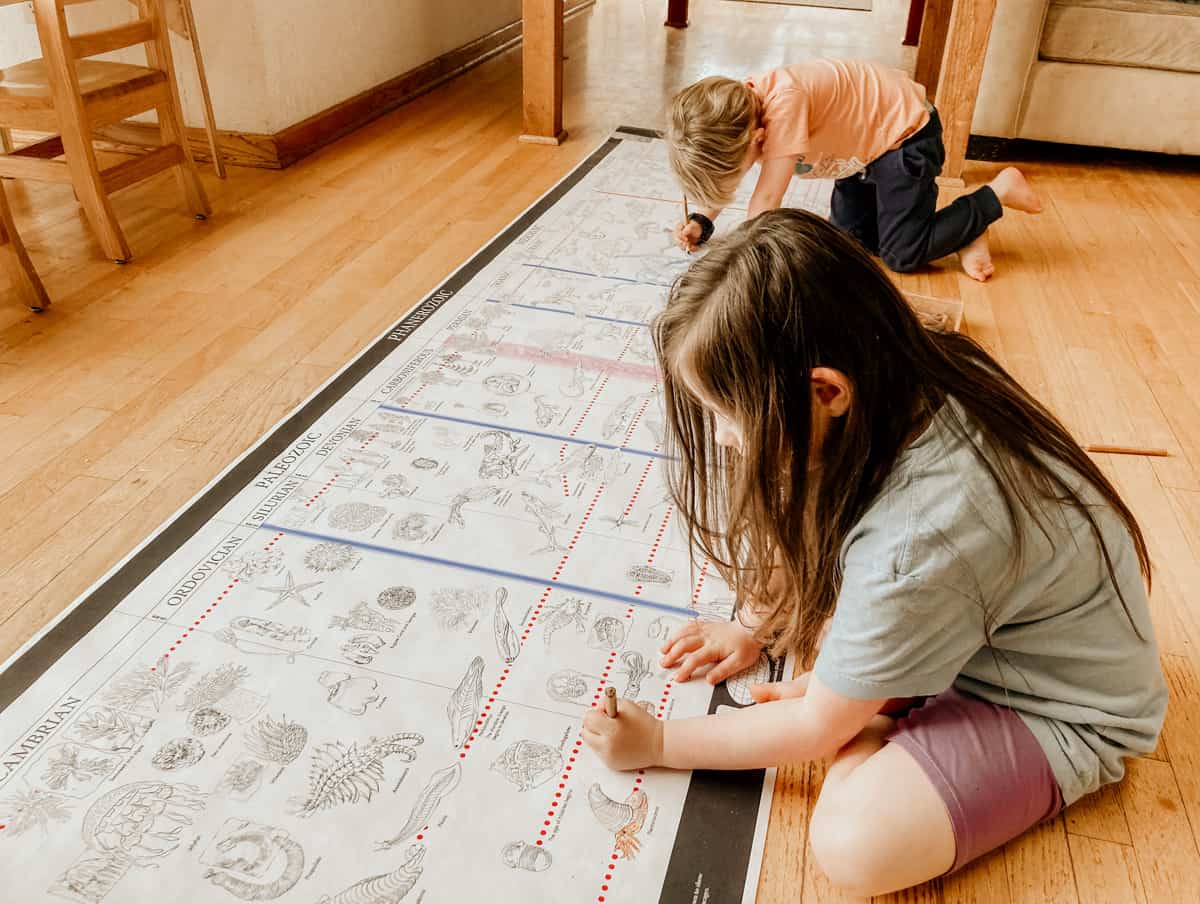
The Timeline of Life
This timeline of life is an example of ongoing work related to the history of the earth and the second great lesson.
After introducing this timeline to the kids, Kaia chose to start at the beginning of the timeline. Meanwhile, Noah hopped right into his favorite era, the Mesozoic, and colored his favorite dinosaurs and other prehistoric animals.
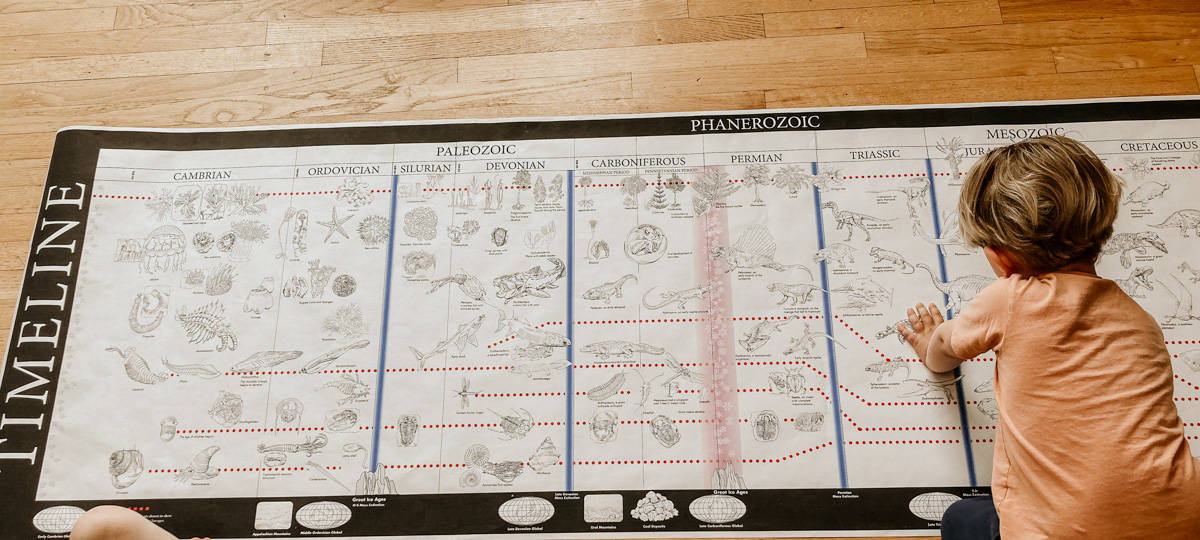

free recipe!
Homemade Frosted Animal Crackers
Easy dinosaur cookies, iced animal crackers, or whatever makes your kids roar
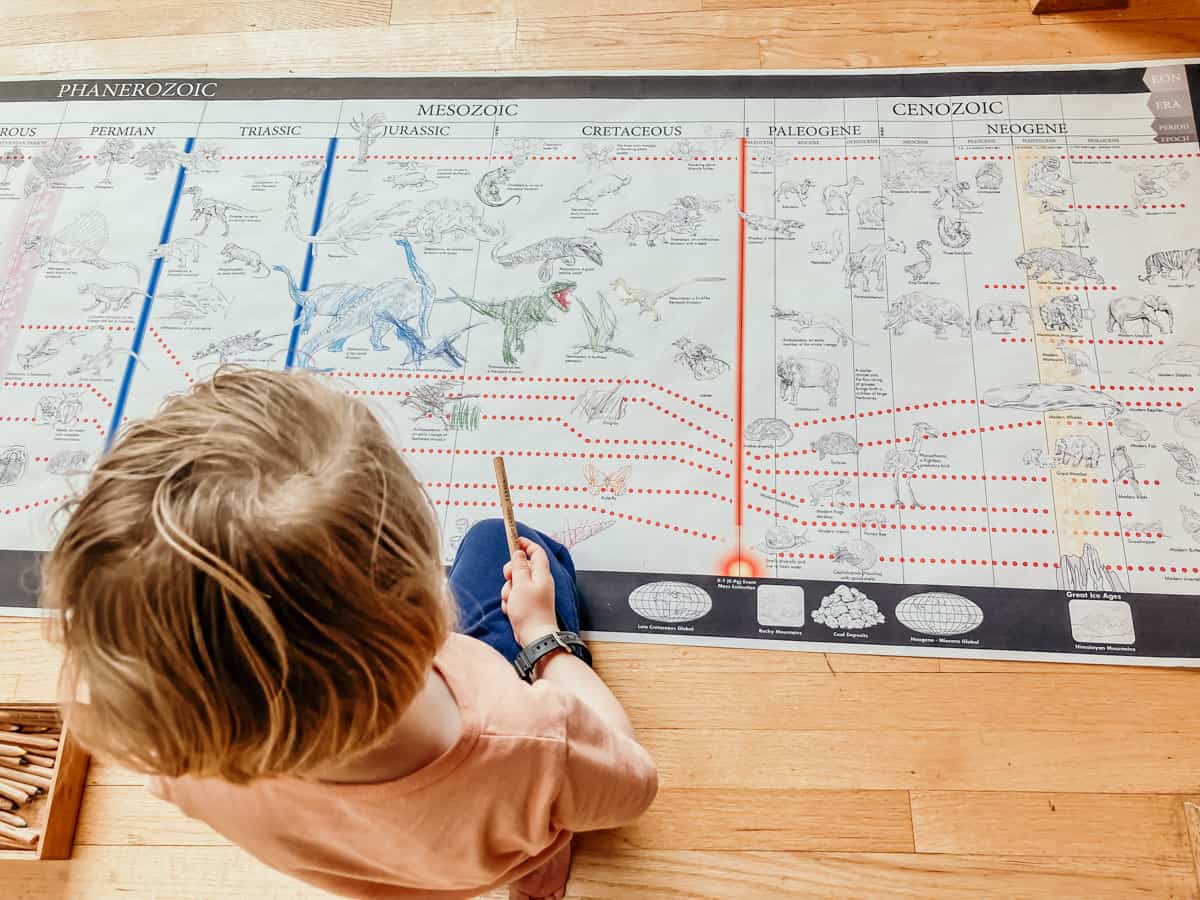
This timeline deepens the work of the clock of eras while providing a linear representation for learners. It's a lot of fun and it opens so many opportunities for further exploration into your child's favorite topics.
We plan to hang ours in our homeschool room when it's completed.
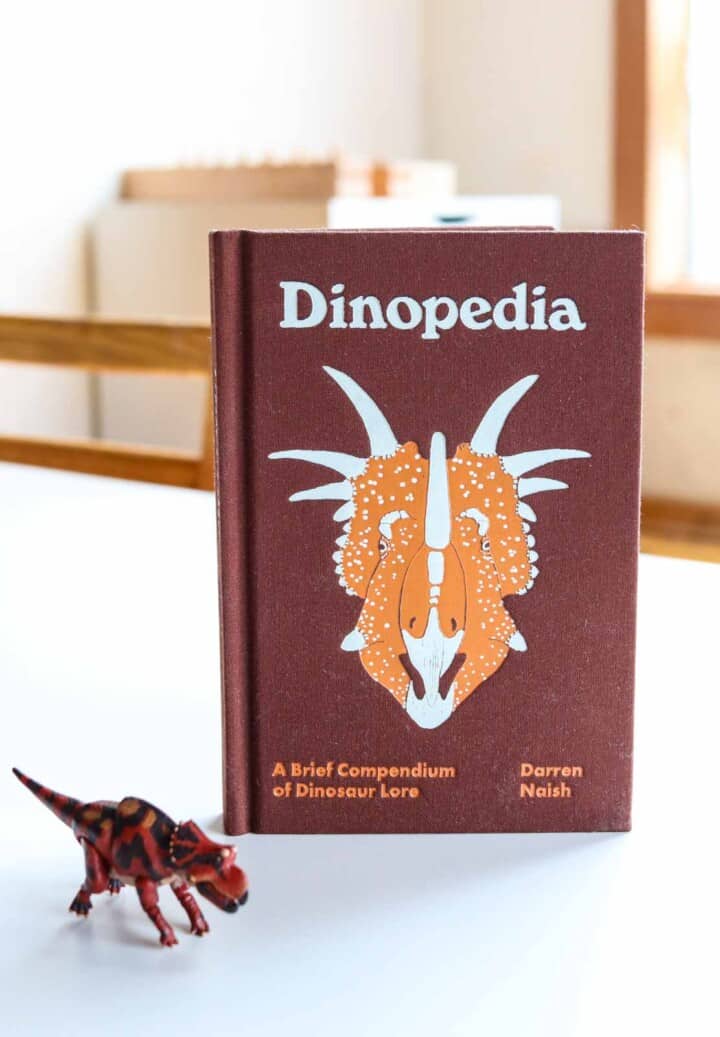
The Best Dinosaur Books
Find the best dinosaur books to match your interests.
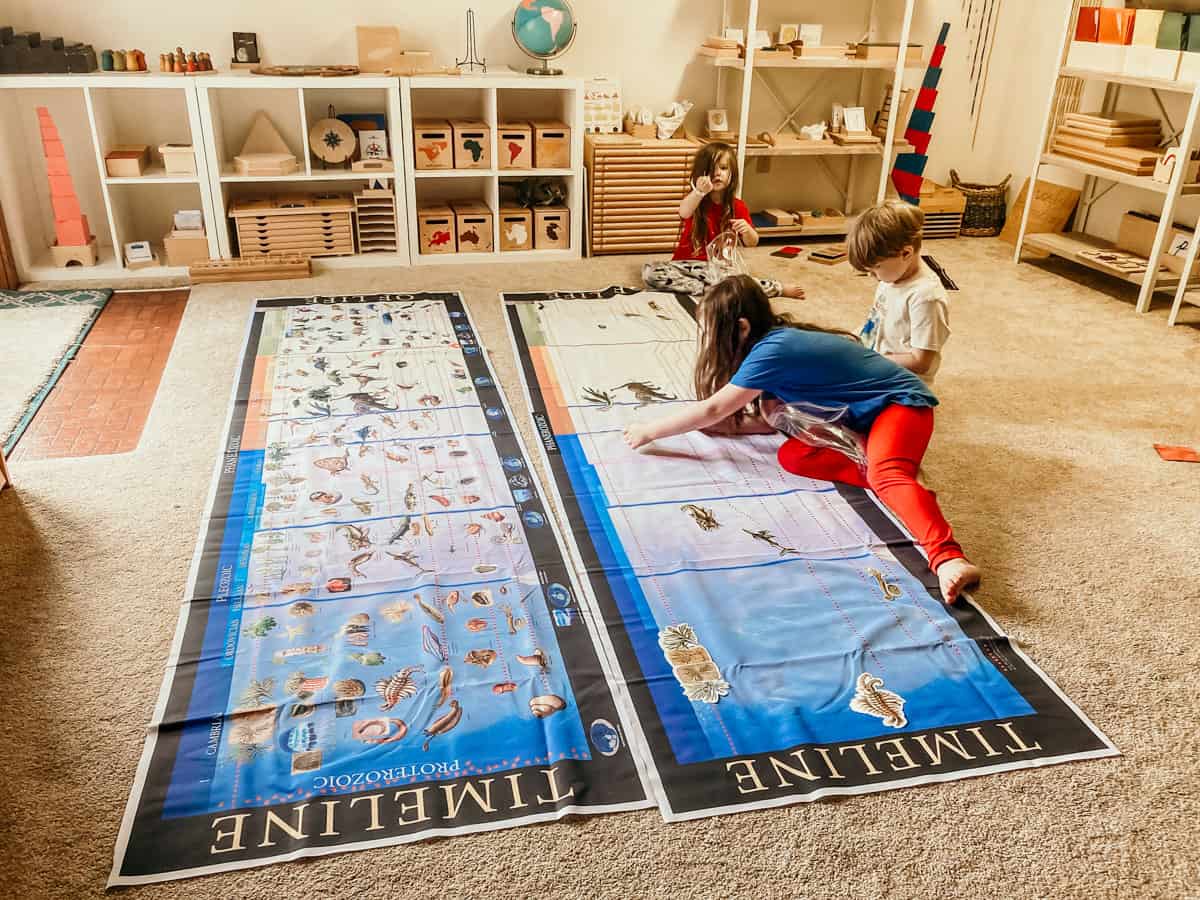
The cloth timeline of life (complete set) is a more durable option that also includes research cards and decals as well as a control chart.
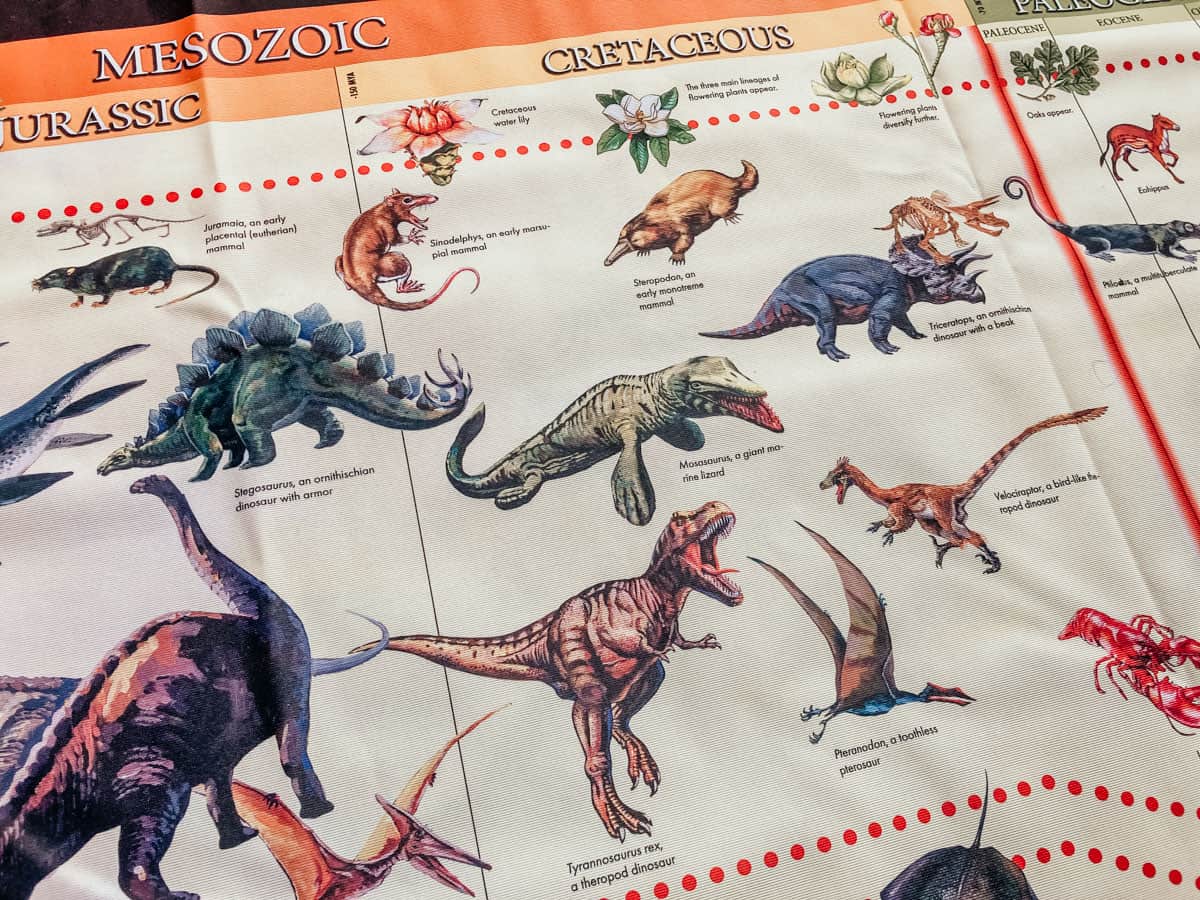
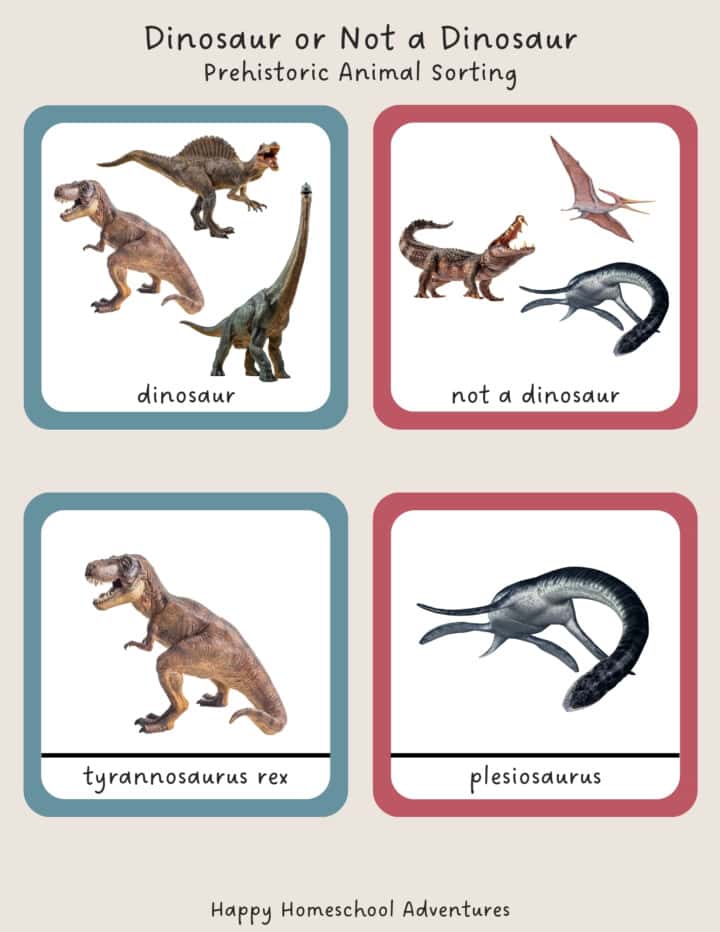
FREE Prehistoric Animal Sorting Activity
Also Three Part Cards!
Prehistoric Animals
Grab your FREE Dinosaur or Not a Dinosaur Prehistoric Animal Sorting Activity.
Kids can place the prehistoric animals on the appropriate location of the timeline of life or use them as a prompt for further research.
These sorting cards also make excellent three-part cards for introducing vocabulary related to prehistoric animals and dinosaurs. To use these as 3-part cards, simply print two copies of the printable and then cut the labels off the cards on one of the copies. Children can match the picture and then match the label as they show readiness.
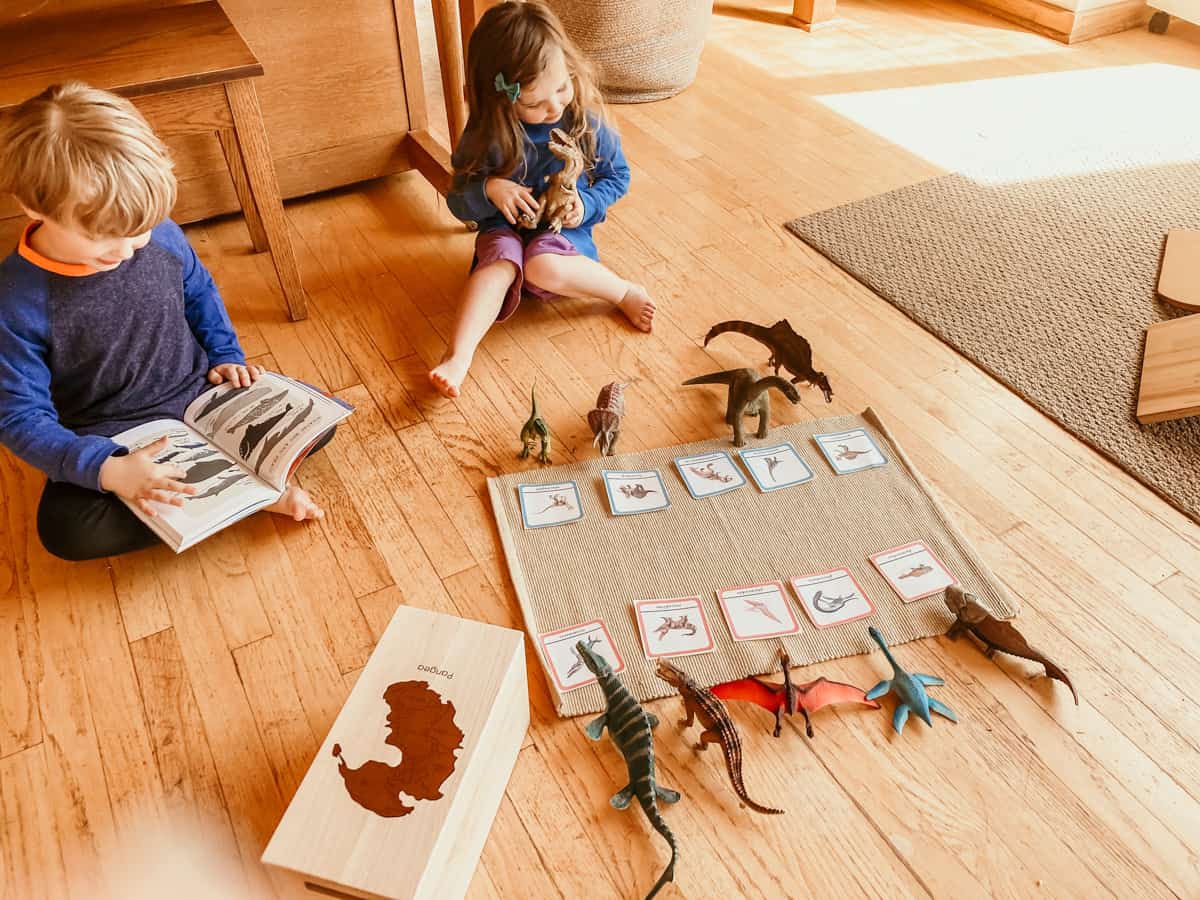
The youngest of children can use them for object-to-picture matching with their favorite animal figurines.
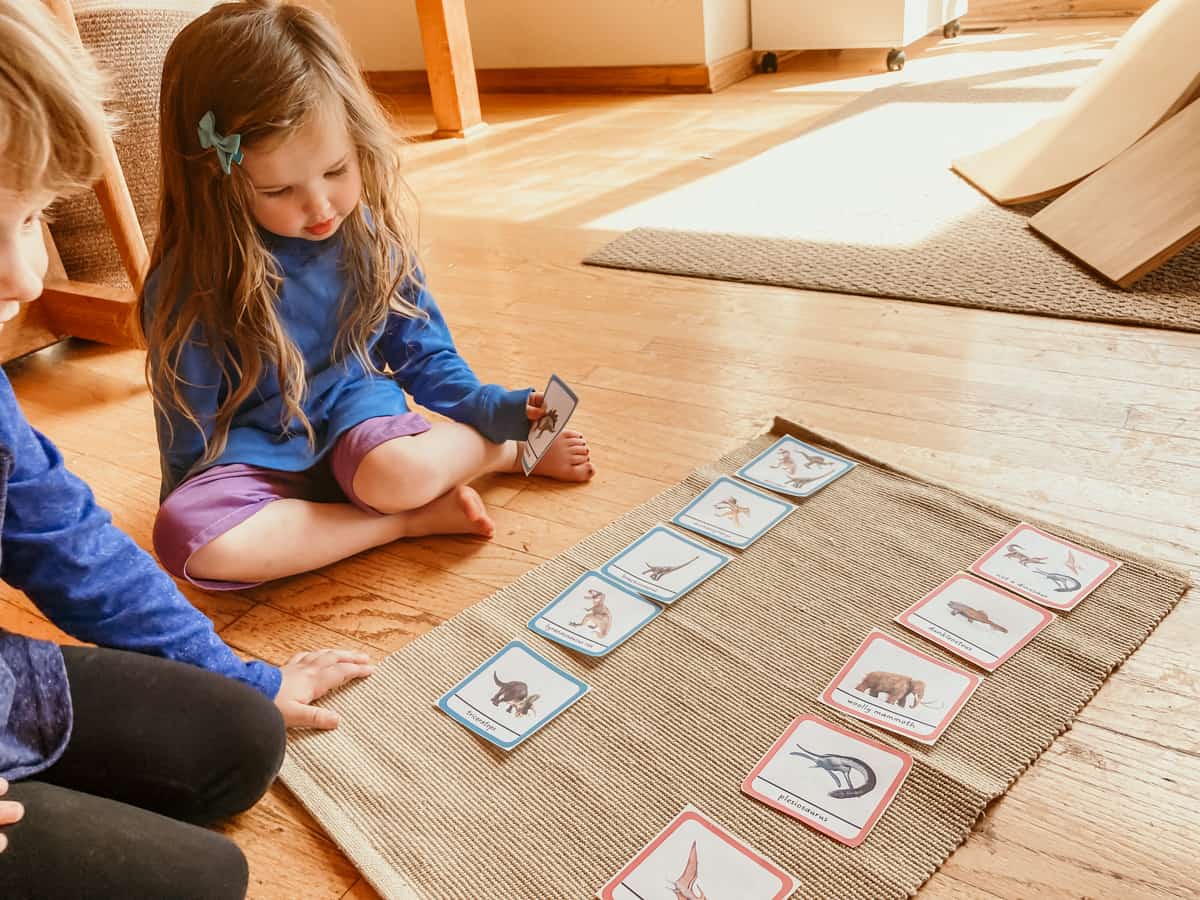
Kids can also sort the cards into rows or columns using the heading cards: dinosaur & not a dinosaur. The colors of the cards provide a control of error so that kids can self-correct when completing this work independently.
Is it really a dinosaur? Or is it something else?
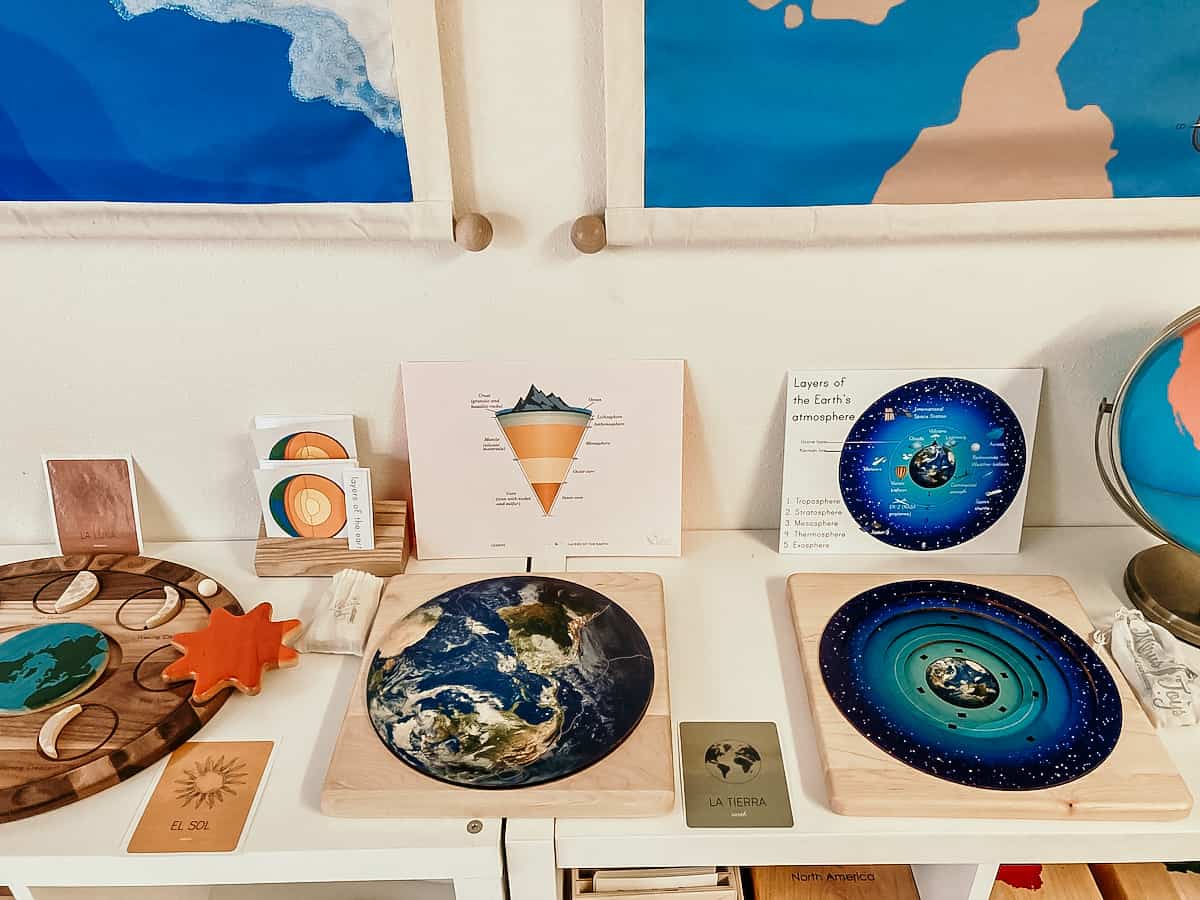
History of Earth for Kids: Earth and Atmosphere Shelf Work
- Layers of the Earth Puzzle by Mirus Toys
- Layers of the Atmosphere Puzzle by Mirus Toys
- Bilingual Spanish Nature Cards
- Ring of Fire Puzzle
The Layers of the Earth nomenclature cards were included with the Layers of the Earth Puzzle and Guide. There's a lot of content that covers several topics (landforms, plate tectonics, etc.), helpful images, and diagrams, and it even includes a couple of activities. The kids have been working with these materials a lot.
The Spanish Nature Cards are gorgeous and we've been changing them out as we rotate the materials on our shelves. They're a great way for us to label the environment. You'll notice further down we also use them with our Movable Alphabet as Language shelf work.
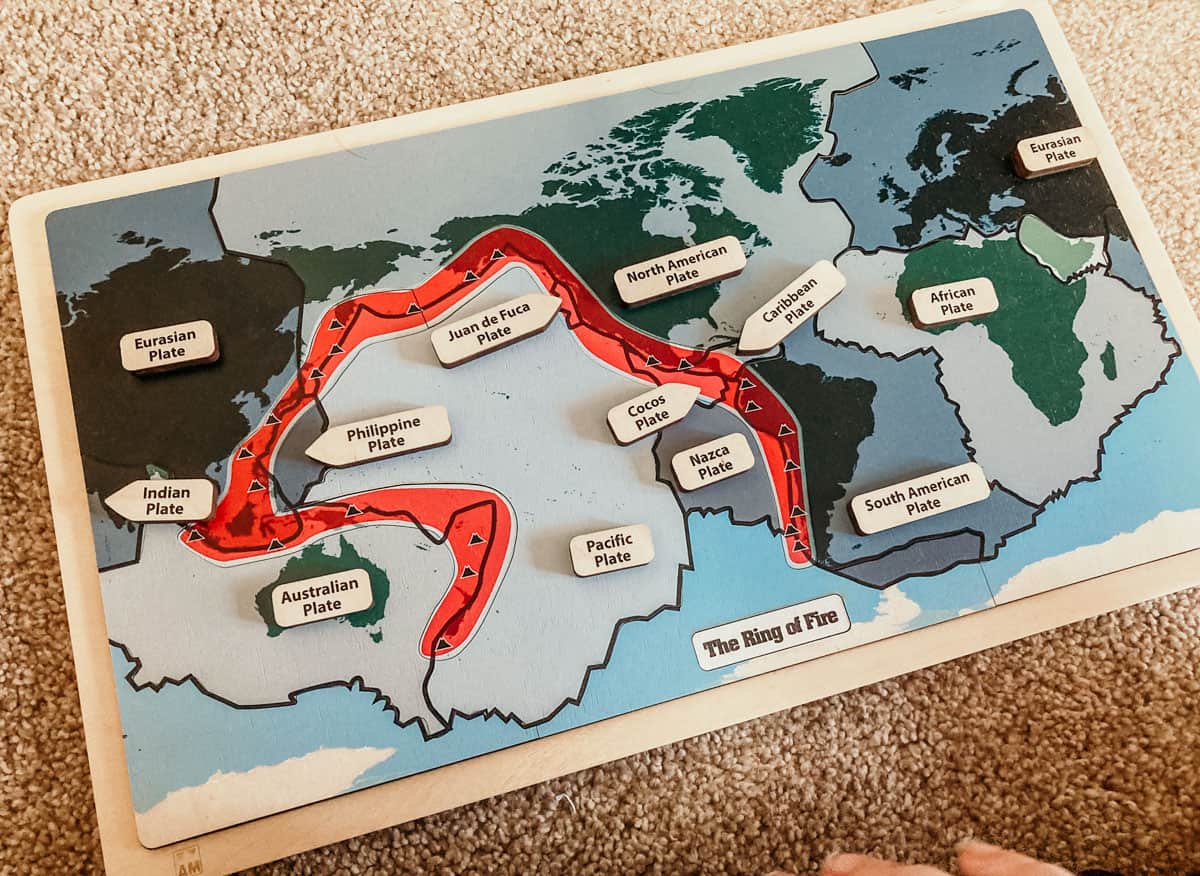
The ring of fire puzzle allows kids to visualize the plates and the ring of fire. This puzzle is a great activity for kids to engage in prior to any volcano or earthquake experiments.
Stop by our homeschool tour for more earth science materials.
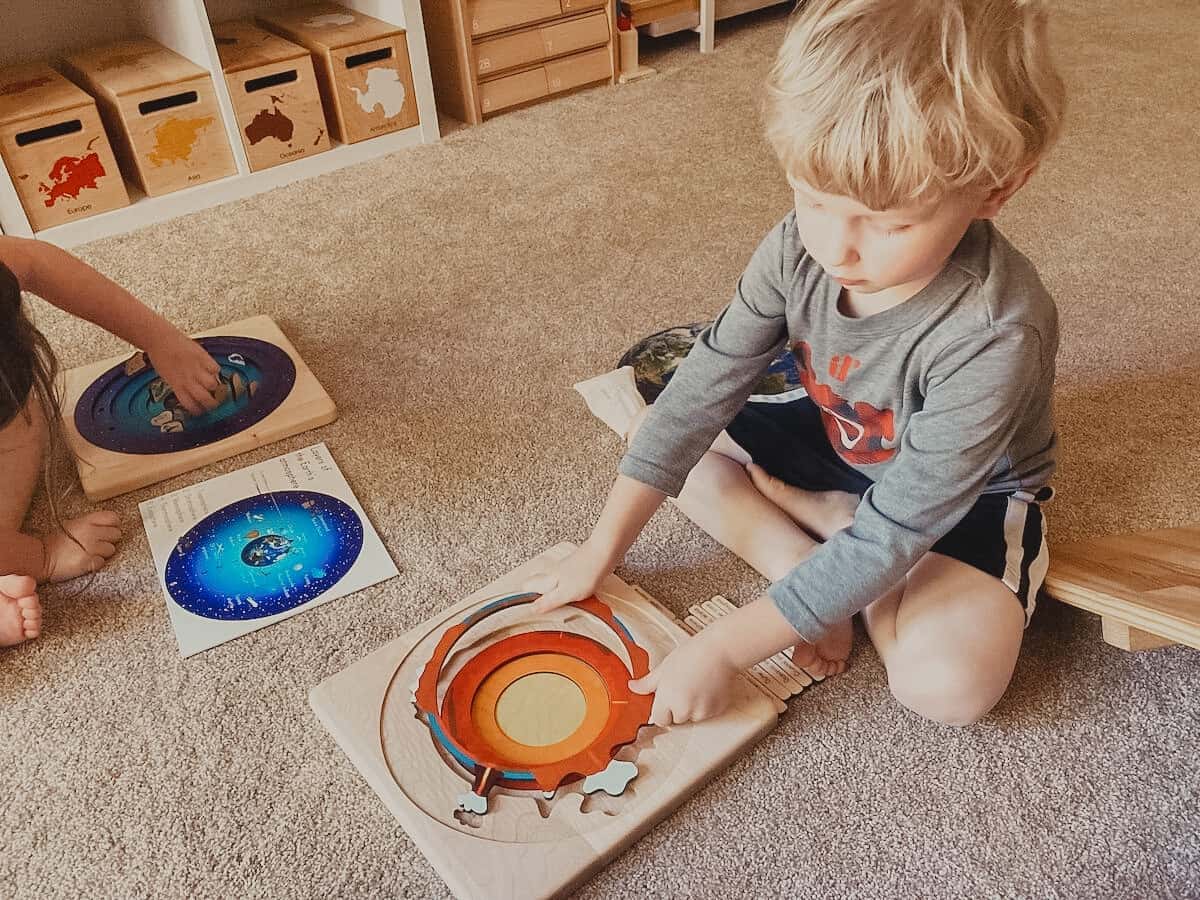
Layers of the Earth Puzzle
Explore the Layers of the Earth with this Mirus Toys puzzle and companion guide!
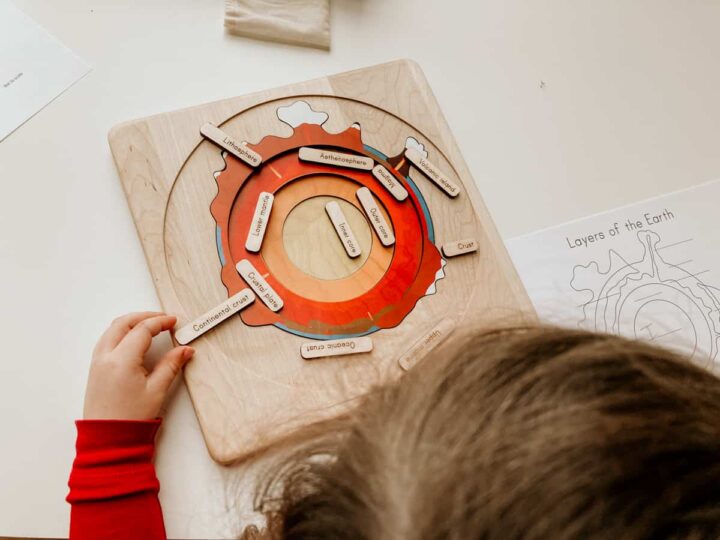
The Layers of the Earth Guide that comes with this puzzle is an excellent resource for homeschoolers.
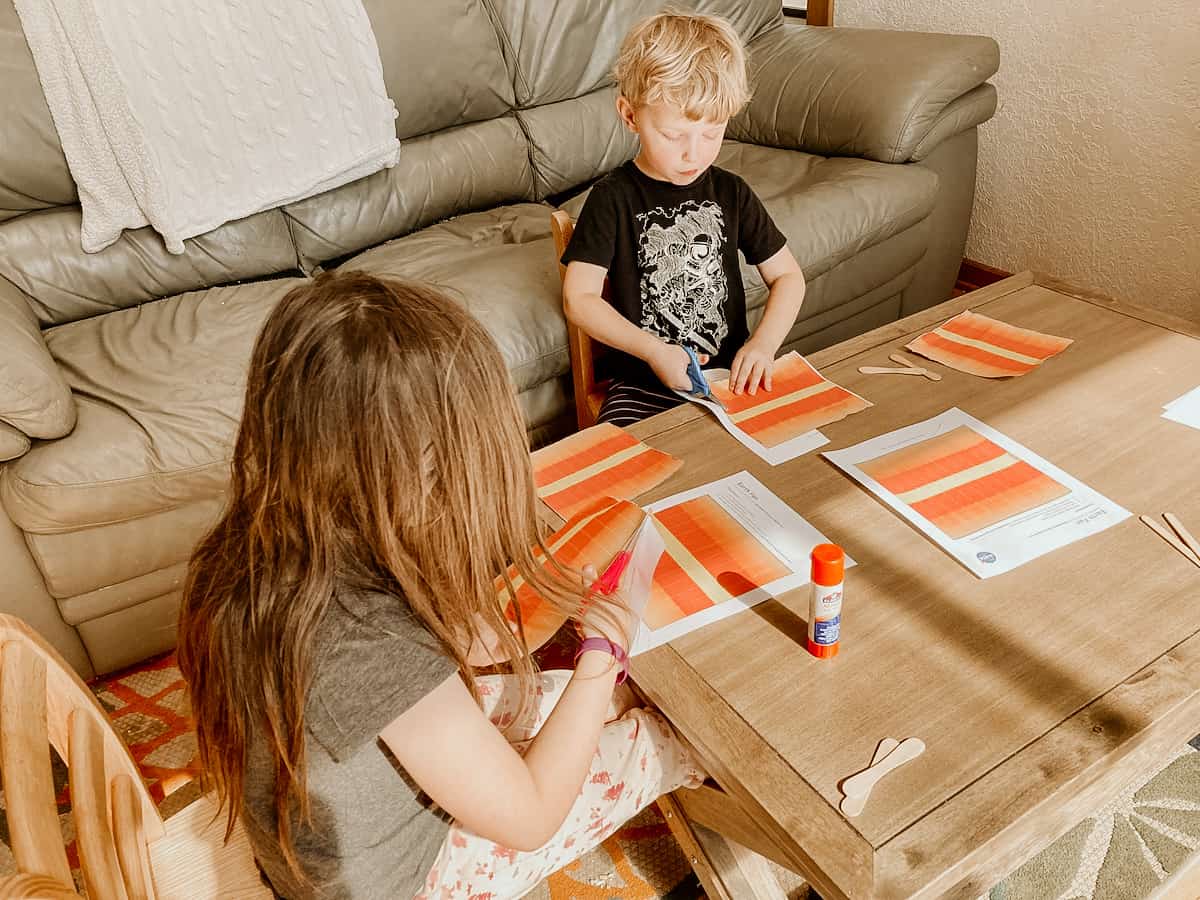
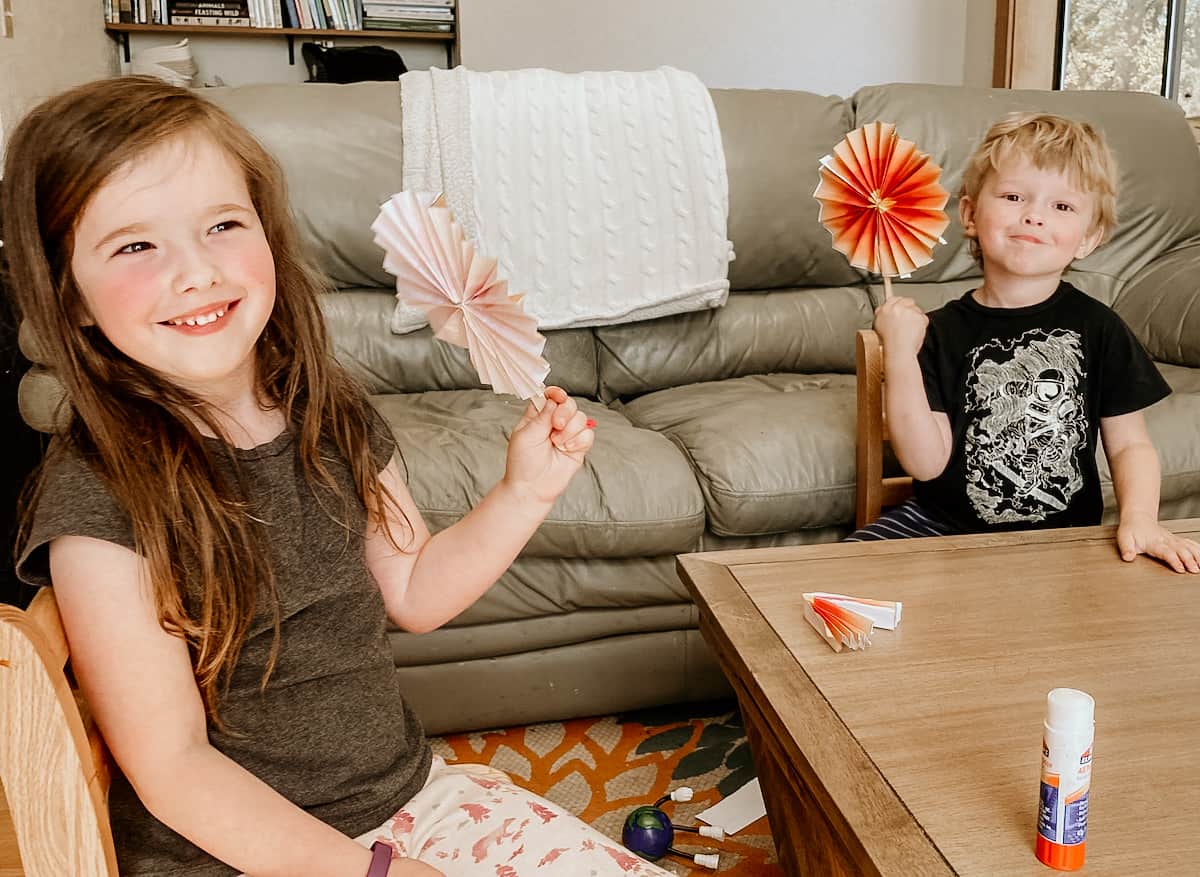
A Layers of the Earth Fan craft activity is included with the Mirus Toys Layers of the Earth Puzzle, Guide, and Nomenclature Cards.
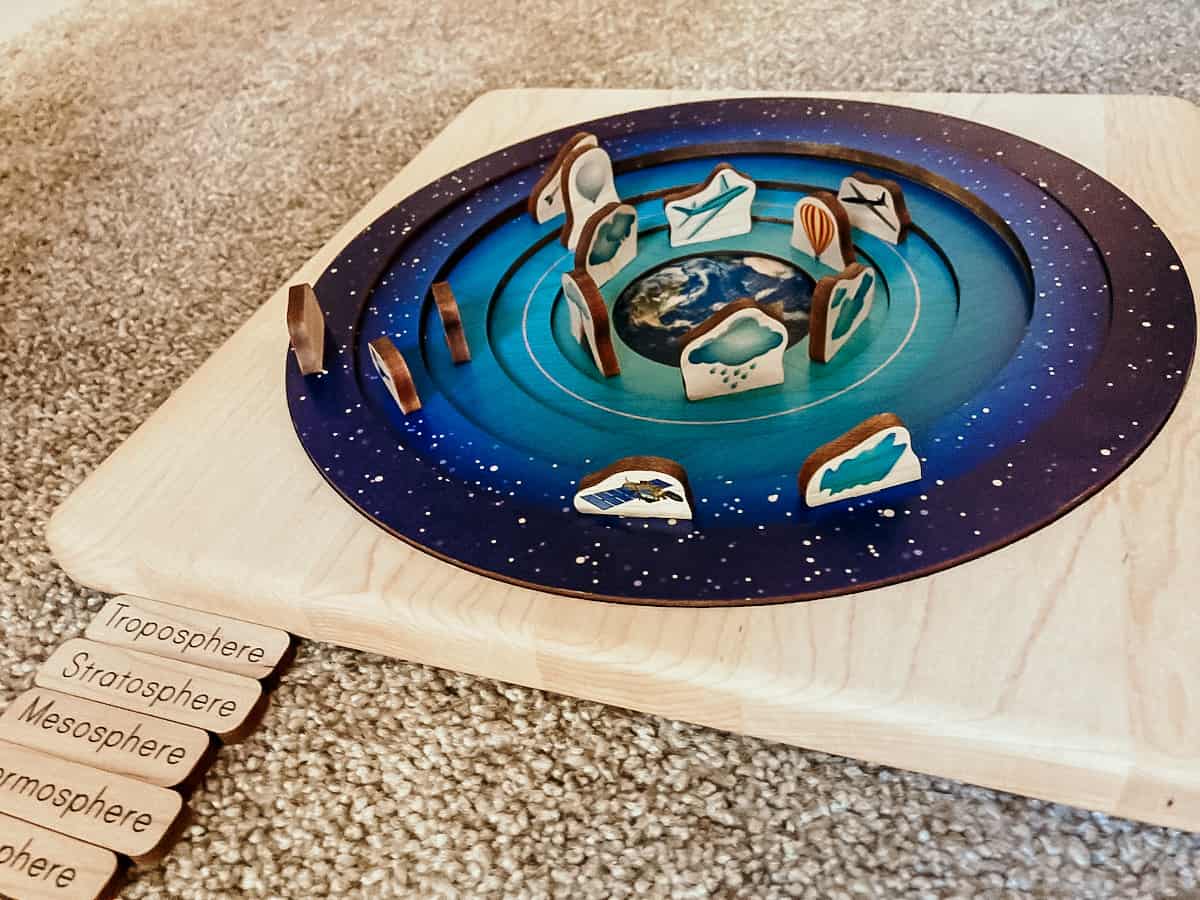
This Layers of the Atmosphere Puzzle was also a great segue into weather and the Water Cycle. Both of the older kids enjoyed matching the appropriate puzzle piece to its corresponding layer.
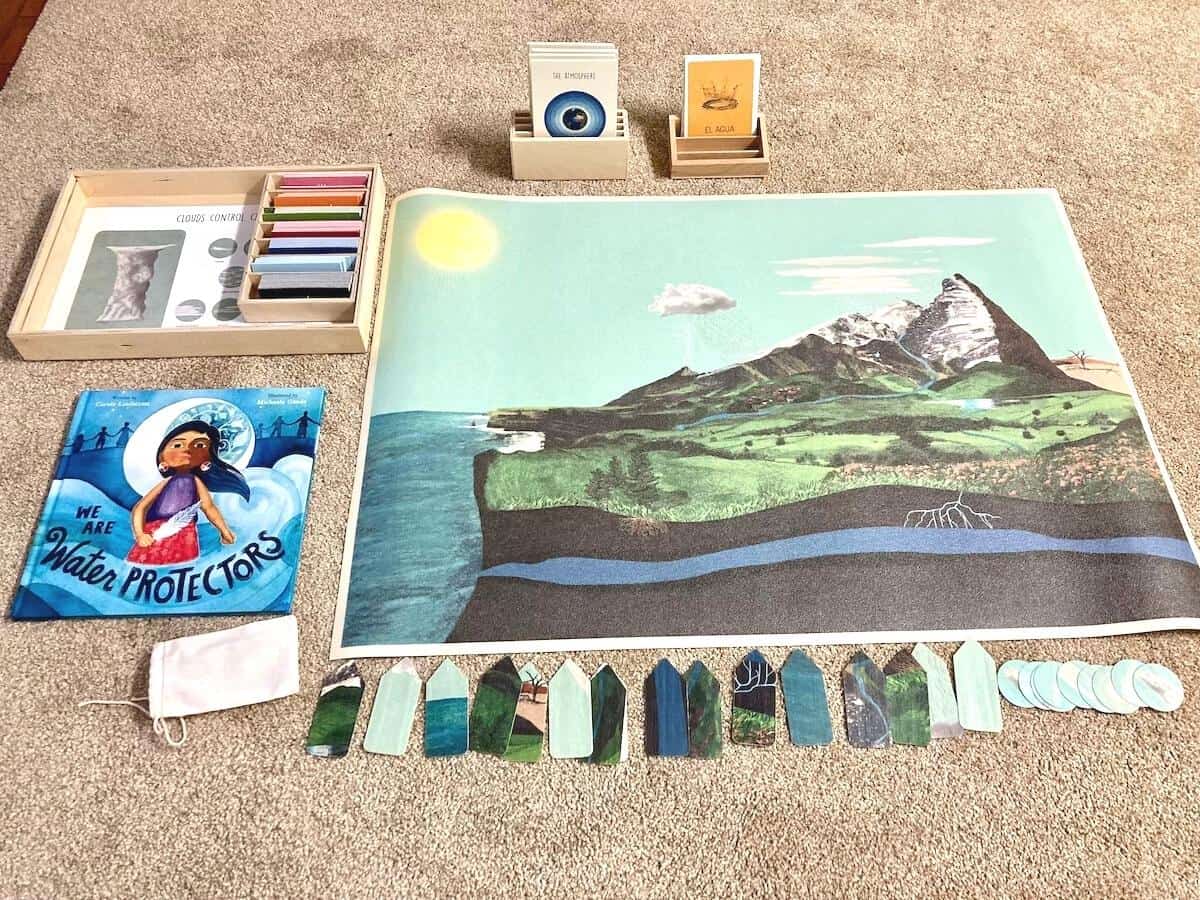
Water Cycle Shelf Work
- Water Cycle Mat by Waseca Biomes
- We Are Water Protectors
We also used our Waseca Biomes Water Cycle Mat and We Are Water Protectors to visualize the water cycle and learn more about the importance of stewardship. This mat includes several lessons. As a result, the kids completed a couple of activities in each session with the mat.
These resources are also part of our winter nature studies and can be found in our 12 Winter Bucket List Activities for Homeschool.
Get $15 off your first Waseca Biomes purchase.
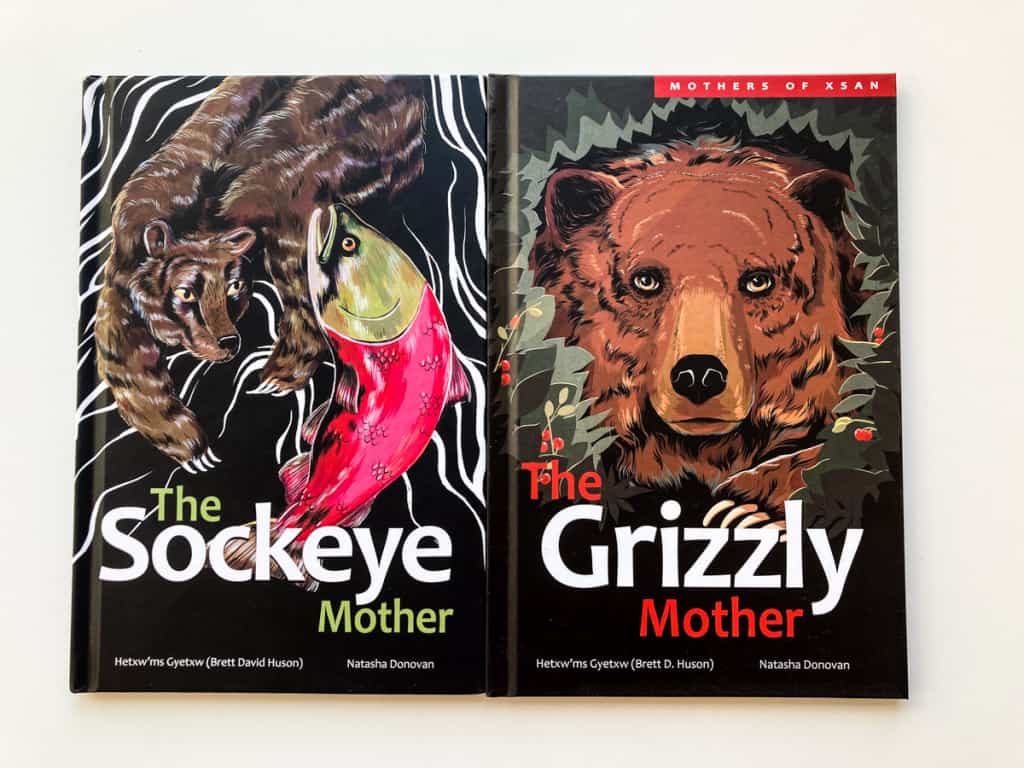
Books by Indigenous Authors
The best books for kids and adults.
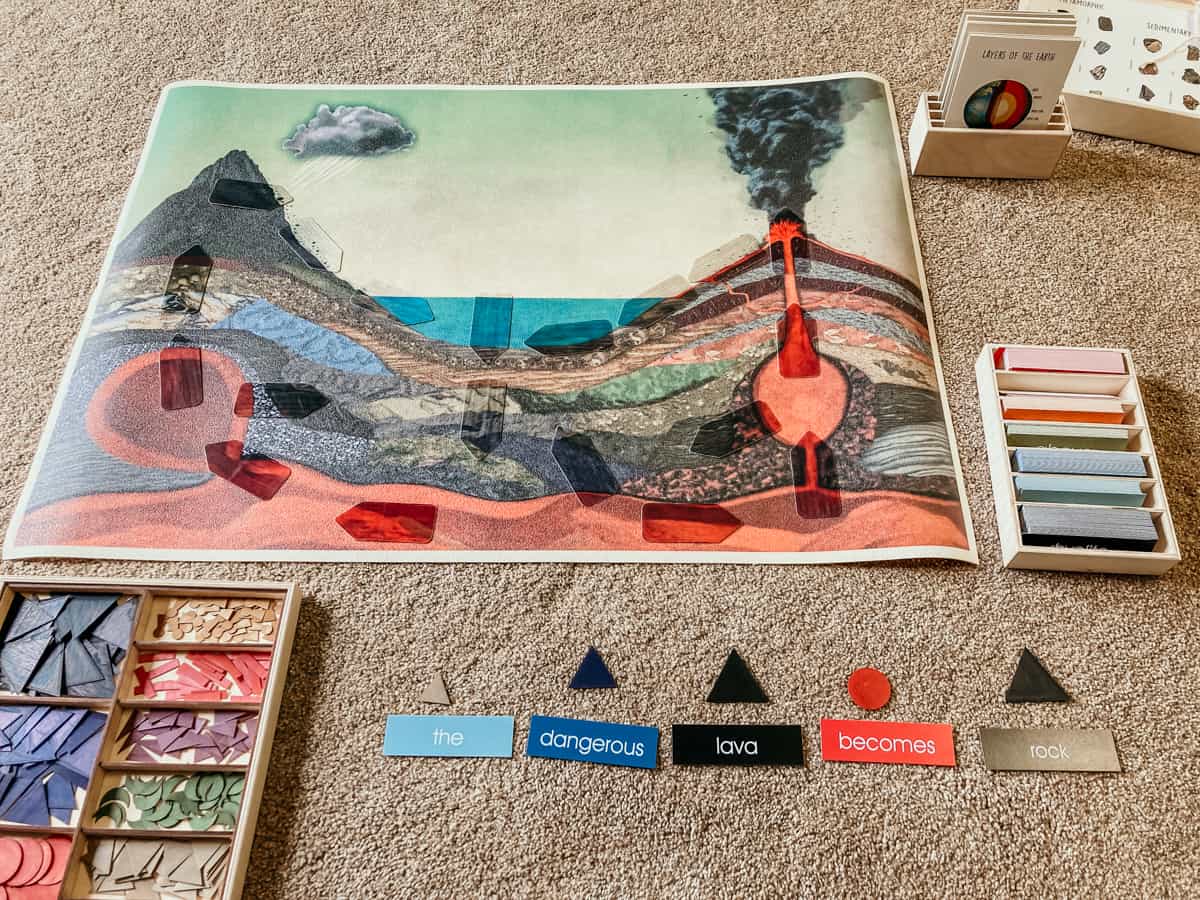
Rock Cycle Shelf Work
- Rock Cycle Mat by Waseca Biomes
The rock cycle mat can be used to further explore the layers of the earth and to introduce the rock cycle. Children will learn about igneous, sedimentary, and metamorphic rock processes using a hands-on approach.
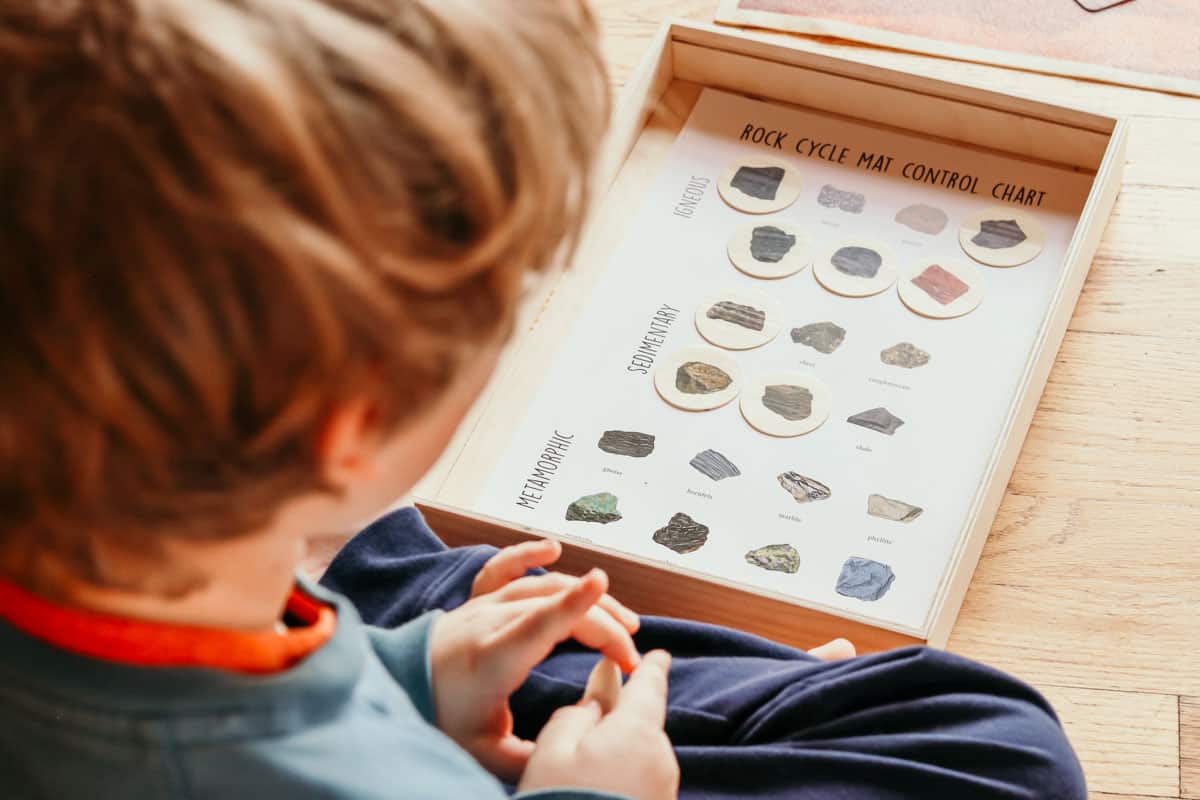
The mat also encourages kids to explore language and can be revisited as follow-up work to grammar lessons.
Get $15 off your first Waseca Biomes purchase.
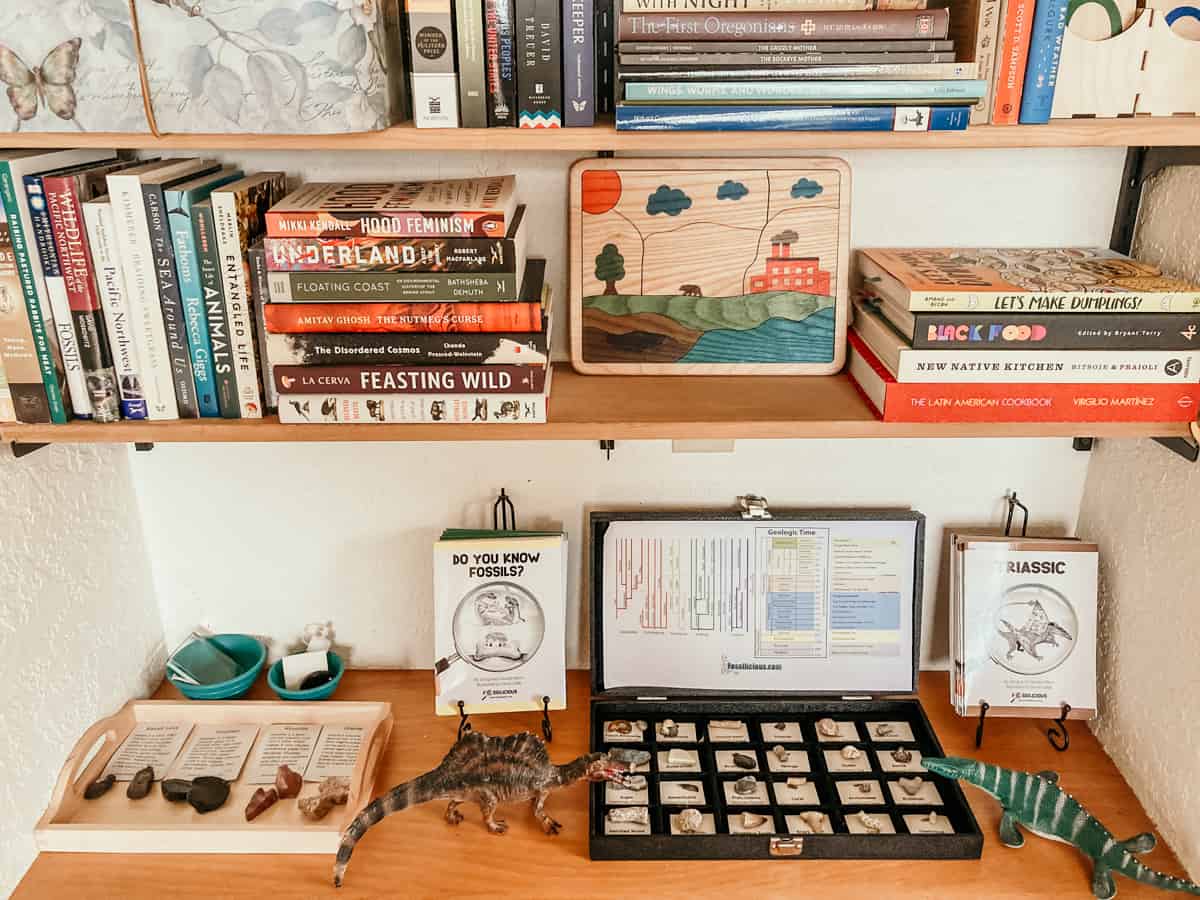
Rocks, Fossils, and Prehistoric Animals
- Mineral ID Kit - Streak Plate, Glass Plate, Magnet, Nail, Copper Square, & more
- Fossilicious Rock and Mineral Collection with Complete Curriculum (Igneous pictured)
- Fossilicious Paleontology for Kids Books and Fossil Set
- Schleich Prehistoric Animals Collection (Spinosaurus and Mosasaurus pictured)
- Creative Beast Studio Beasts of the Mesozoic Collection
The rock and mineral collection includes a complete curriculum and is a comprehensive learning experience for kids interested in geology. The mineral id kit can be used to help kids discover the properties of various rocks and minerals.
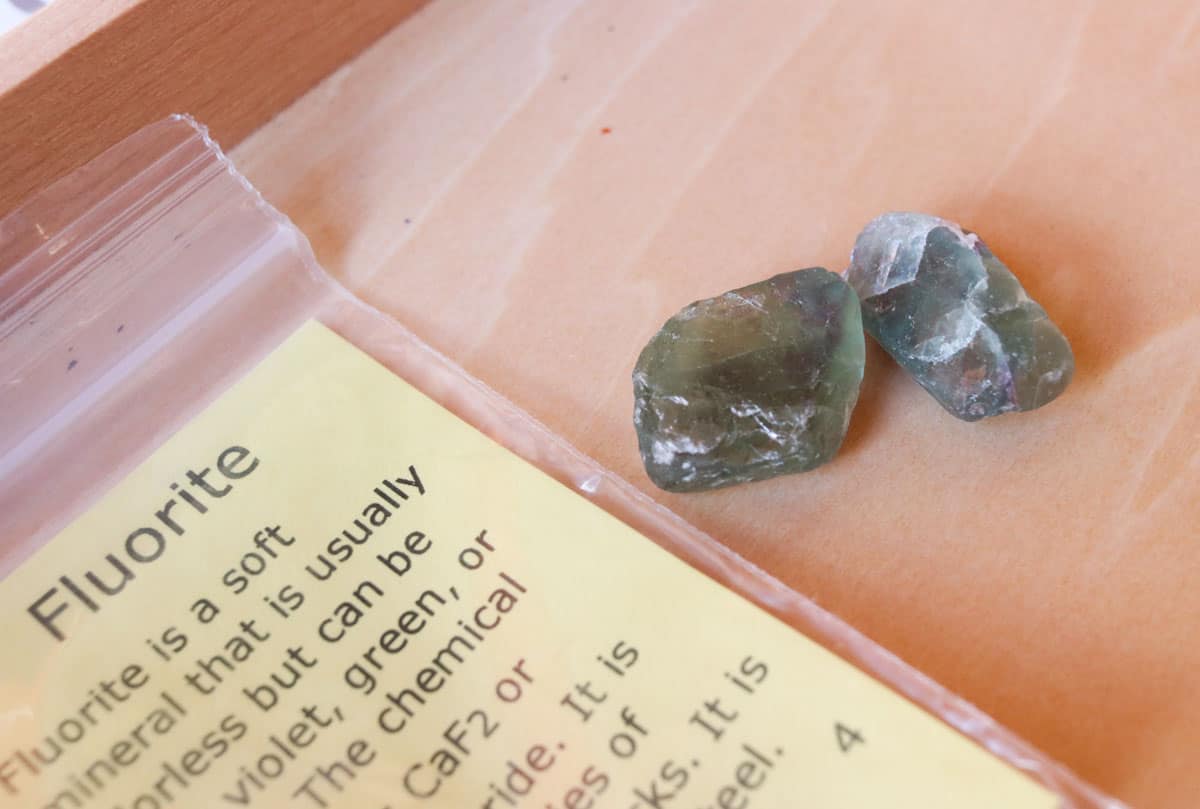
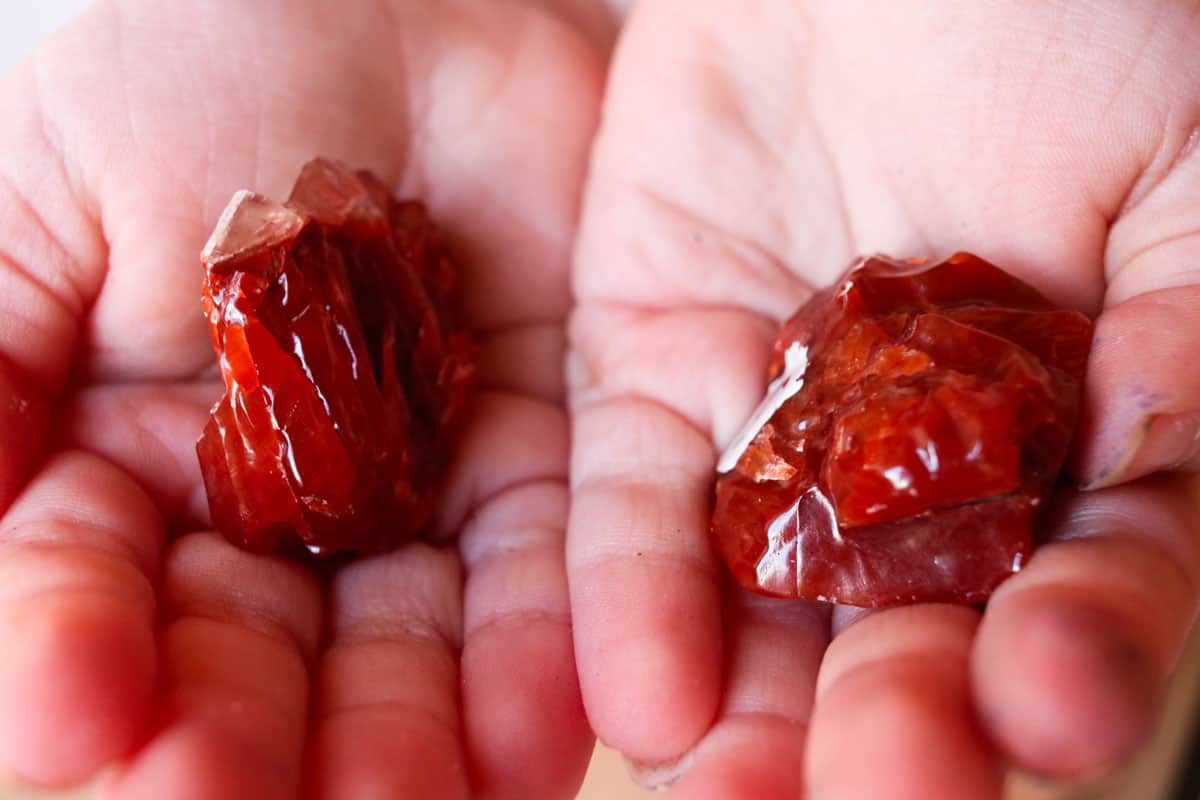
Paleontology for Kids
This complete Book and Fossil set includes a display box!
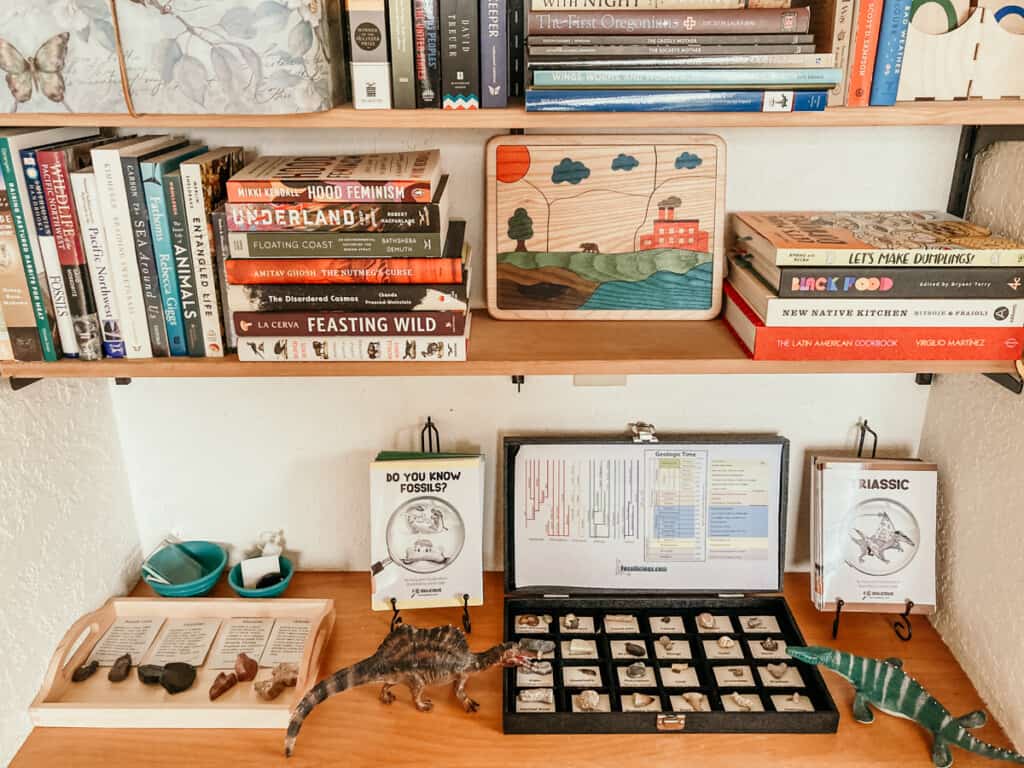
The paleontology books and fossil set are an exciting collection of materials for aspiring paleontologists and anyone interested in fossils. We've found many cross-curricular opportunities for engaging with these materials and the books contain just the right amount of information to keep kids interested as they explore their favorite topics.
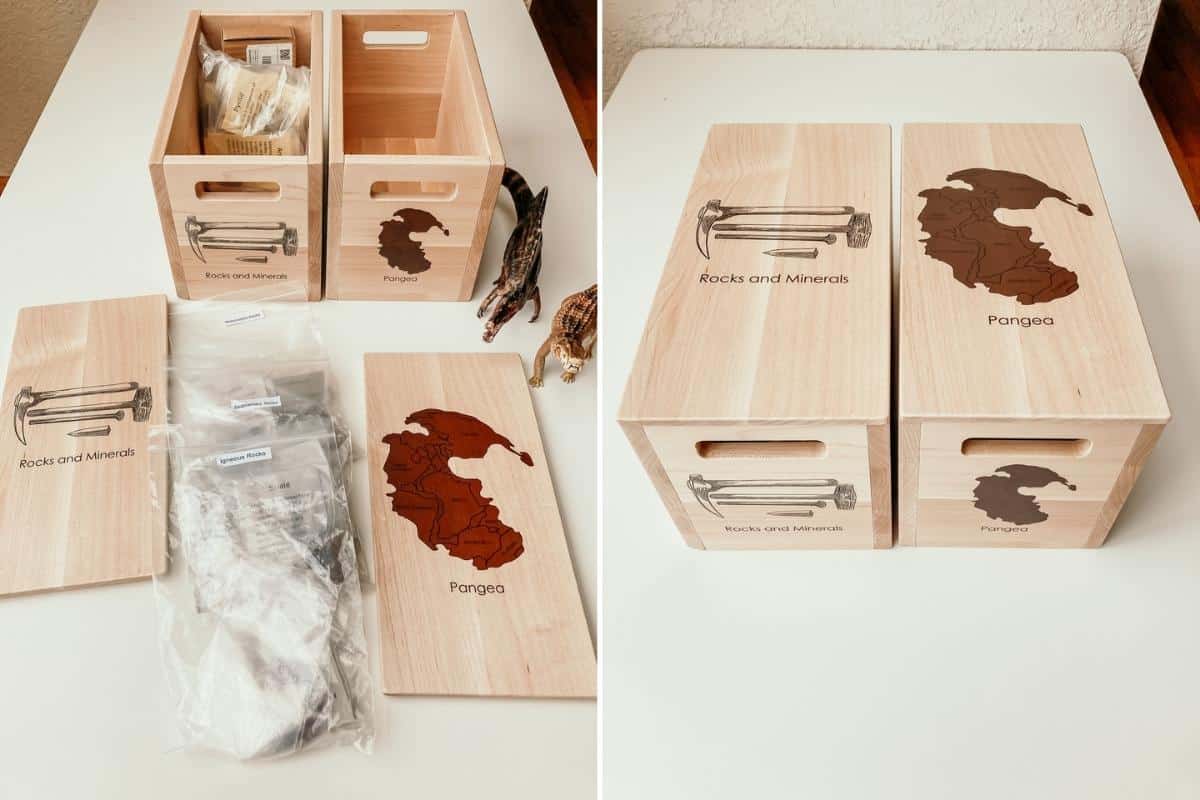
These custom boxes hold our Fossilicious Rocks and Minerals collection as well as our collection of Schleich prehistoric animals, including dinosaurs.
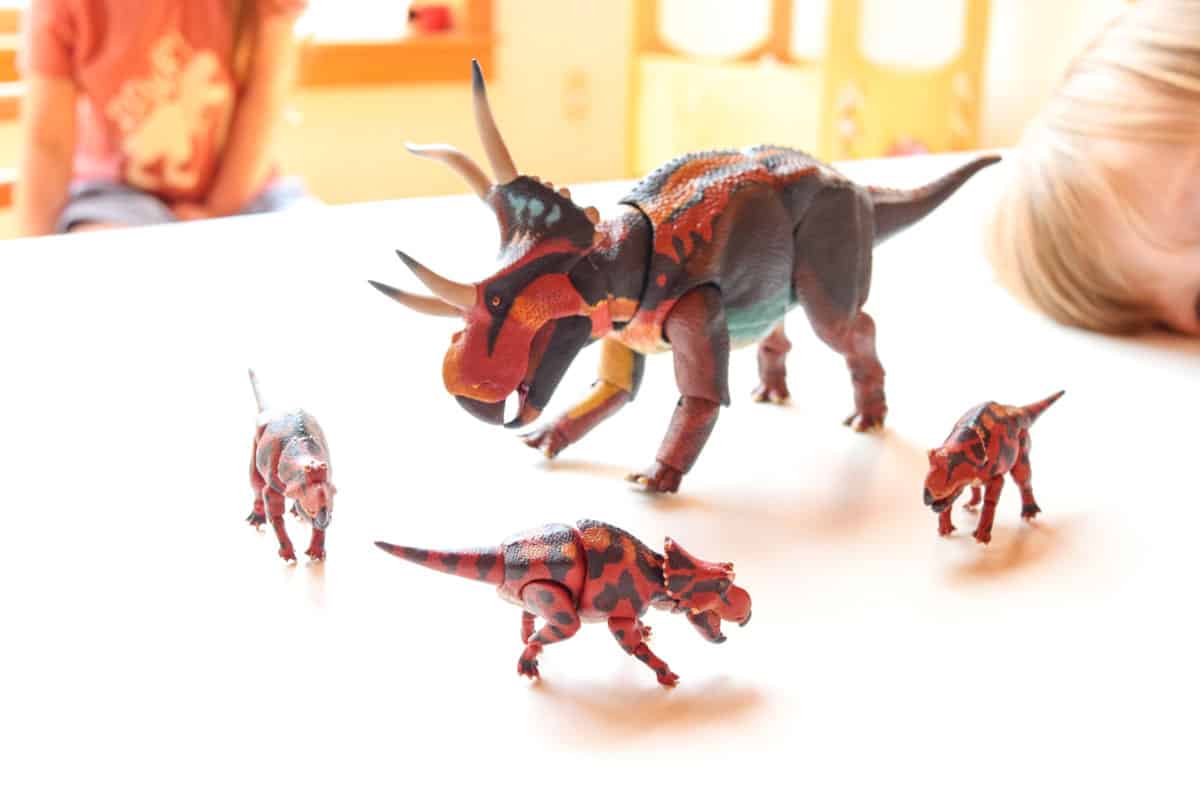
If you really want to up your prehistoric animal game, Creative Beast Studio's Beasts of the Mesozoic has incredible prehistoric animal action figures. The Diabloceratops eatoni and Baby Diabloceratops pictured above are from the Ceratopsian series and they're awesome to play with, not to mention gorgeous. We also like the Raptor series.
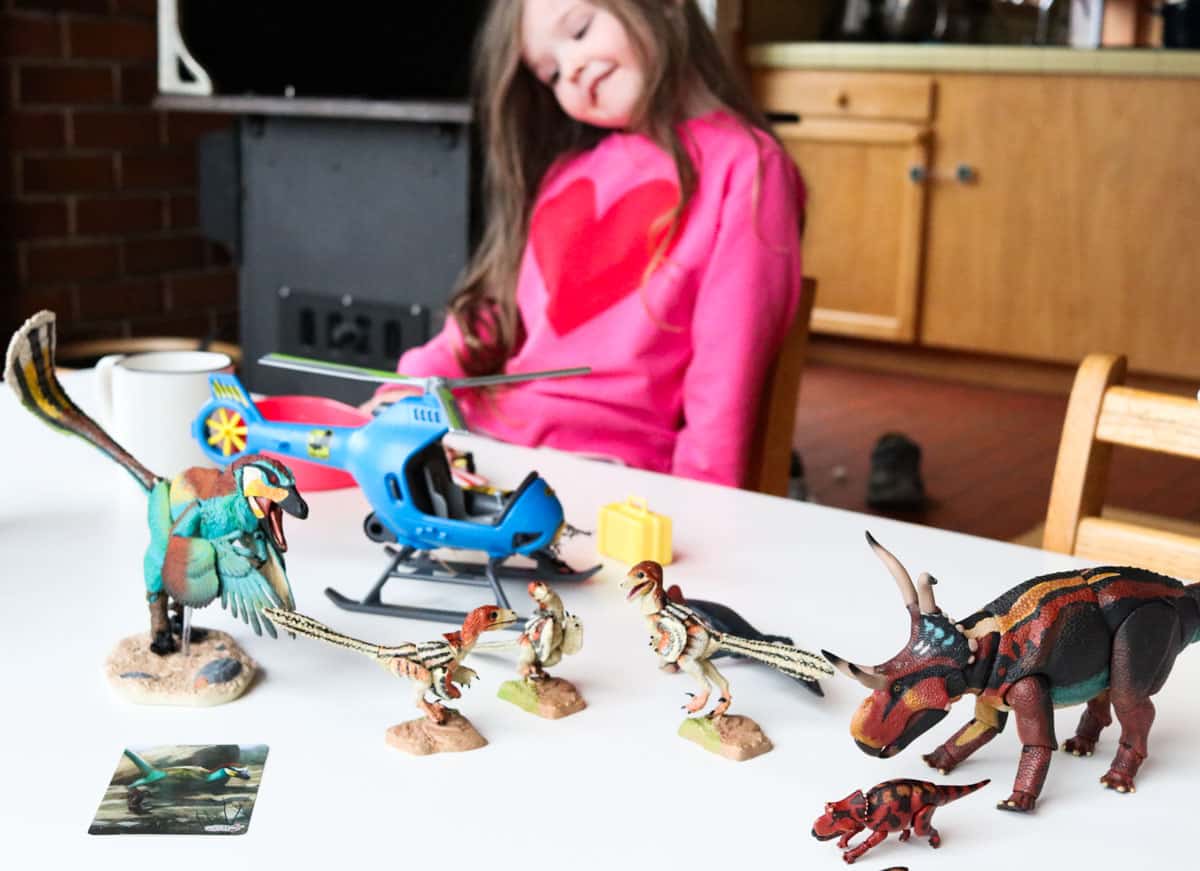
The points of articulation on each animal allow them to be poseable and much more life-like than their competitors. These action figures also come with cool collectible cards and stunning package art.
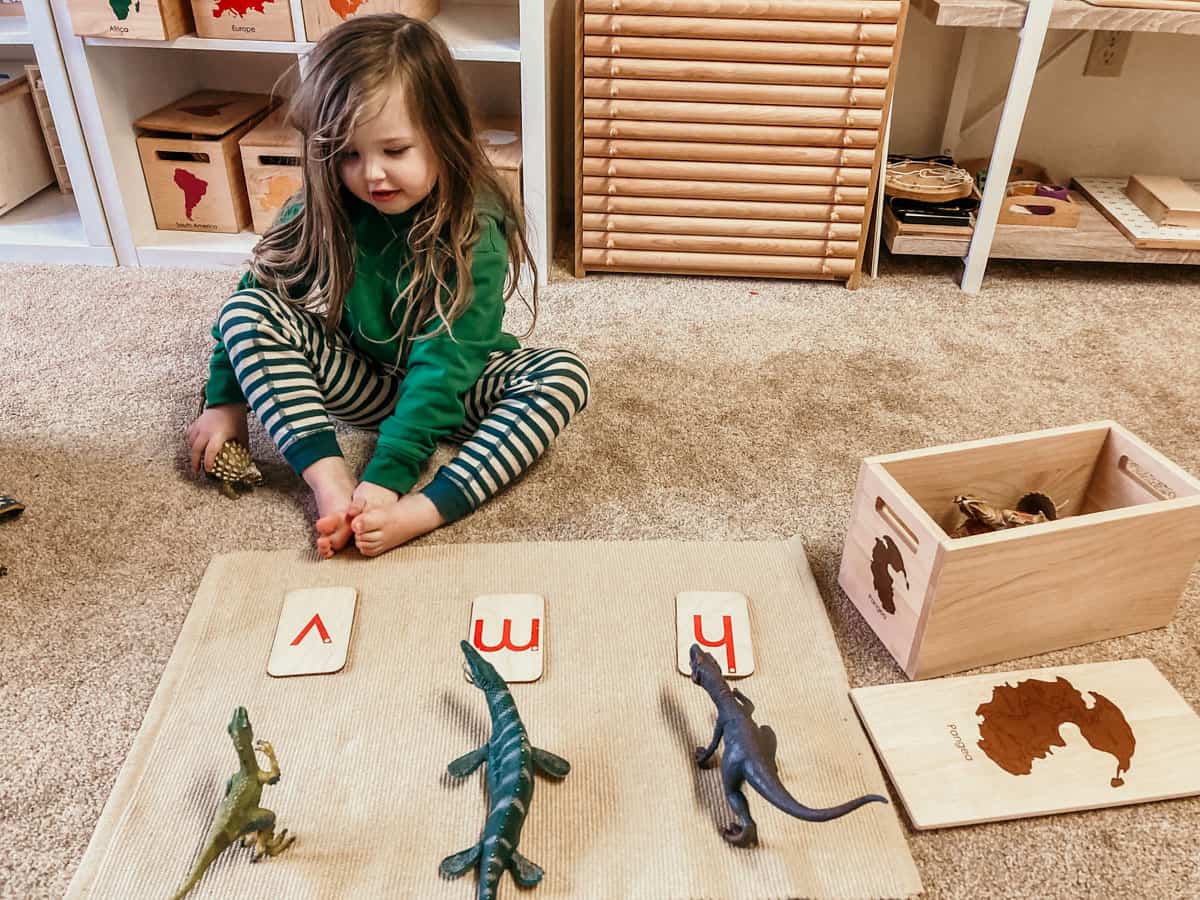
Did you know that prehistoric animals can help kids learn to read? In this lesson, Katalina matches Montessori lowercase sandpaper letters to the prehistoric animal with the same Beginning Letter Sound.
Tracing sandpaper letters with the index and middle fingers of the dominant hand and learning letter sounds facilitates word-building with the movable alphabet later on. Using your child's favorite animals can generate the most interest.
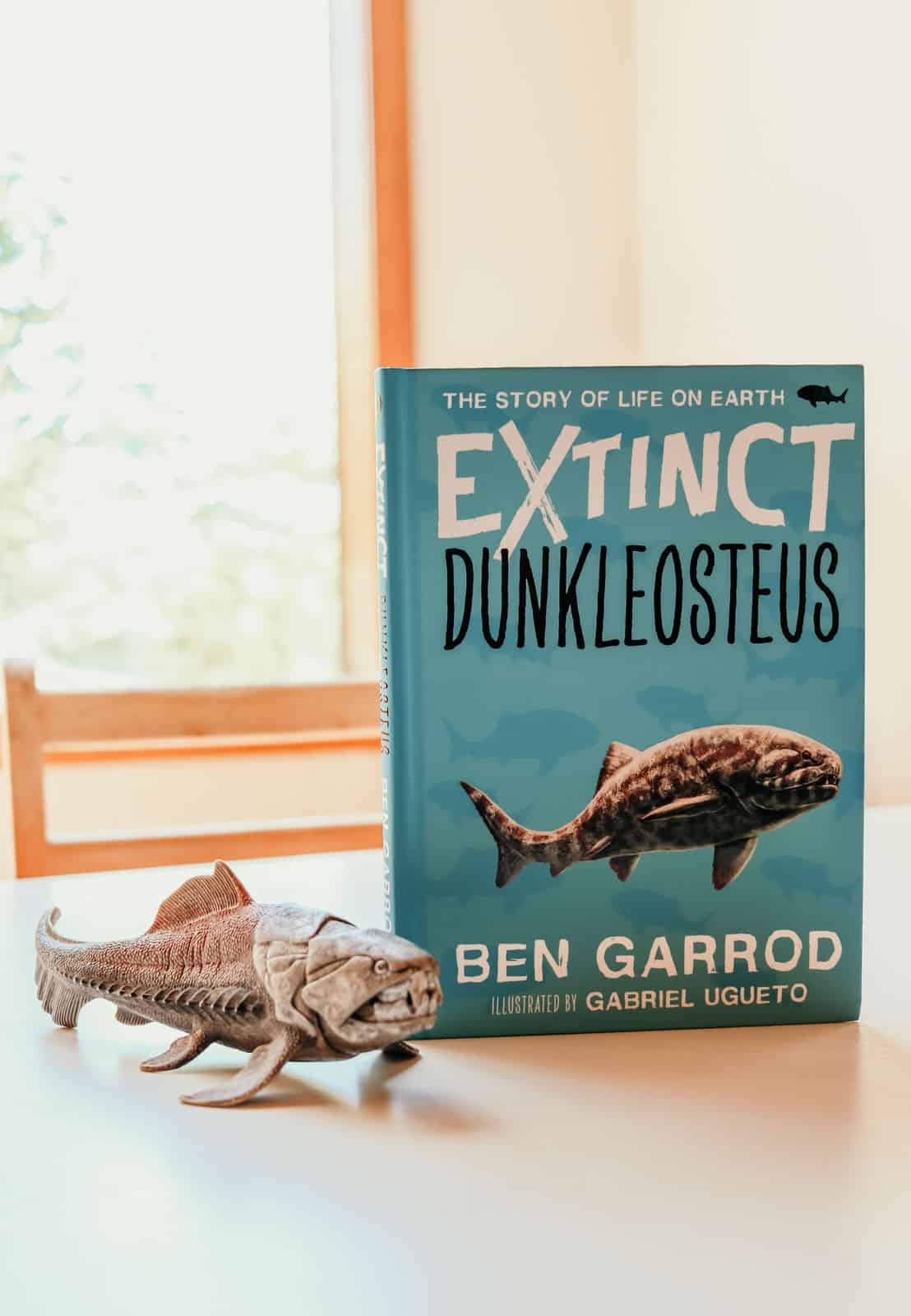
Want to learn more about your favorite prehistoric animals and the major mass extinction event they're associated with? You want Extinct: The Story of Life on Earth, a series by Ben Garrod with illustrations by Gabriel Ugueto.
This series is devoted to exploring the causes and effects of extinctions along with eight different animals, including Dunkleosteus.
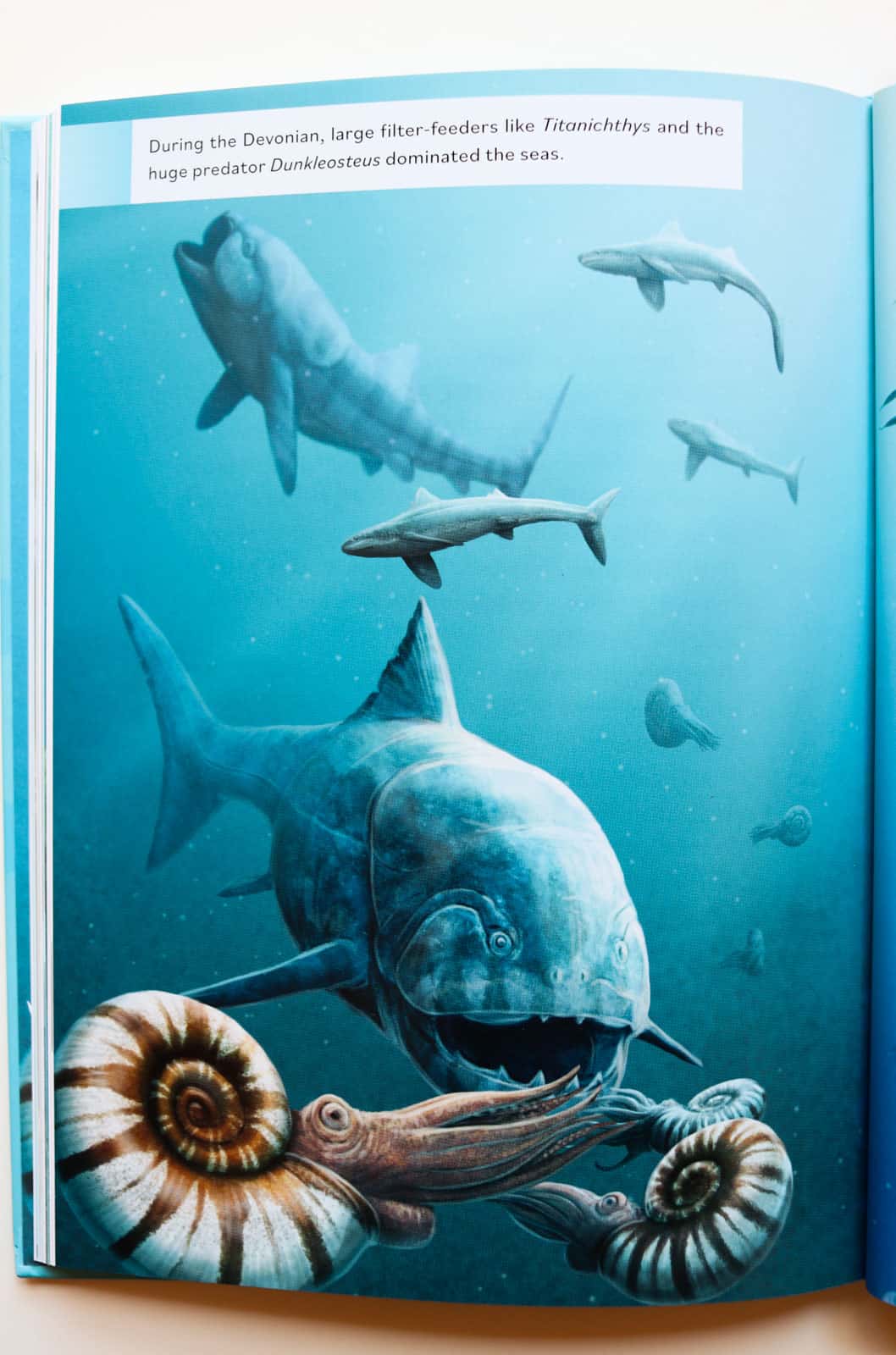
With incredible illustrations to entice readers of all ages, the Extinct books make it impossible not to fall in love with the past. Collect all 8 in the series.
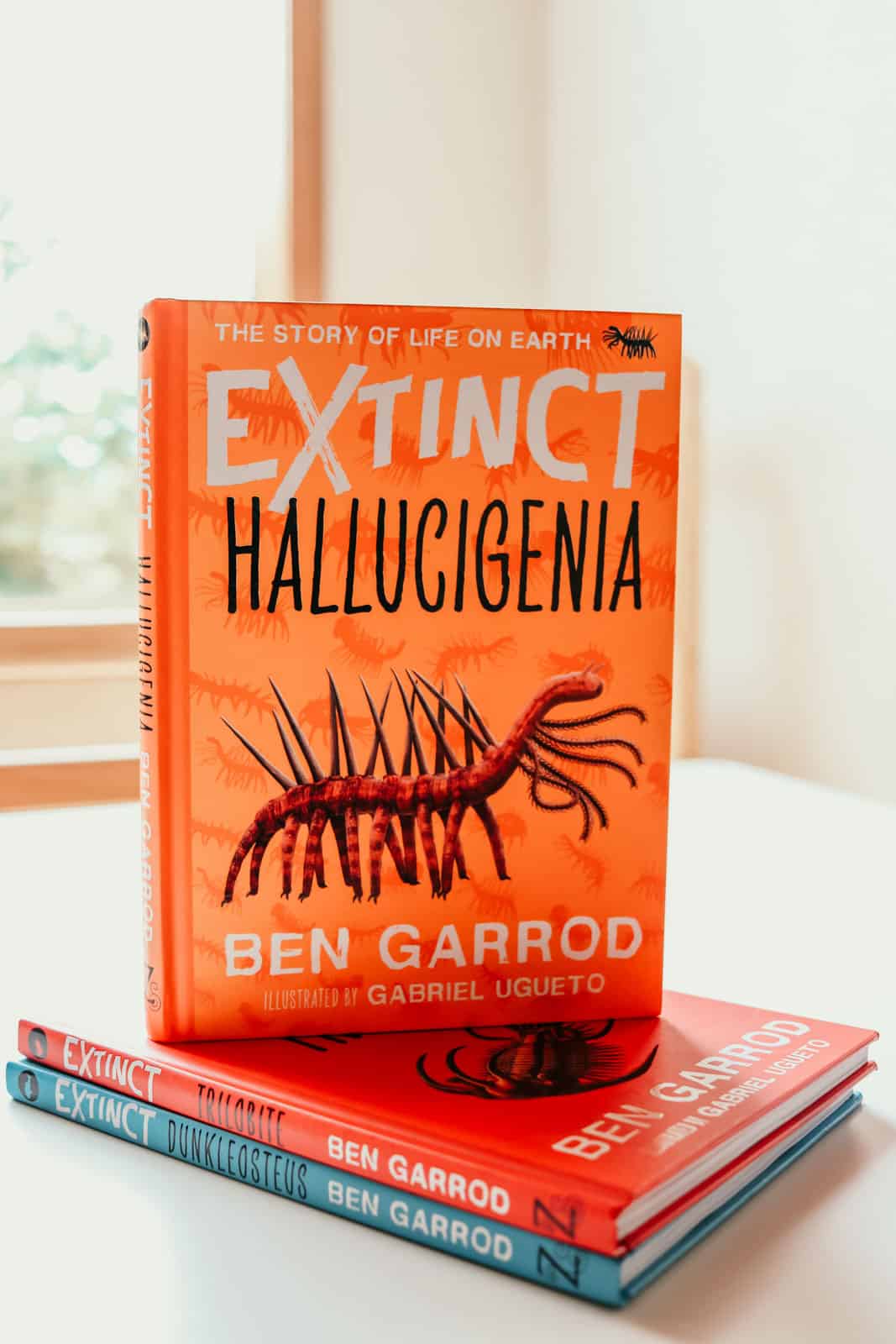
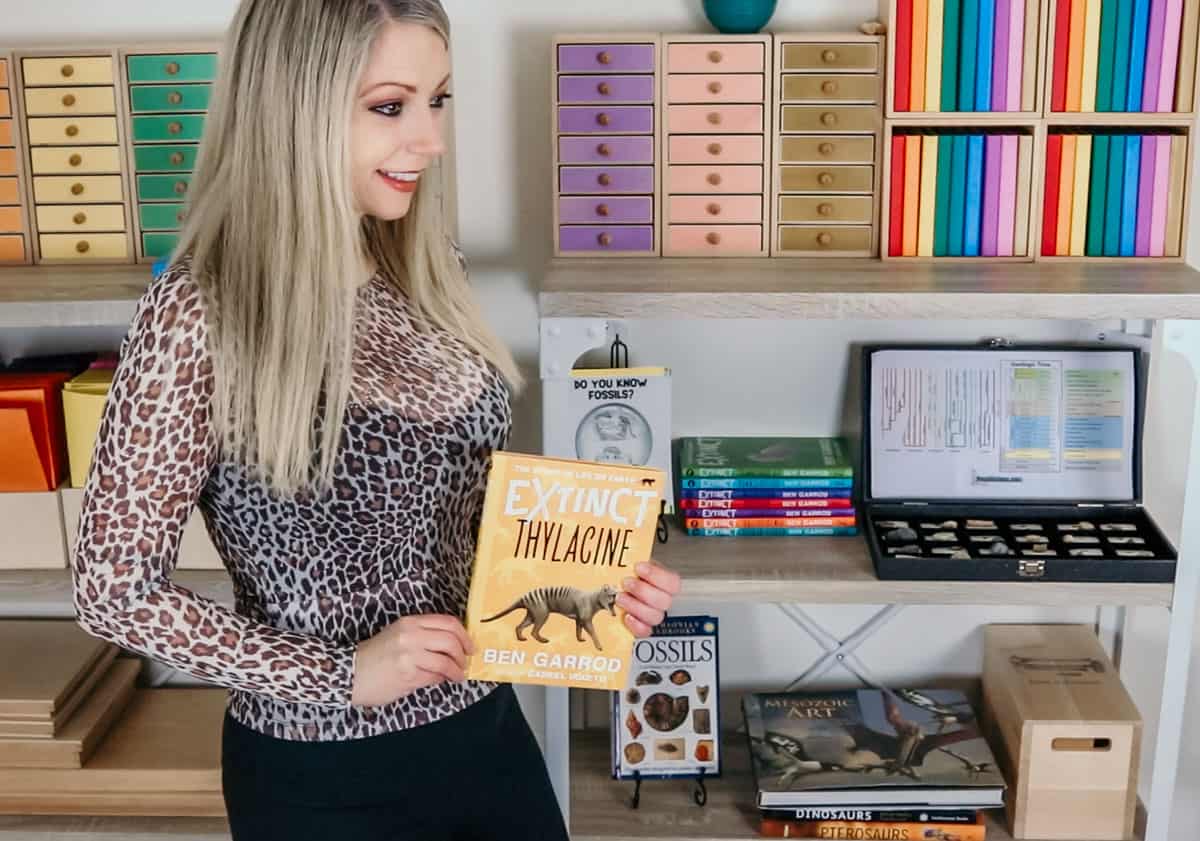
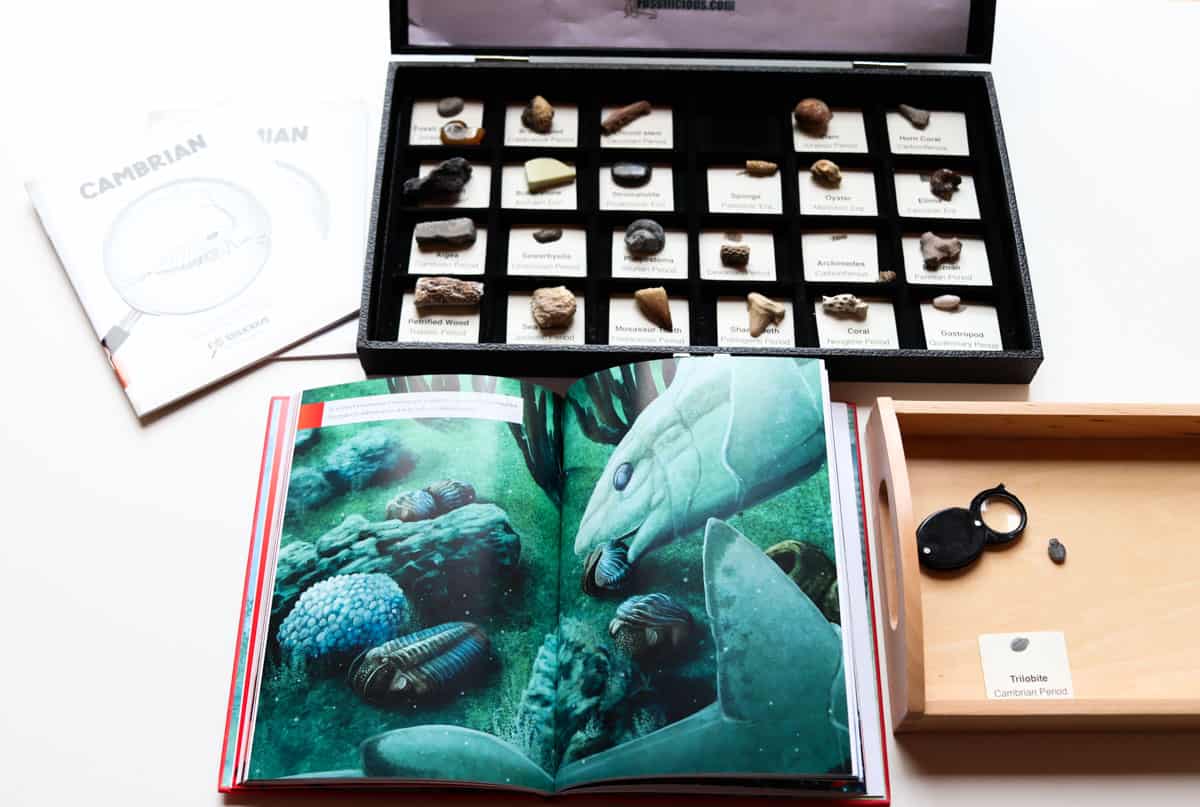
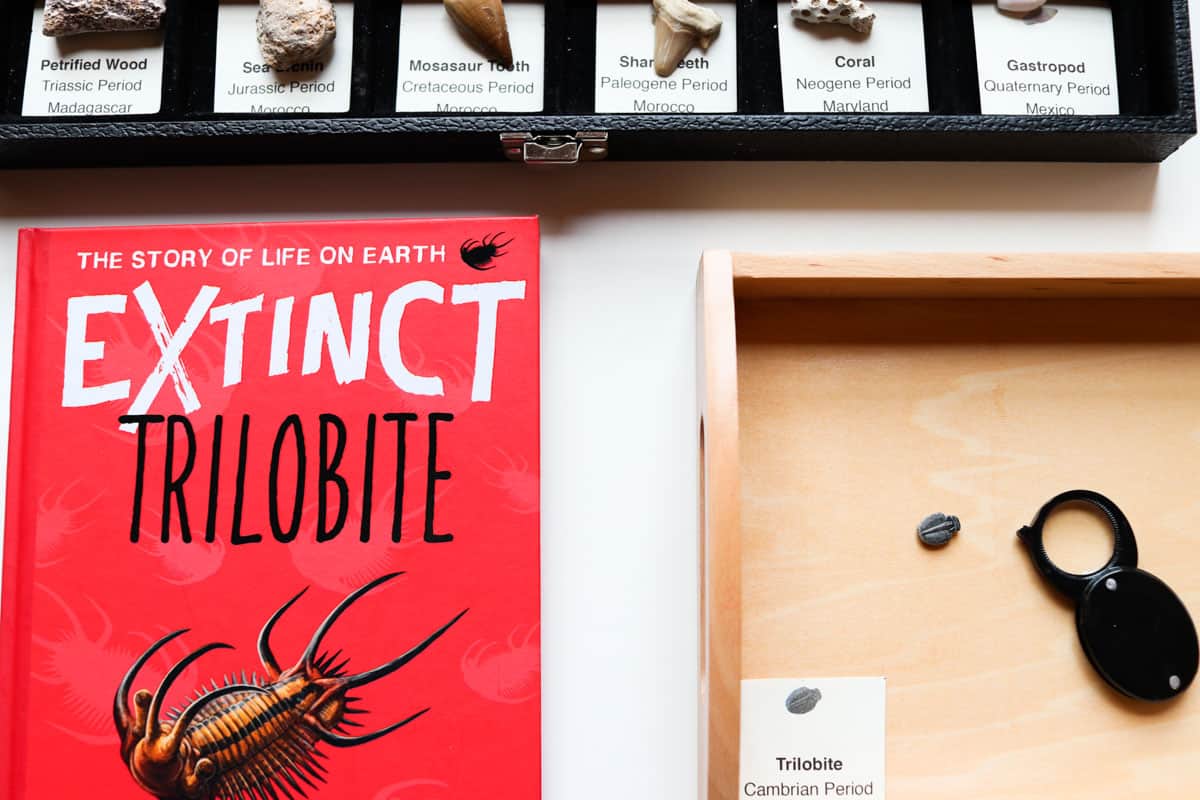
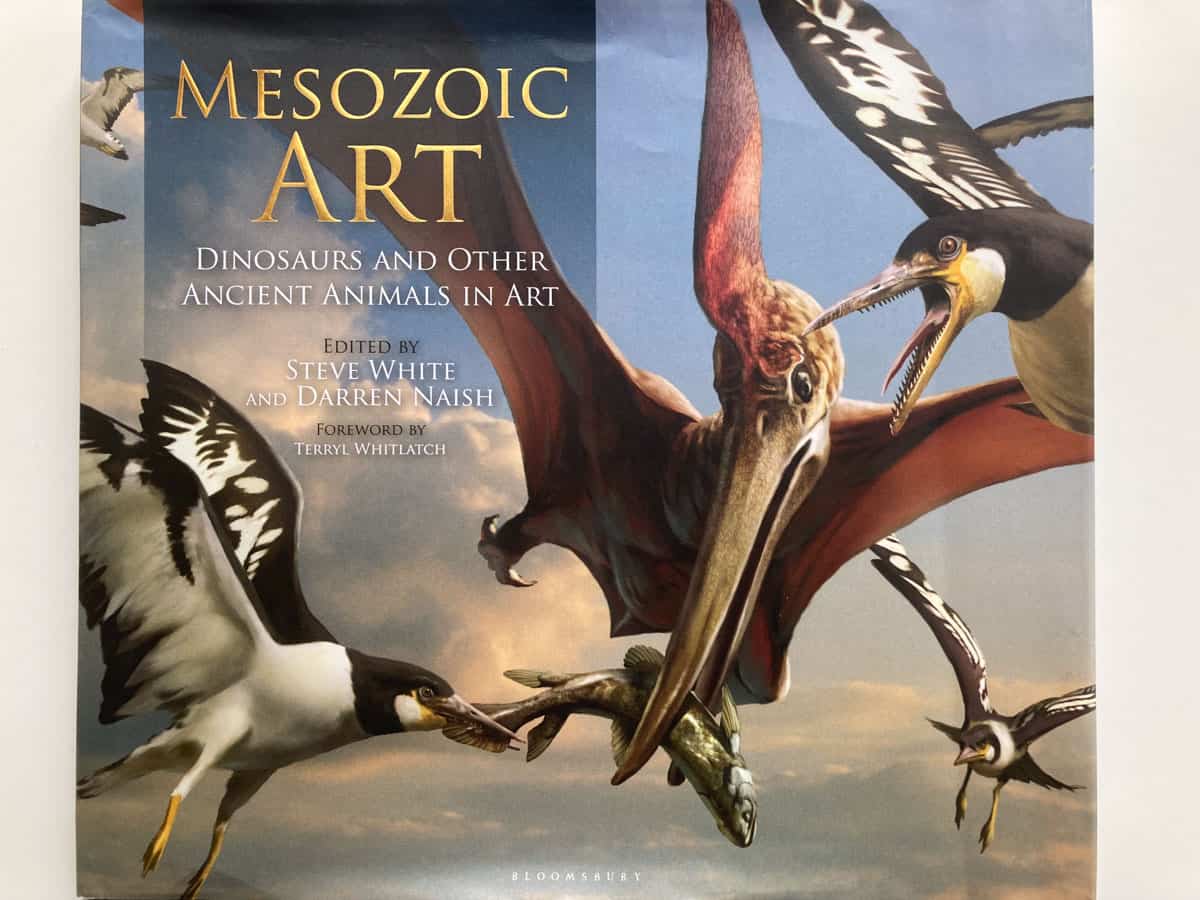
We can't get enough of Mesozoic Art: Dinosaurs and Other Ancient Animals in Art. Early Morning in Cretaceous Asia by Gabriel Ugueto is just one of the many breathtaking pieces you'll find in this collaborative collection of artwork.

Creating attractive displays on your homeschool shelves will entice interest in all things related to the history of earth.
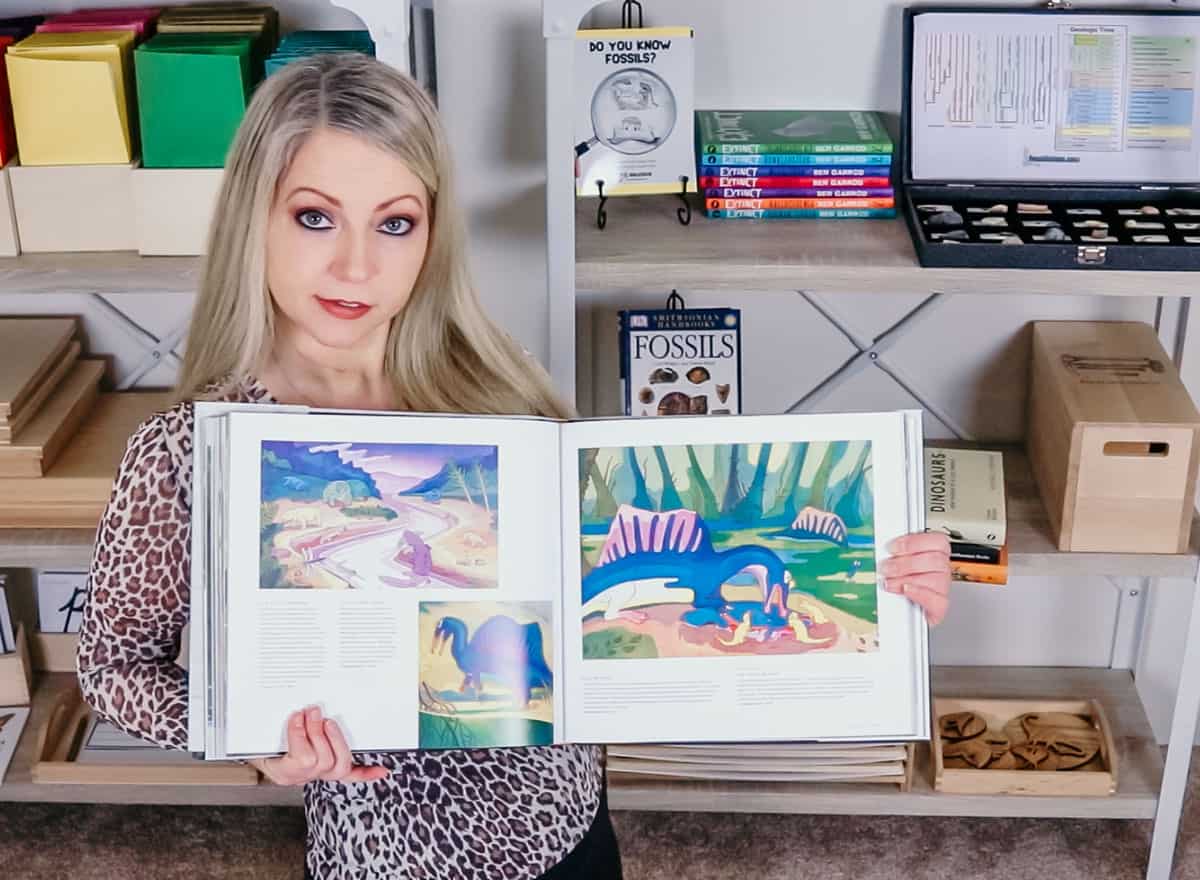
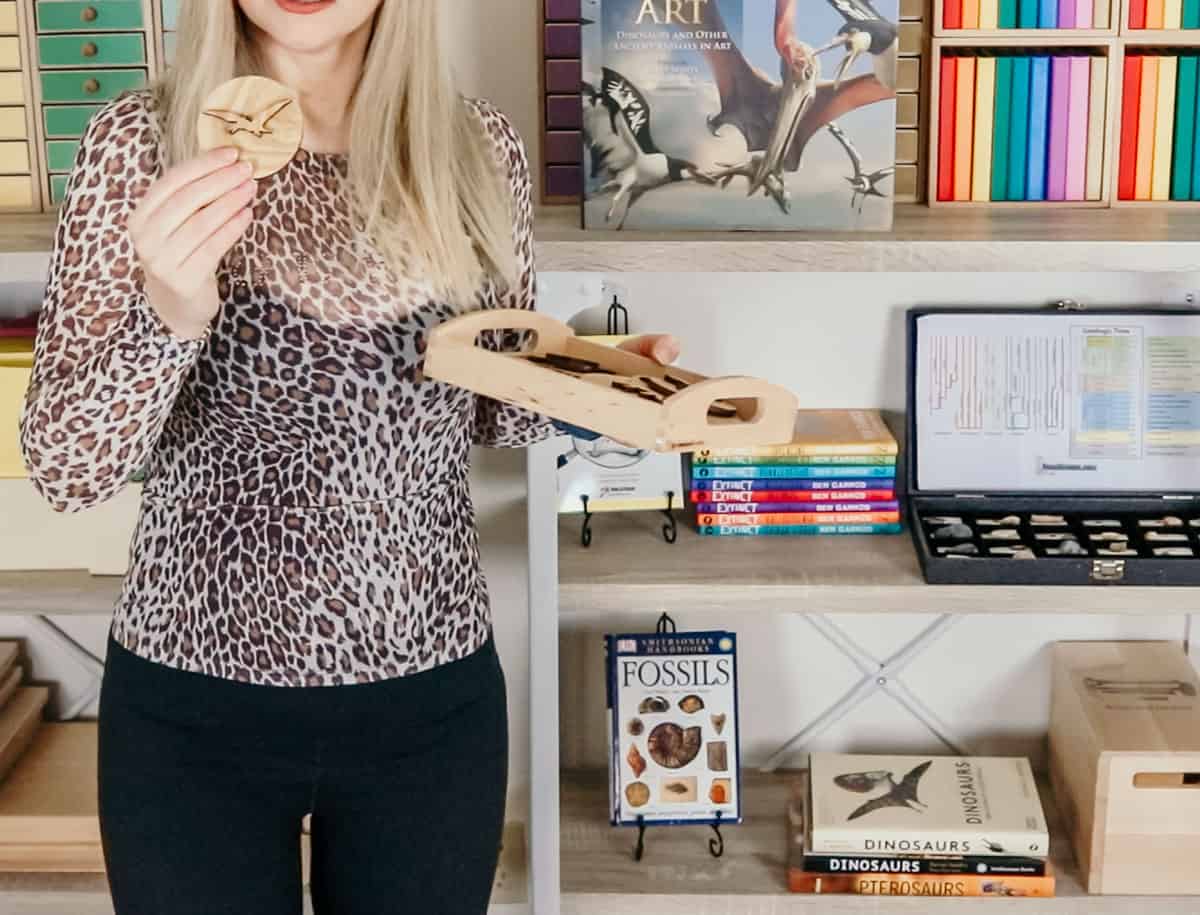
We like to use these Mirus Toys stampers with clay and dough as an extension to our lessons.
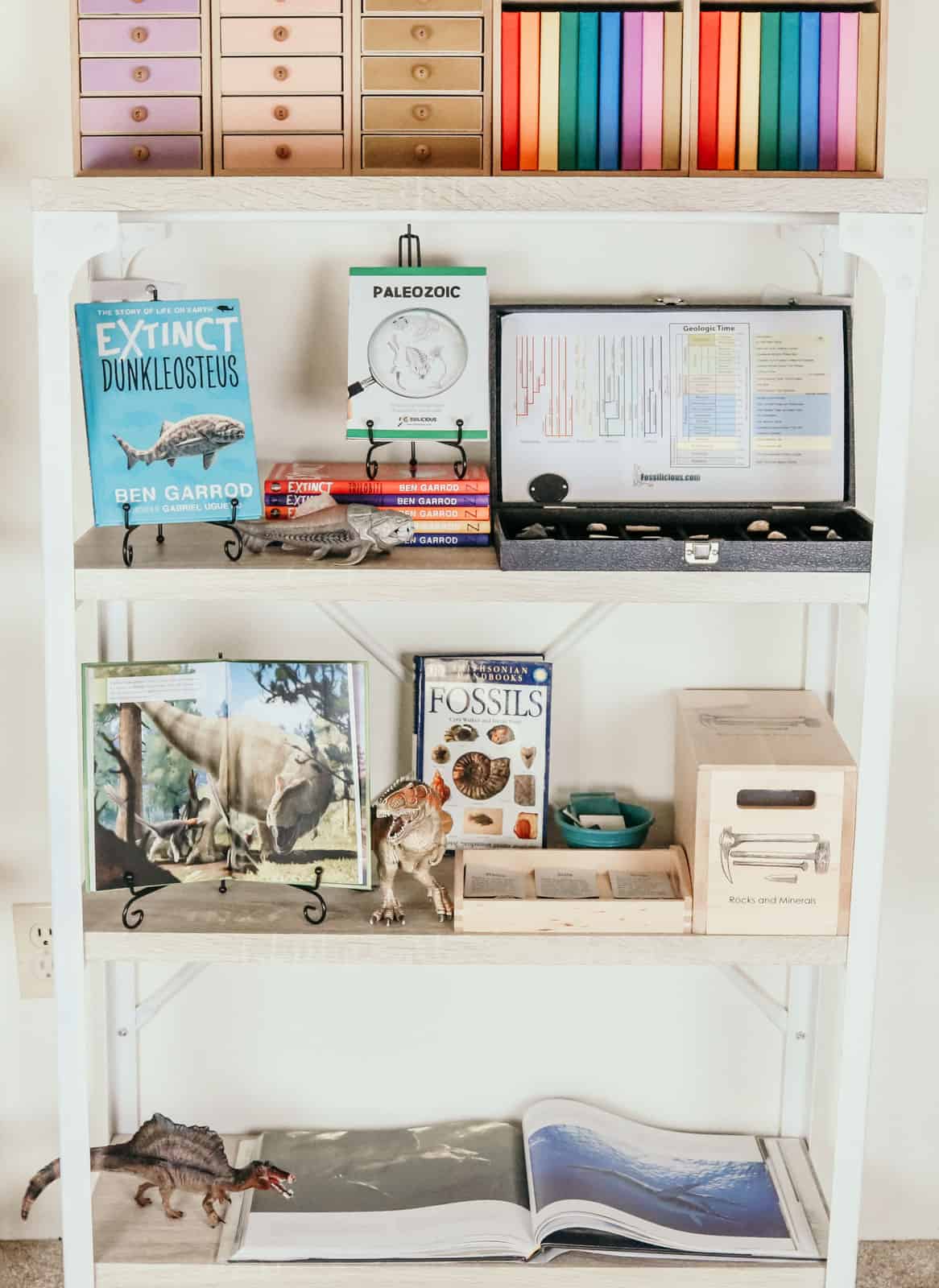
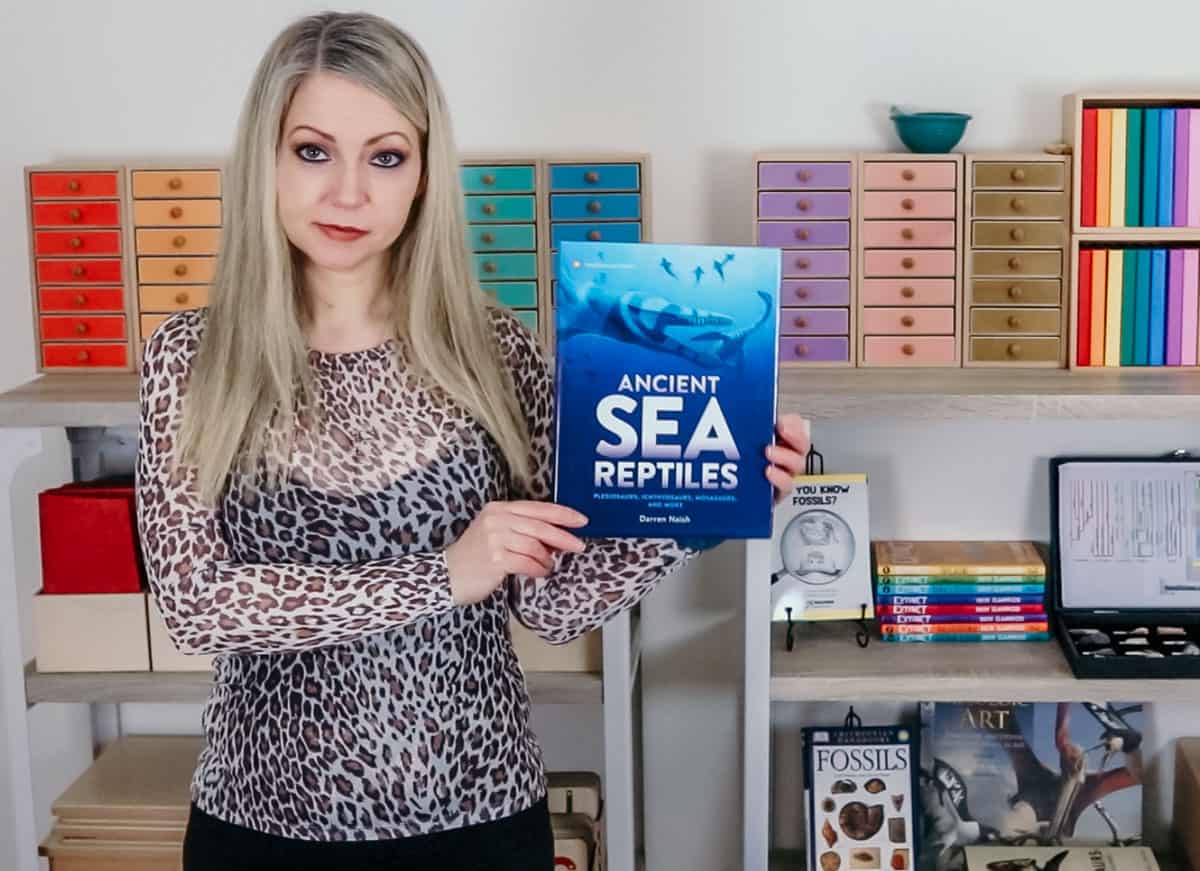
Dinosaur & Prehistoric Animal Books
Explore the Layers of the Earth with this Mirus Toys puzzle and companion guide!
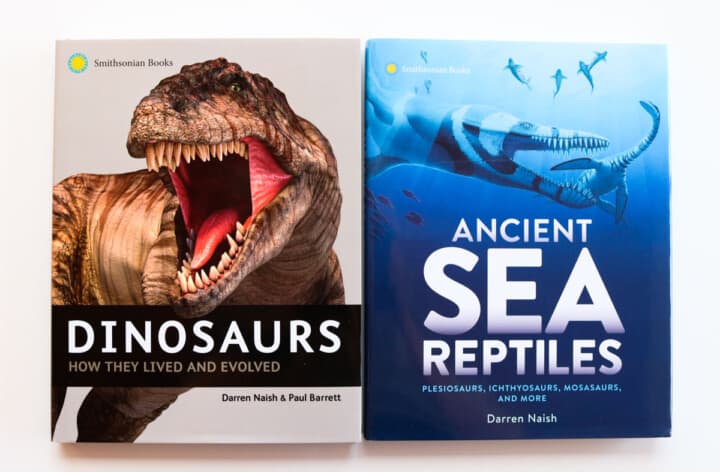
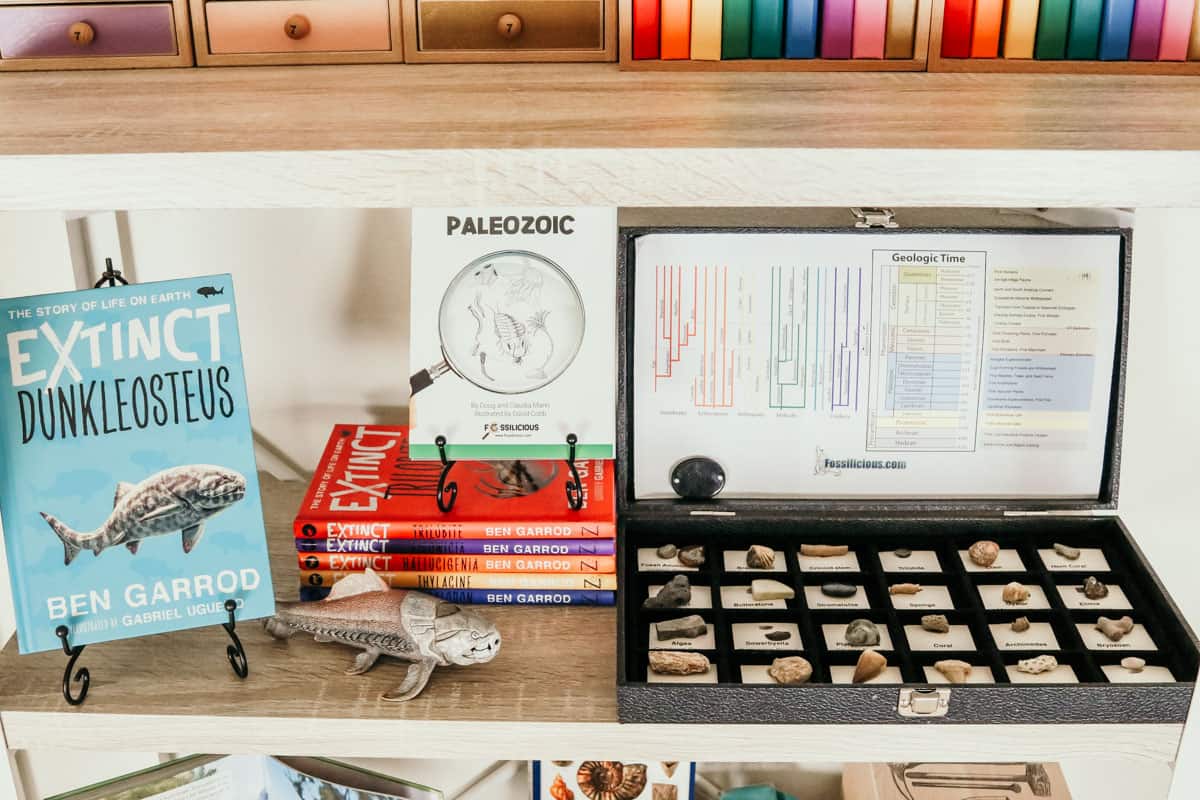
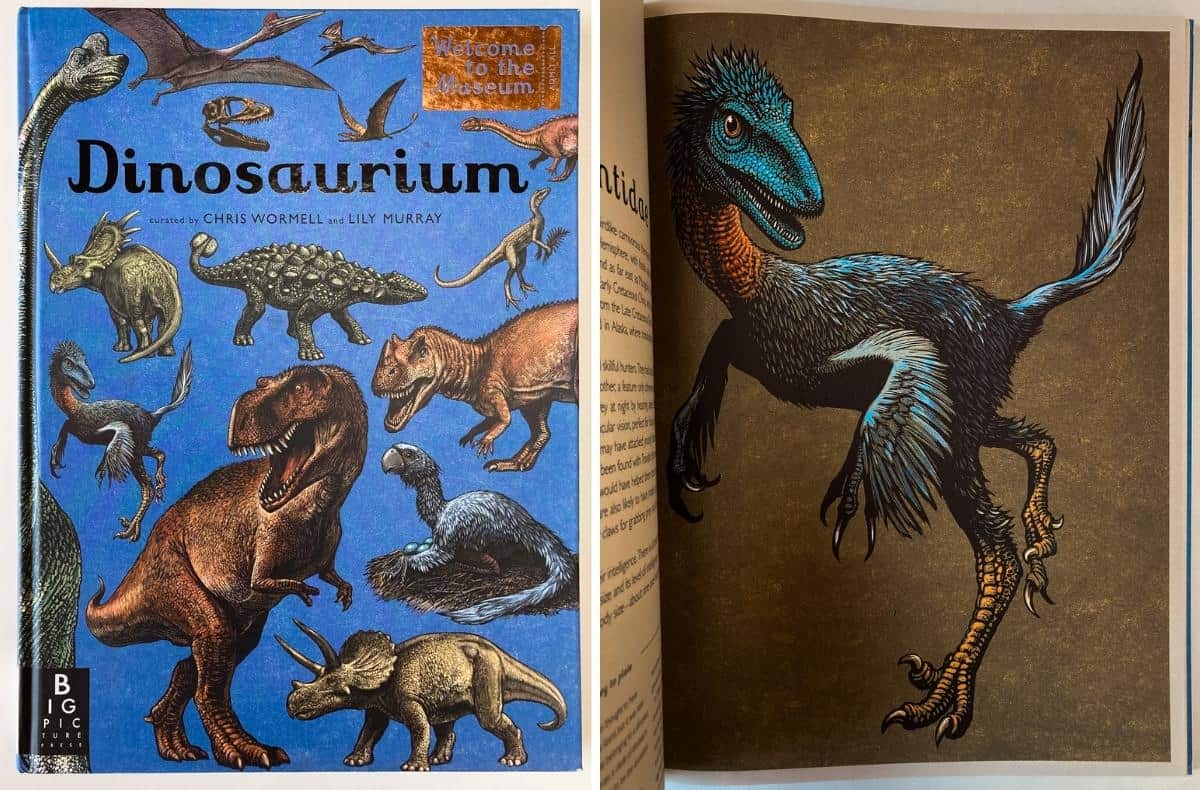
Learn about your favorite dinosaurs, dinosaur classification, and non-dinosaurs that are often mistaken for dinos with Dinosaurium: Welcome to the Museum.
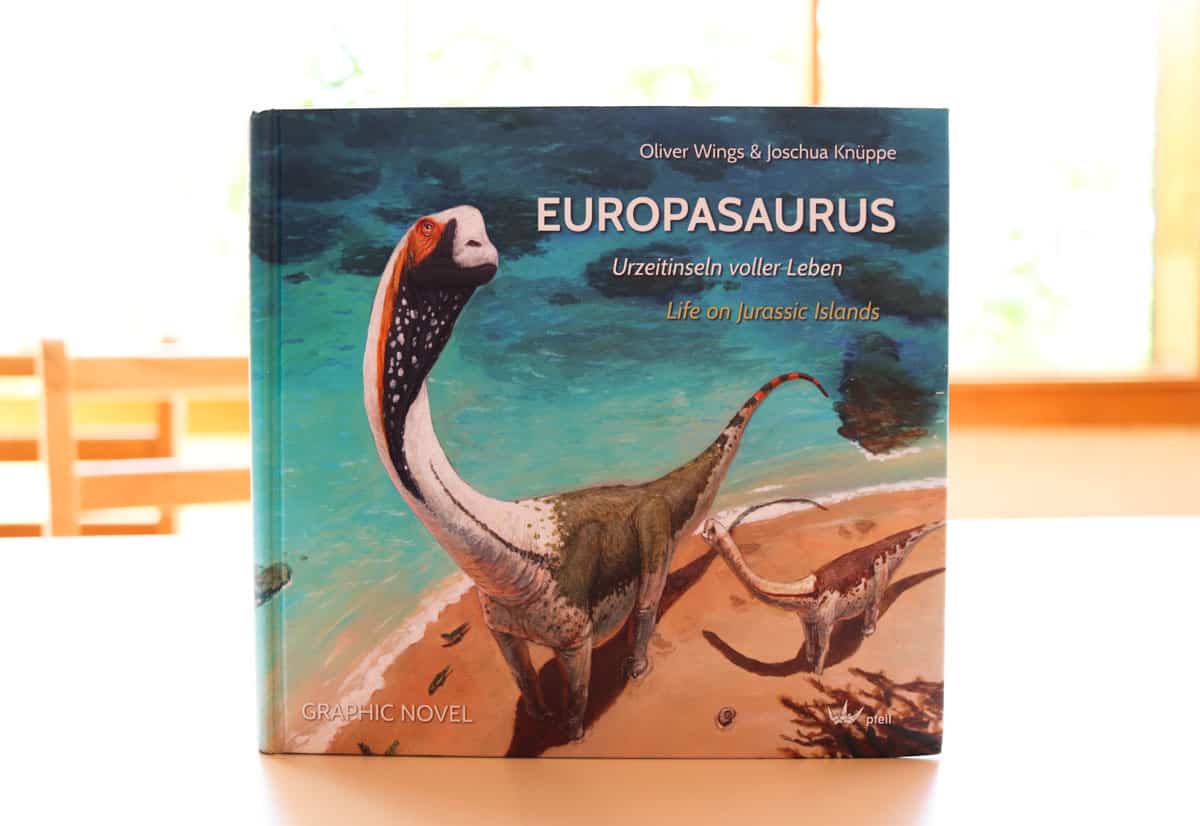
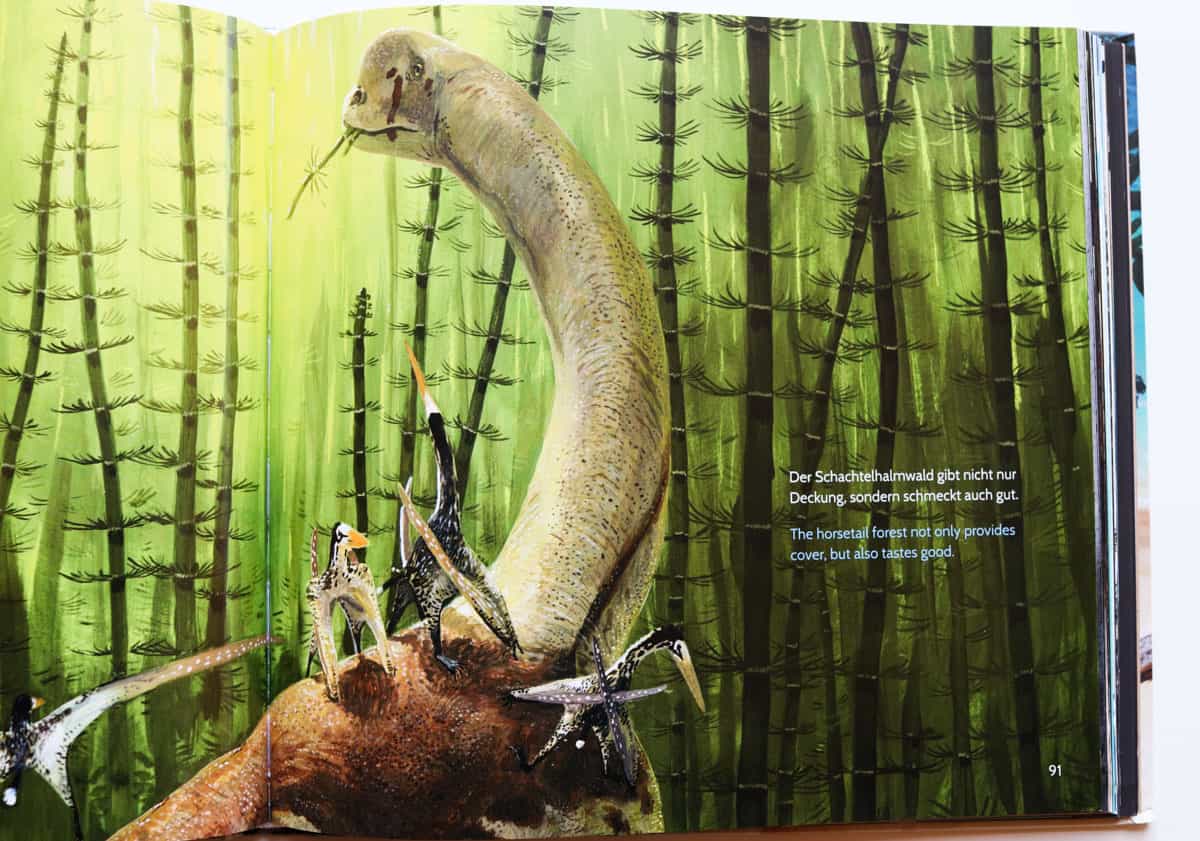
Europasaurus: Life on Jurassic Islands is an awesome bilingual graphic novel for anyone interested in dinosaurs or paleoart.
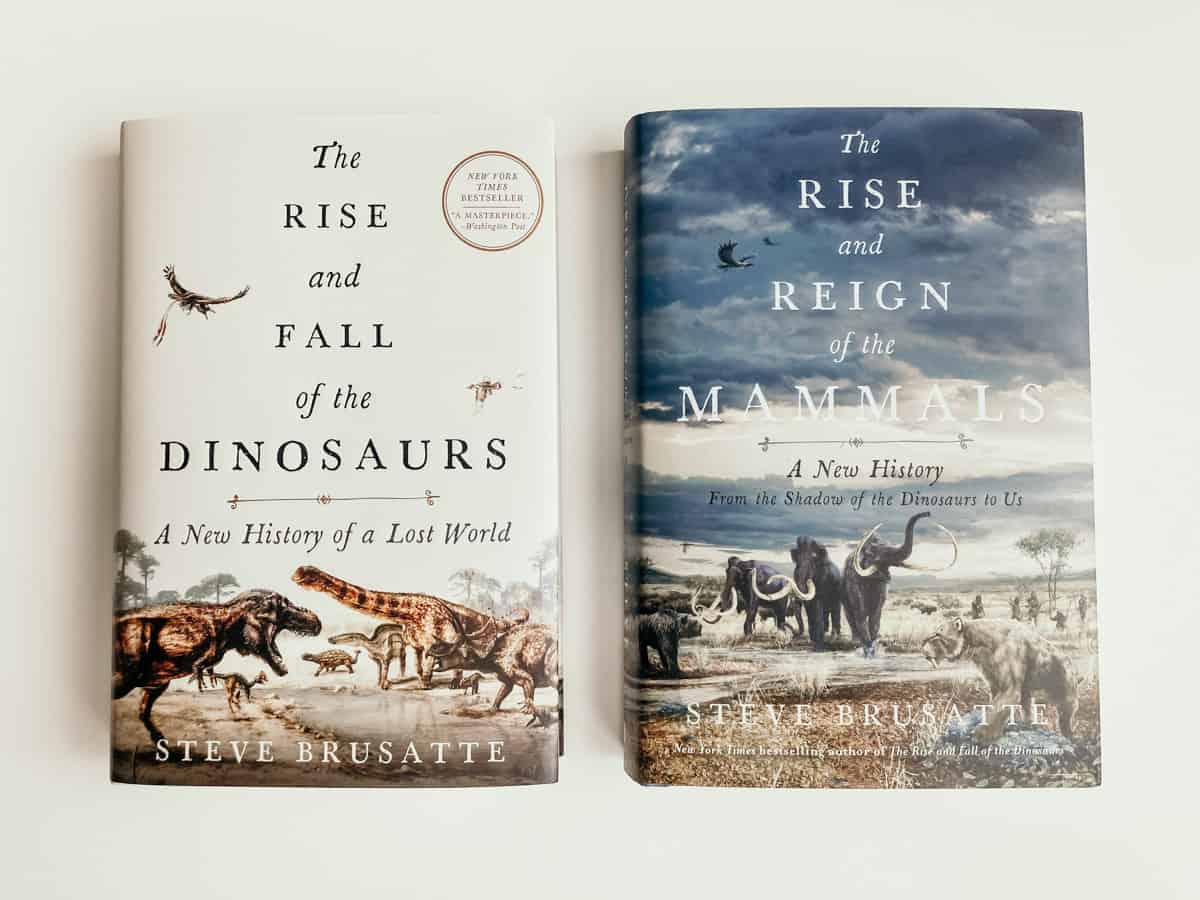
History of Earth Read-Aloud Duology
Not only are the covers of The Rise and Fall of the Dinosaurs and The Rise and Reign of the Mammals by Steve Brusatte absolutely stunning, but the illustrations and photographs found inside are also incredible. The very start of this duology includes a jolt of excitement and adrenaline, giving us another reason to look forward to our read-aloud experiences.
If you're looking for a read-aloud for your family or an independent read for elementary learners and up, you may be interested in these books.
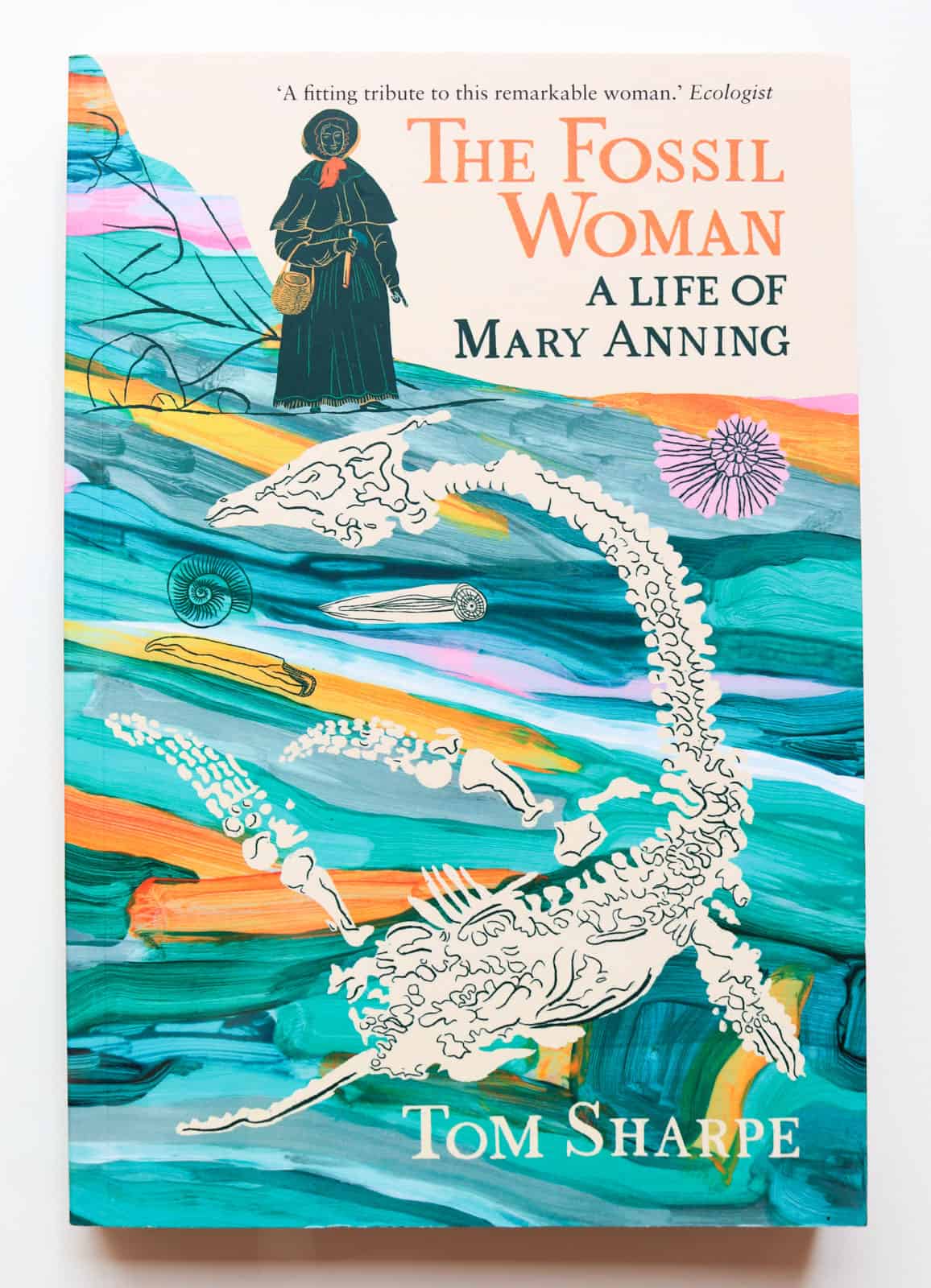
Biography of Mary Anning
If your kids are interested in fossils, they'll definitely want to read this biography of Mary Anning. The Fossil Woman: A Life of Mary Anning takes an in-depth look at one of the greatest fossil hunters to have lived.
Interesting History Topics
Find history books to explore your favorite topics!
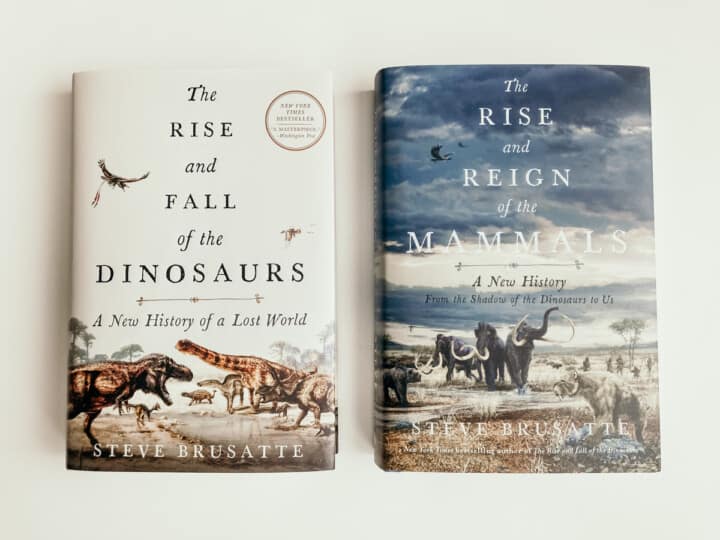
Discover new and favorite history books in our shop.
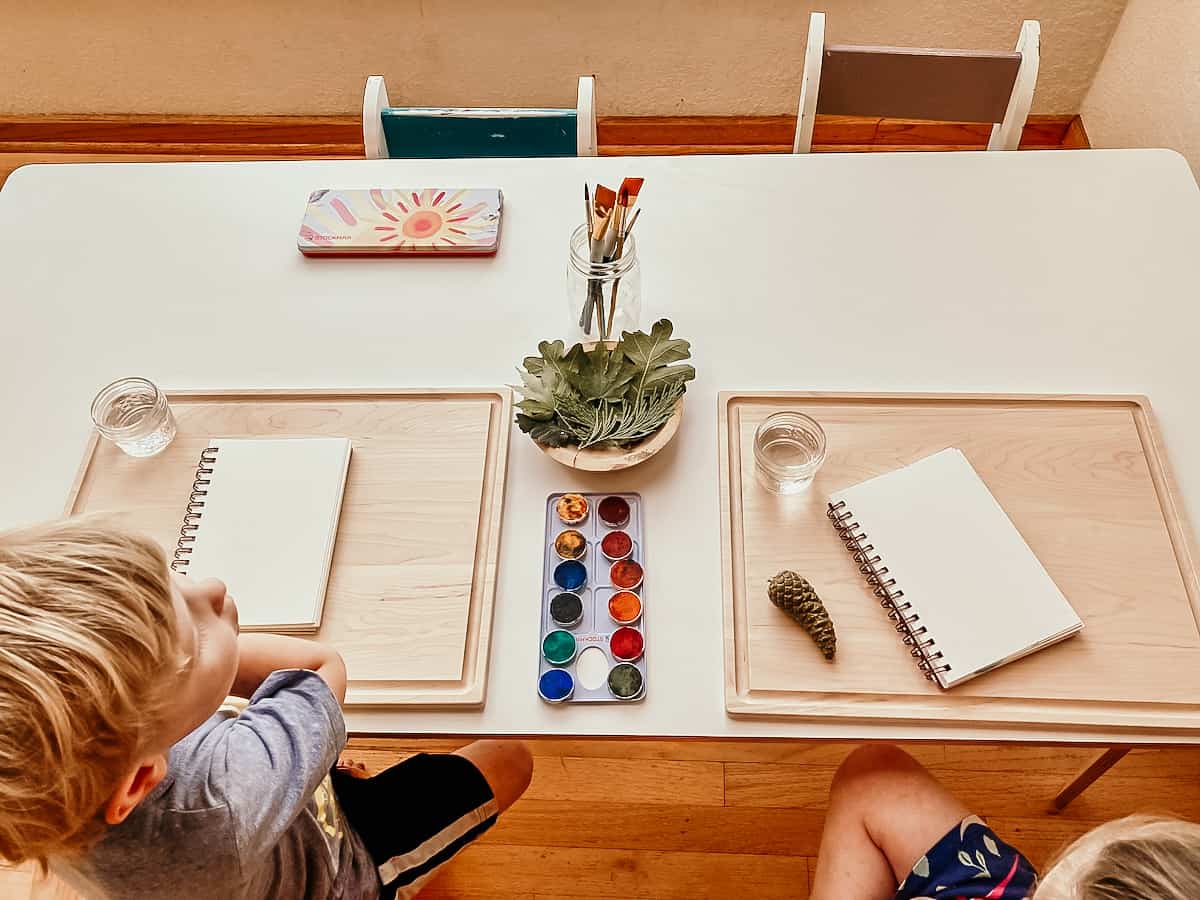
History of Earth: External Parts of Plants Nature Study
- Watercolor Paints
- Paintbrushes
- Watercolor Journals
- Assortment of leaves, pinecones, and acorns
- Wooden Craft Boards
Using books such as Nature Anatomy and Trees: A Rooted History, we spent some time looking at the anatomy of early plants: seaweed, moss, ferns, conifers, and flowering plants. We also looked briefly at the difference between deciduous and coniferous trees.
Afterward, they spent some time in the forest behind the house collecting leaves from ferns as well as pine, oak, and maple trees. They also gathered some pinecones and acorns for their journaling activity.
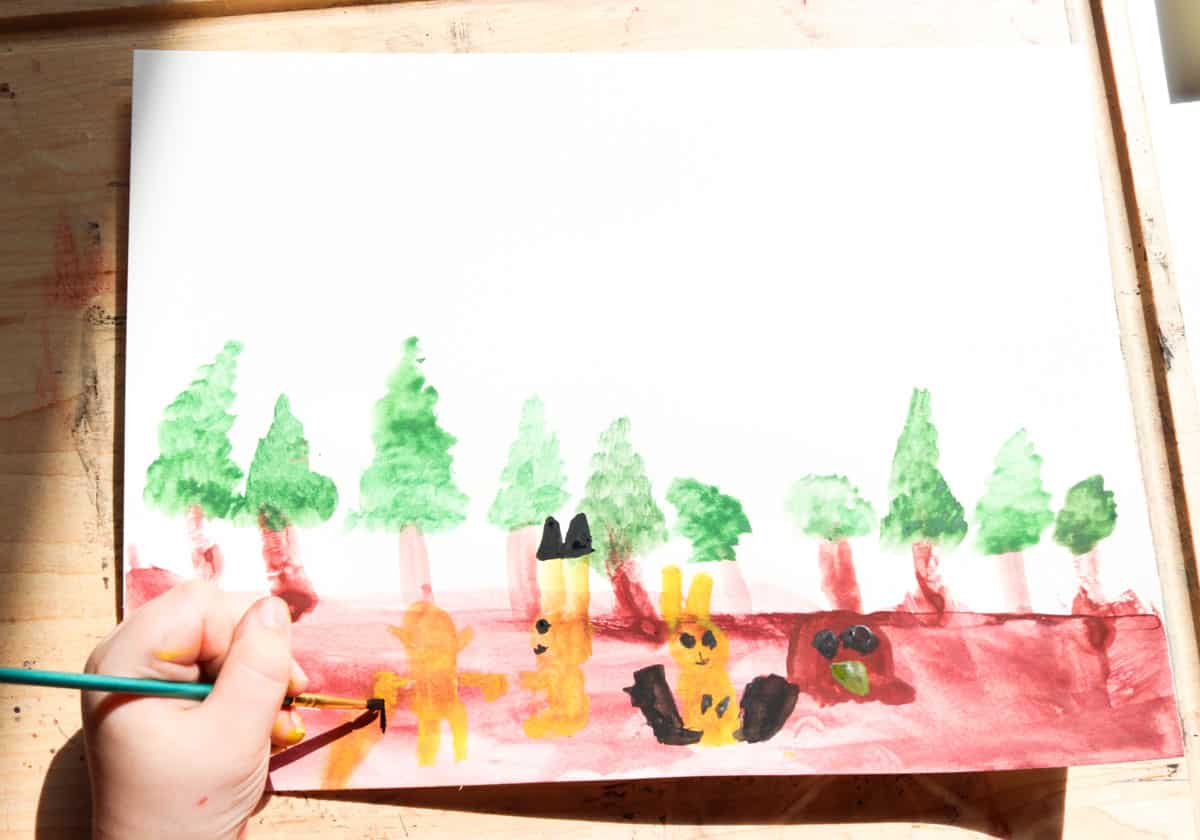
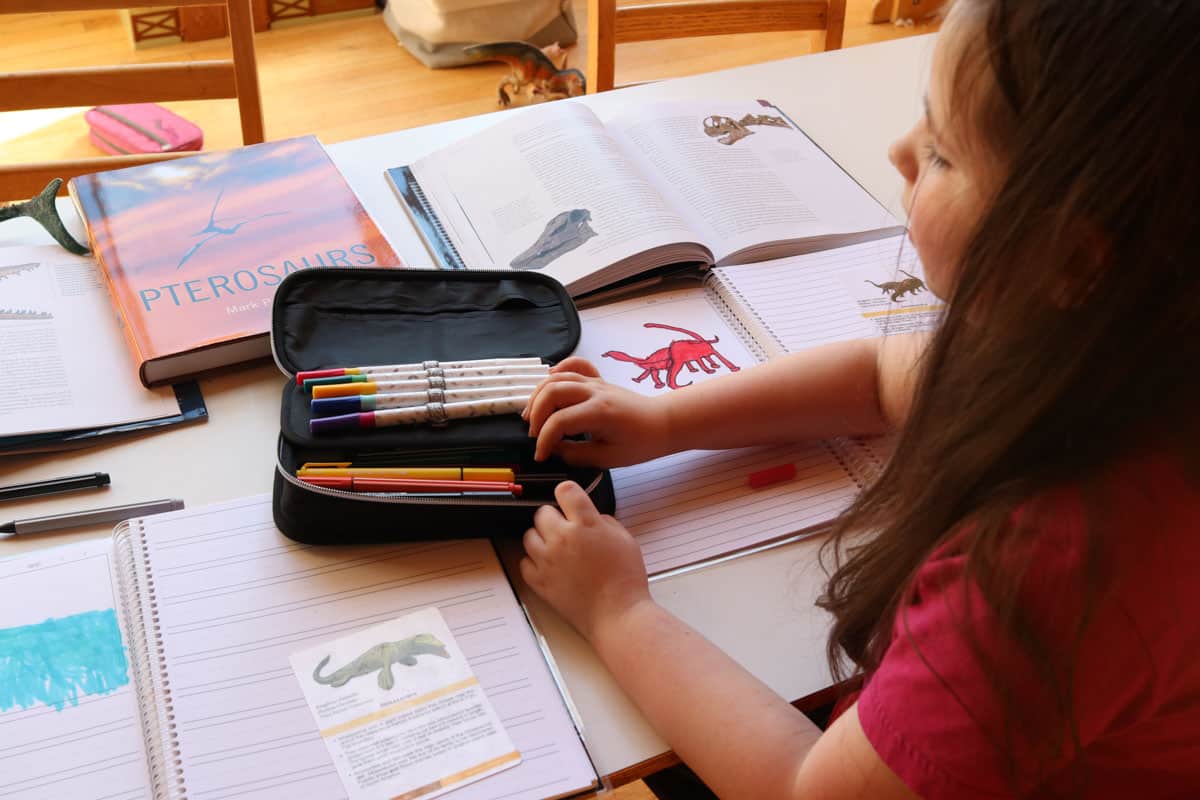
Animal Research
Kids enjoy learning about their favorite animals. Kaia and Noah use prehistoric animal books and research cards from the cloth timeline of life to learn about animals such as the mosasaur and apatosaurus.
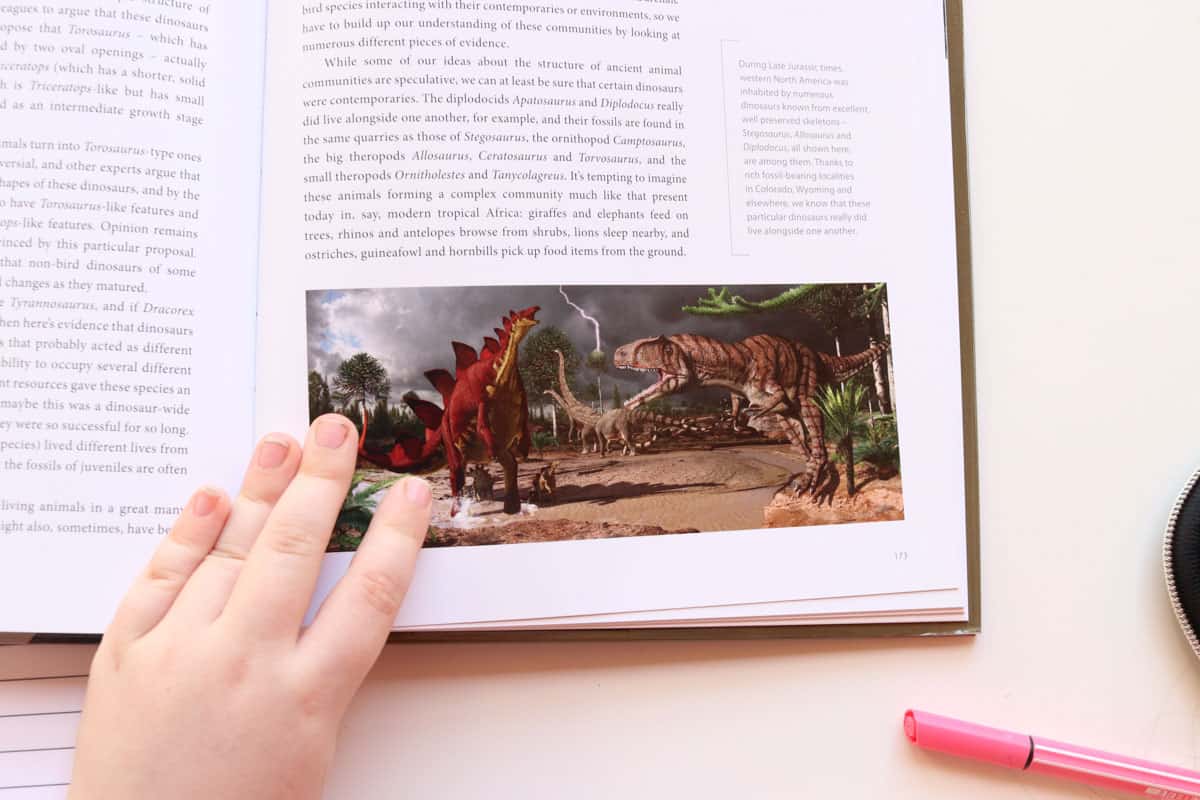
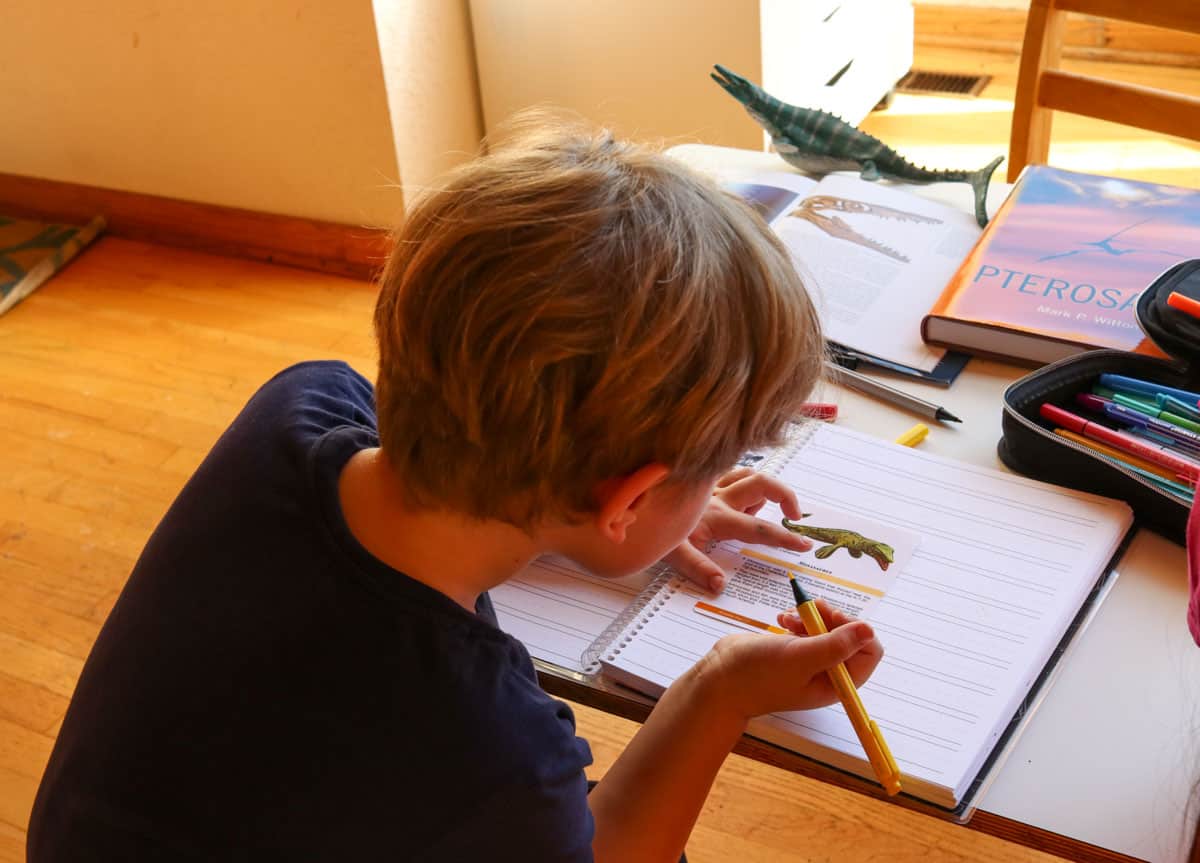
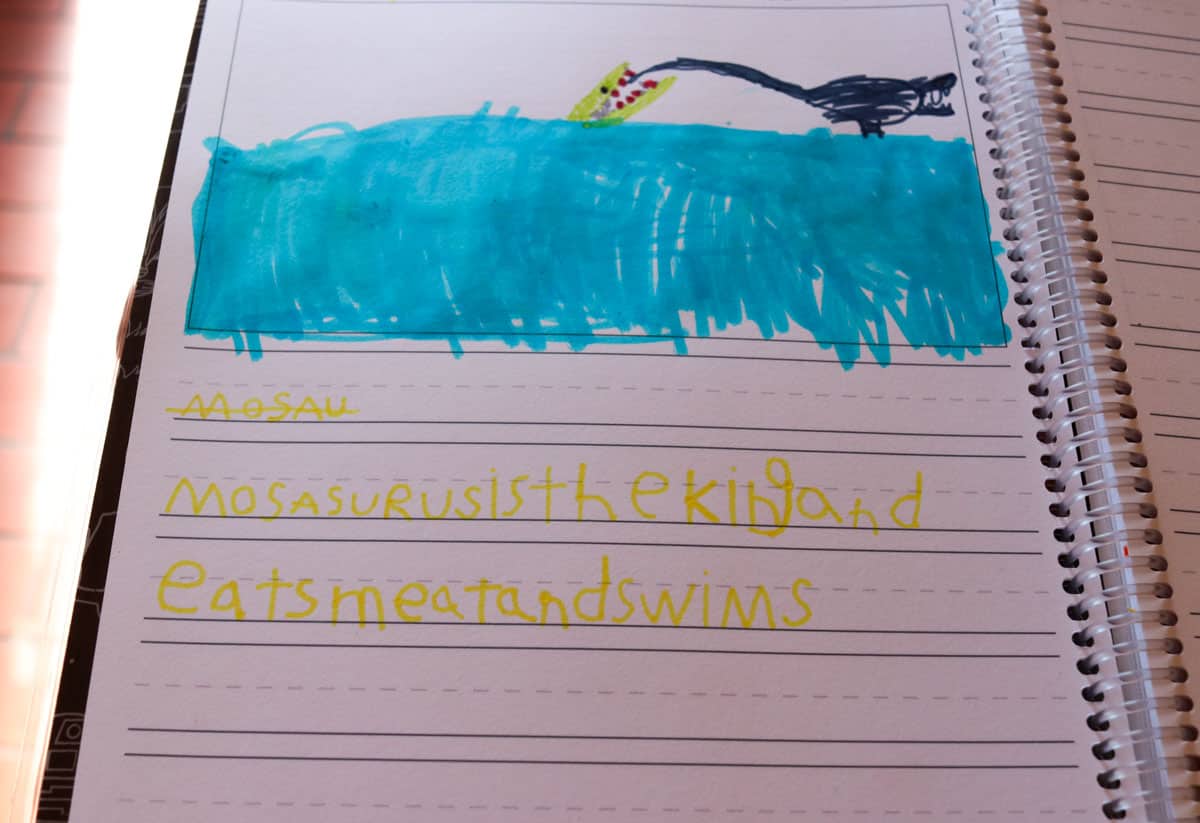
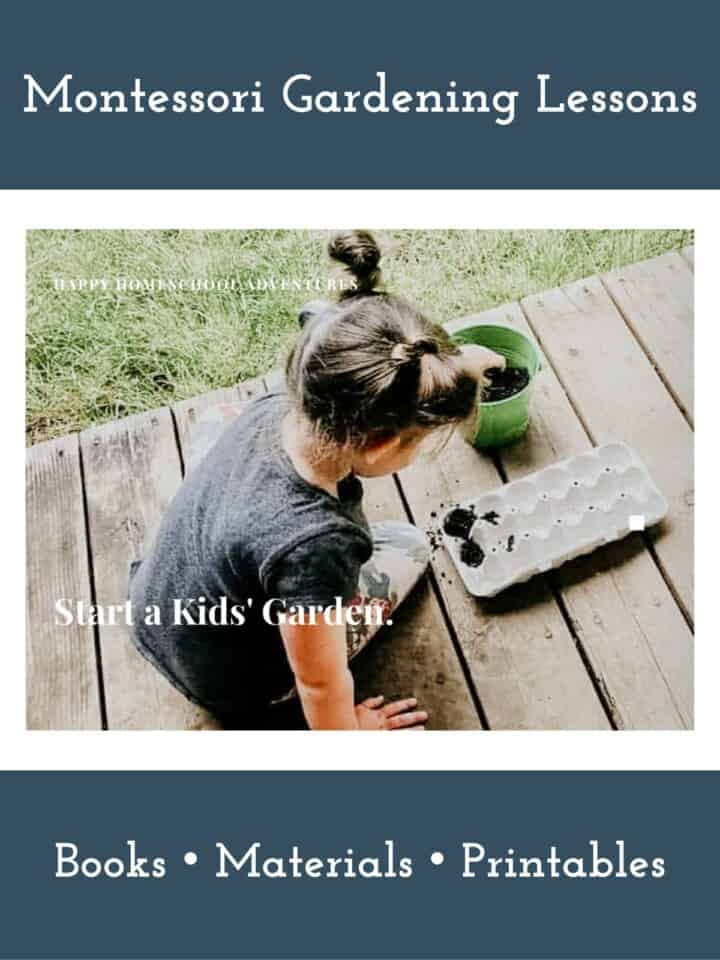
Start a Gardening Program
Free Gardening Lessons for Kids & Adults.
Start a Garden with Kids
Keep it Simple. Using household materials and simple tools, empower kids to grow food and eat healthy with this easy series of lessons that will help you start a garden with your learners.
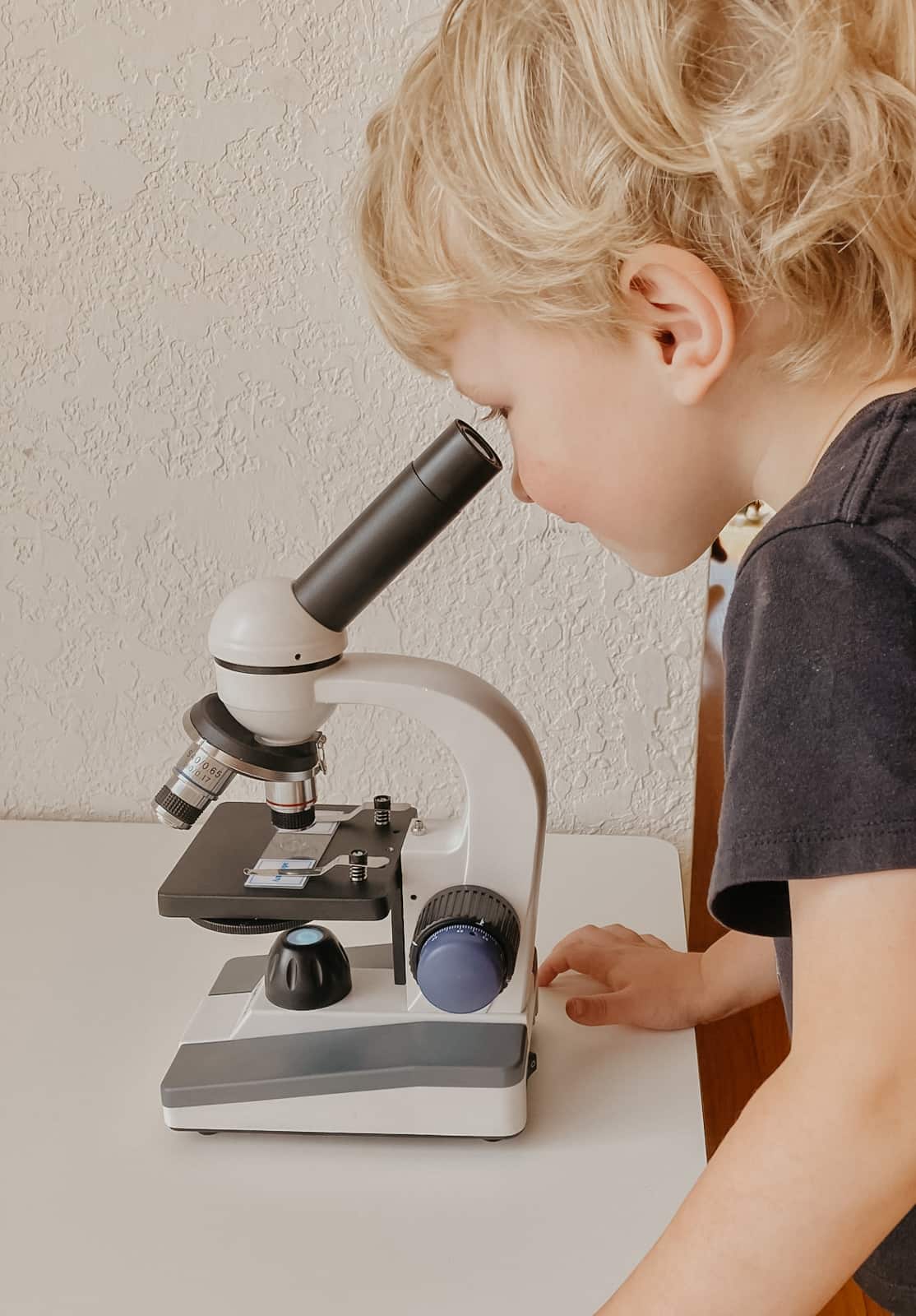
They examined a pine leaf specimen under the microscope and then sketched what they saw in their notebooks. For First Knowledge questions, we talked about them very organically as we looked at our Montessori Botany Books.
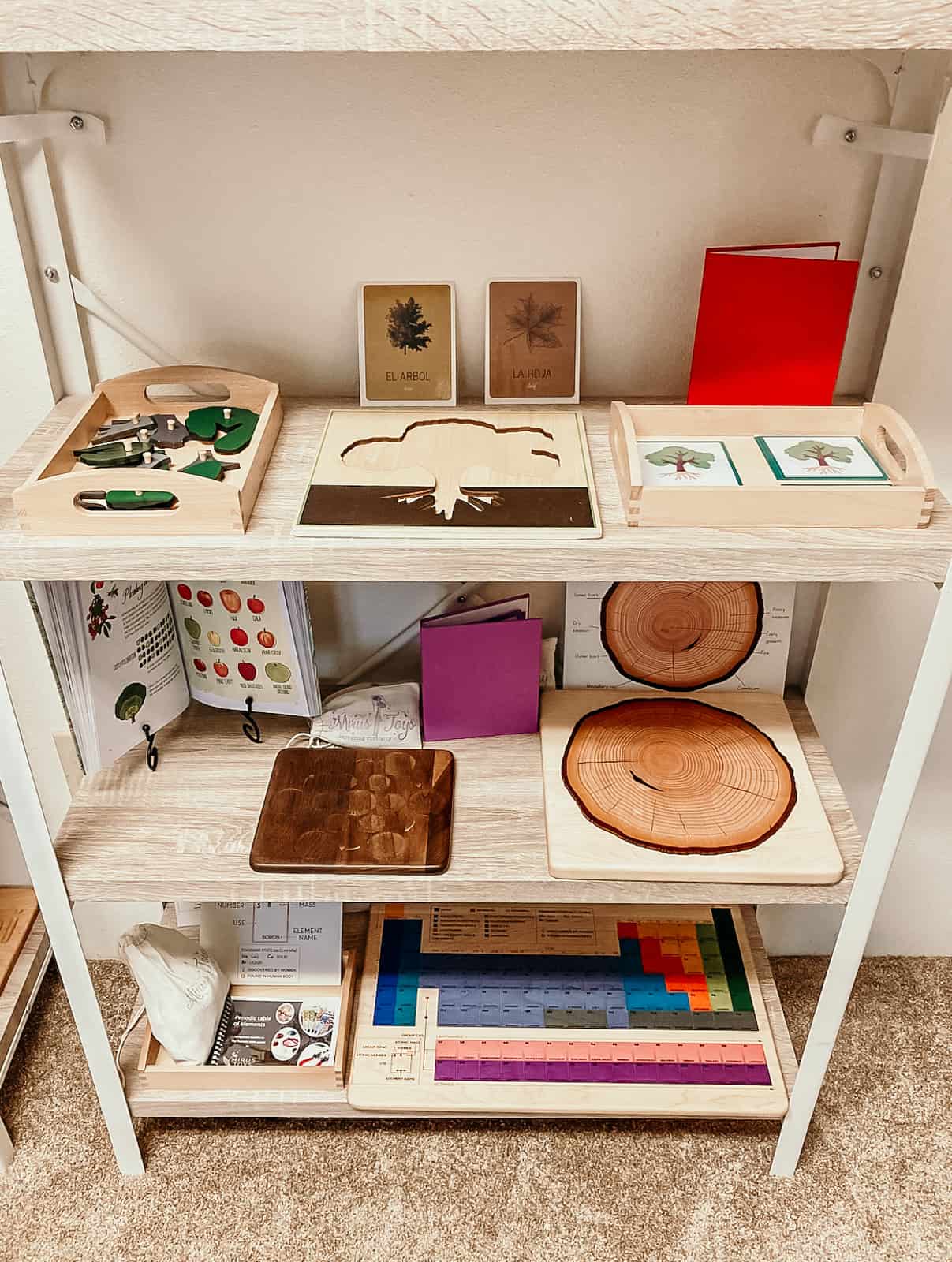
History of Earth: Tree Shelf Work
- Montessori Tree Puzzle
- Parts of a Tree Nomenclature (FREE)
- Bilingual Spanish Nature Cards
- Waseca Biomes Parts of the Biome Plants Readers
- Farm Anatomy Book
- Mirus Toys Life Cycle Board - Apple Life Cycle Coins
- Mirus Toys Parts of a Tree Trunk Puzzle
- Periodic Table Booklet by Mirus Toys
- Periodic Table Puzzle including tiles, key, & companion guide
We focused more on Botany this year. As a result, our History of Earth studies included some tree shelf work. There was also an introduction to dendrochronology using the Parts of a Tree Trunk Puzzle. We studied flowering plants recently with our Montessori Bee Unit Study so that was also still fresh in their minds.
Our Periodic Table Puzzle and guide are still on the shelf from our Astronomy work. There is a persistent interest. Also, it's still a very relevant part of the story as we examine The Story of the Earth and The Story of Life.
Get $15 off your first Waseca Biomes purchase.
To extend the fun, add this FREE Parts of the Redwood Four Part Card Activity to your Parts of a Tree Trunk Puzzle.
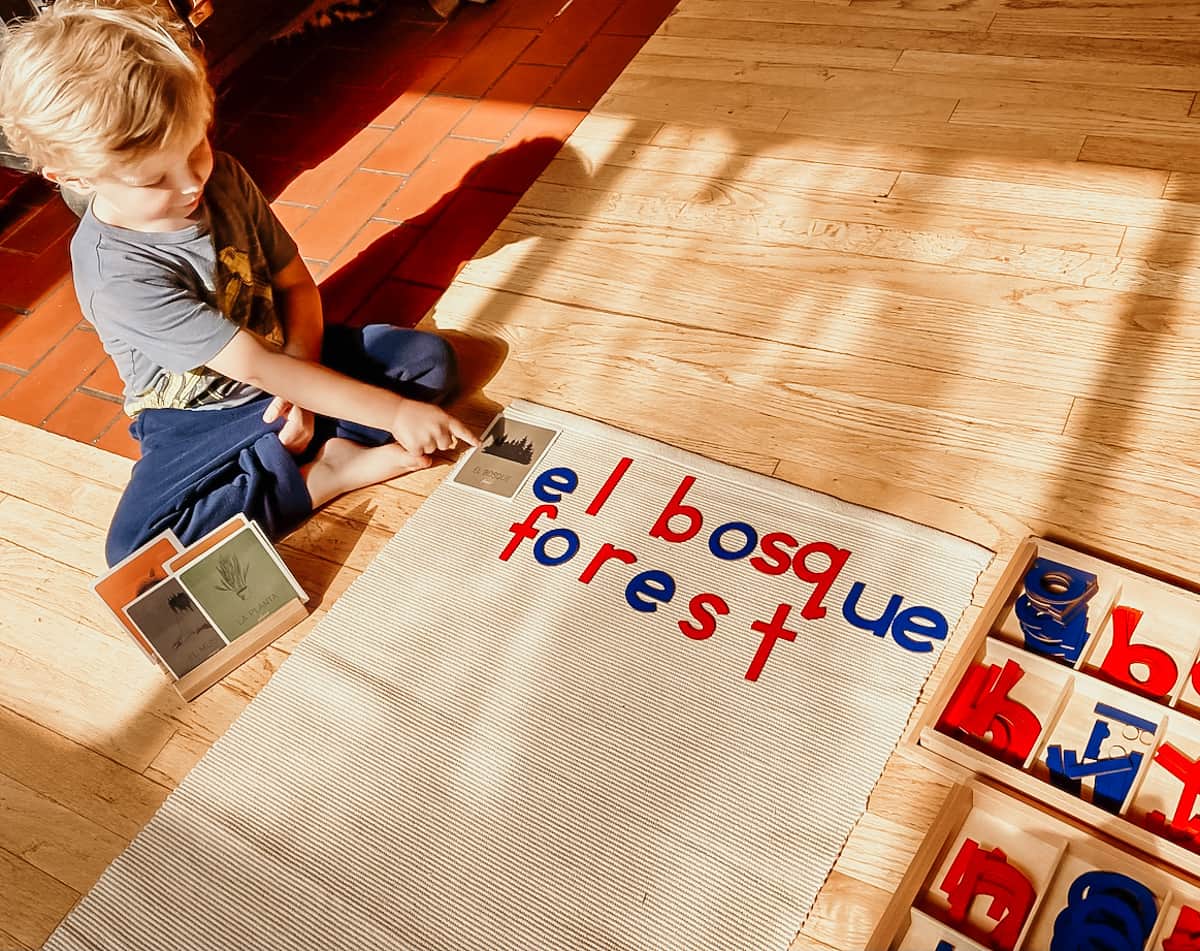
Spanish Language Shelf Work
The oldest two worked together to write the Spanish and English for each card using the movable alphabet. This Montessori Second Great Lesson follow-up work is perfect for incorporating language work into nature studies.
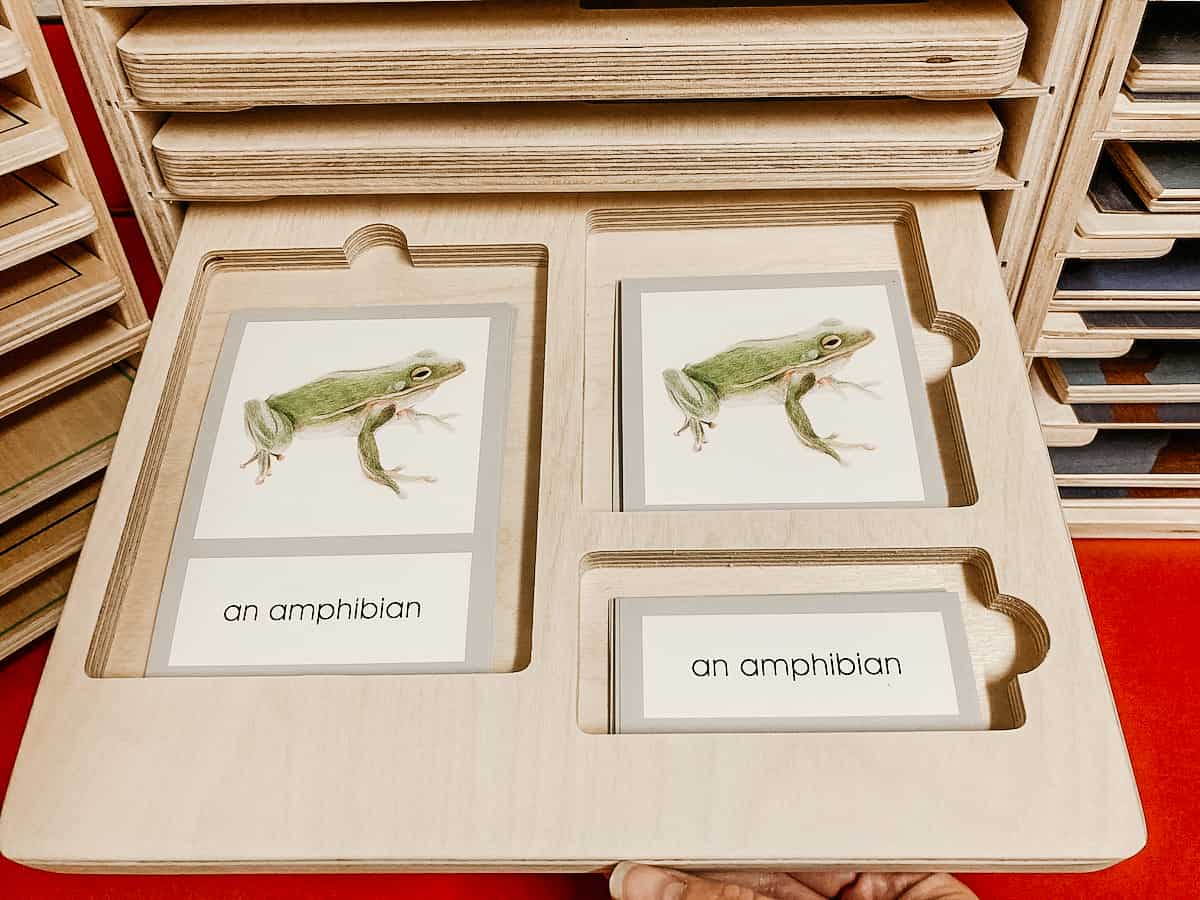
History of Earth: External Parts of Animals
Our kids looked at the parts of fish, amphibians, reptiles, birds, and mammals using the Waseca Biomes Nomenclature Cards. They used them alongside the associated Montessori Animal puzzles.
Get $15 off your first Waseca Biomes purchase.
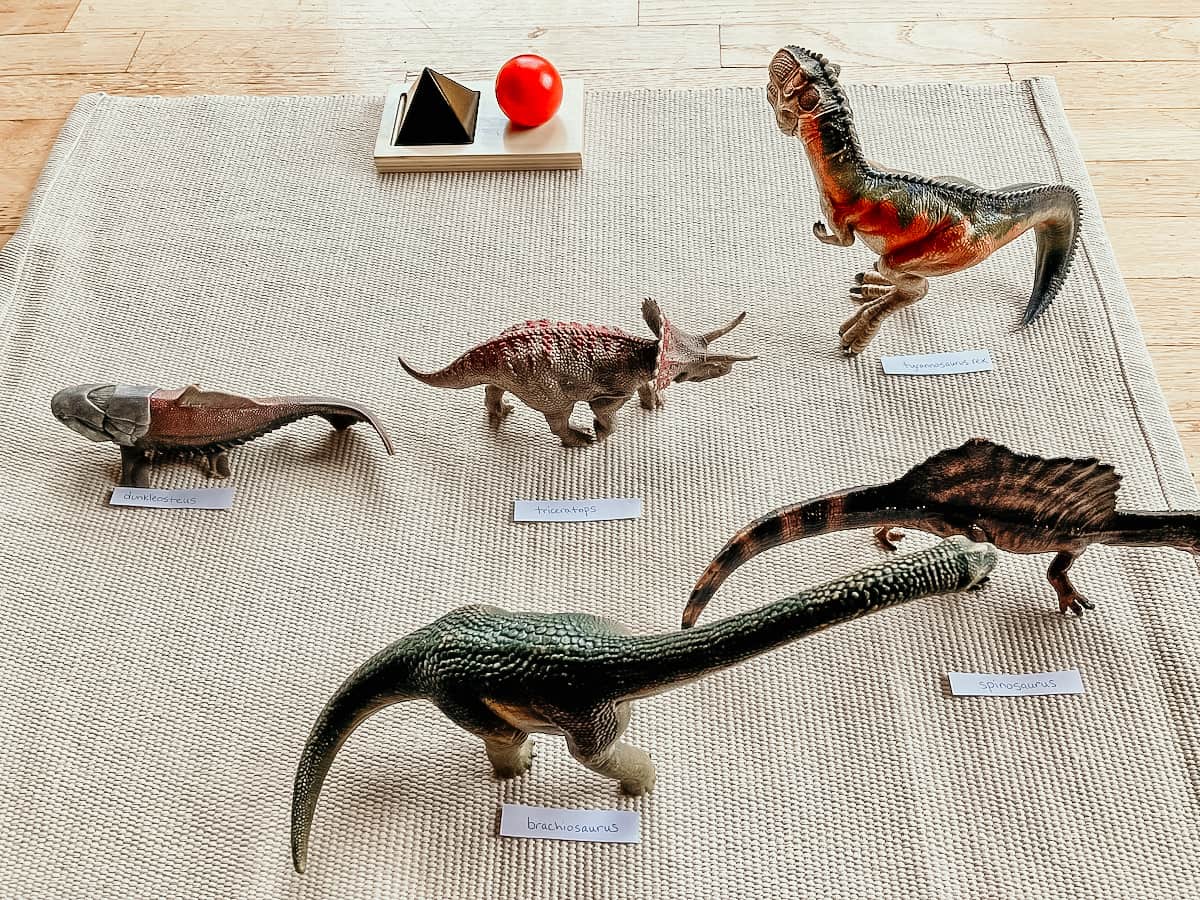
History of Earth: Montessori Grammar Work
I recently introduced nouns and verbs to Kaia using our grammar farm materials. As a follow-up, we couldn't resist the opportunity to use the dinosaurs and our favorite prehistoric fish. Therefore, for this Second Great Lesson, we decided to play around with some prehistoric nouns. Noah also got into it. He guessed which animal to bring to the mat based on the first few letters of each label.
Traditionally, the Montessori Elementary sequence for introducing grammar is with the Fourth Great Lesson and The Story of Communication. We're a bit early for this work. Also, the lesson given to a Primary versus an Elementary child is usually different. It's generally geared towards the plane of development of the child.
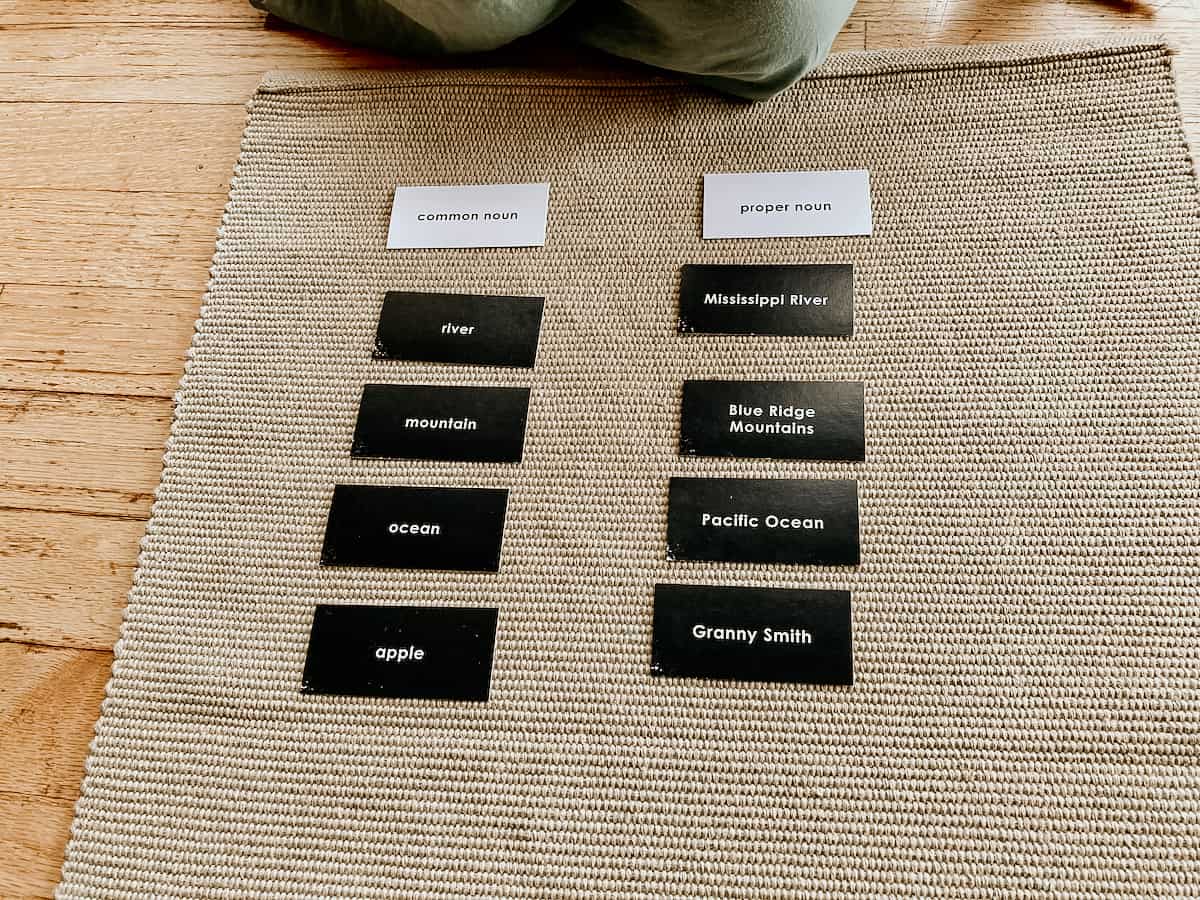
We followed that up with a lesson on common and proper nouns using some of the Waseca Biomes Grammar Box Cards. Afterward, they copied their work into their Grammar notebooks, using a Grammar Stencil.
Get $15 off your first Waseca Biomes purchase.
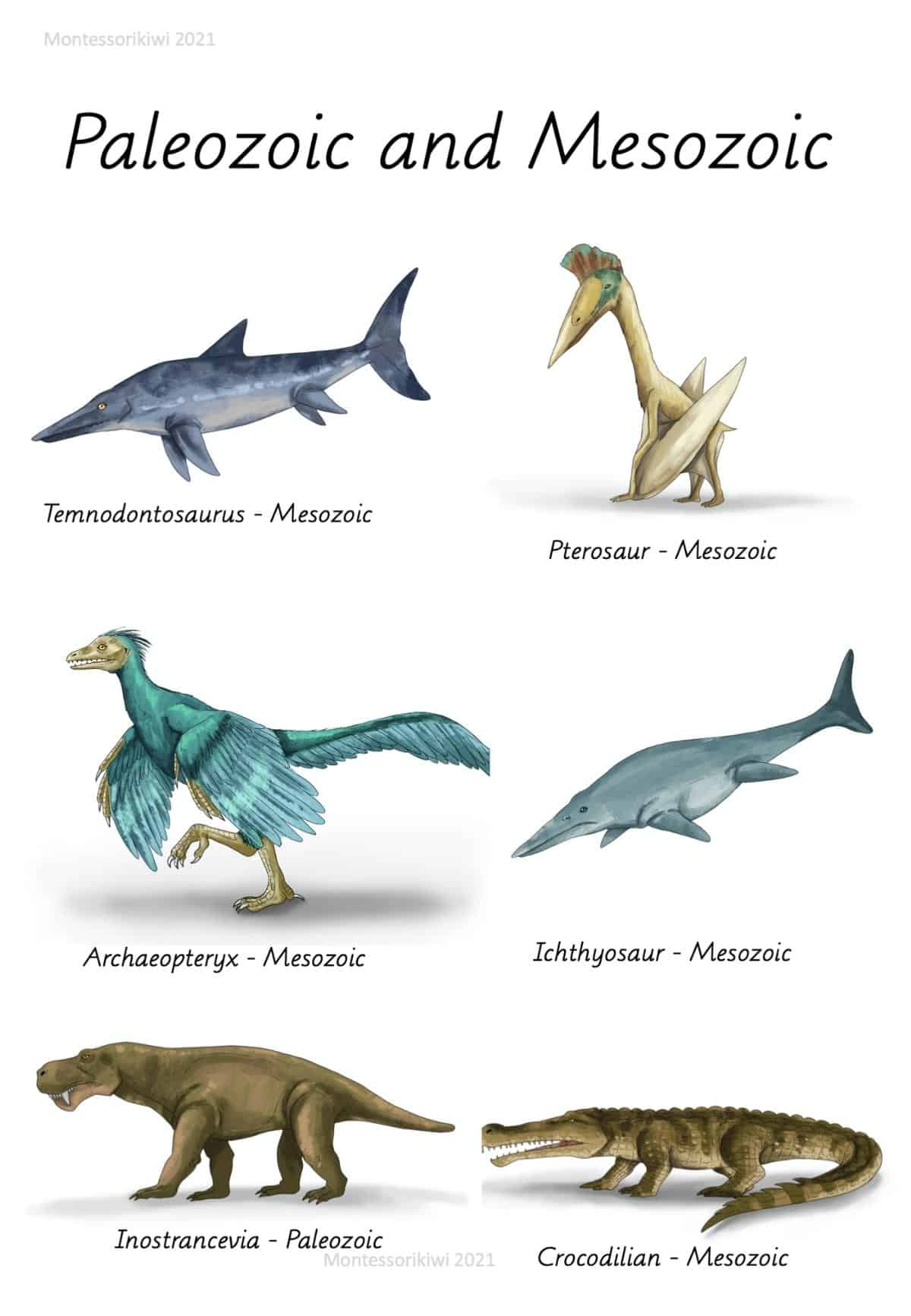
Early Life Coloring Pages
These Early Life Coloring Pages by Montessorikiwi include 13 different animals and a beautifully illustrated 2-page poster. They are the perfect follow-up work for animal lovers in your family.
Each animal has a coloring page as well as a coloring page with the clock of eras and a writing prompt to extend the learning. Fun for all ages.
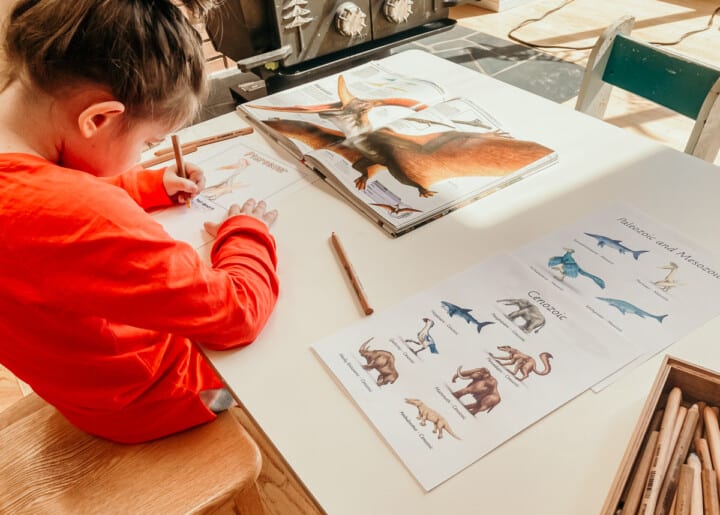
Montessorikiwi
Receive a 16% Off Coupon + shop Montessori printables.
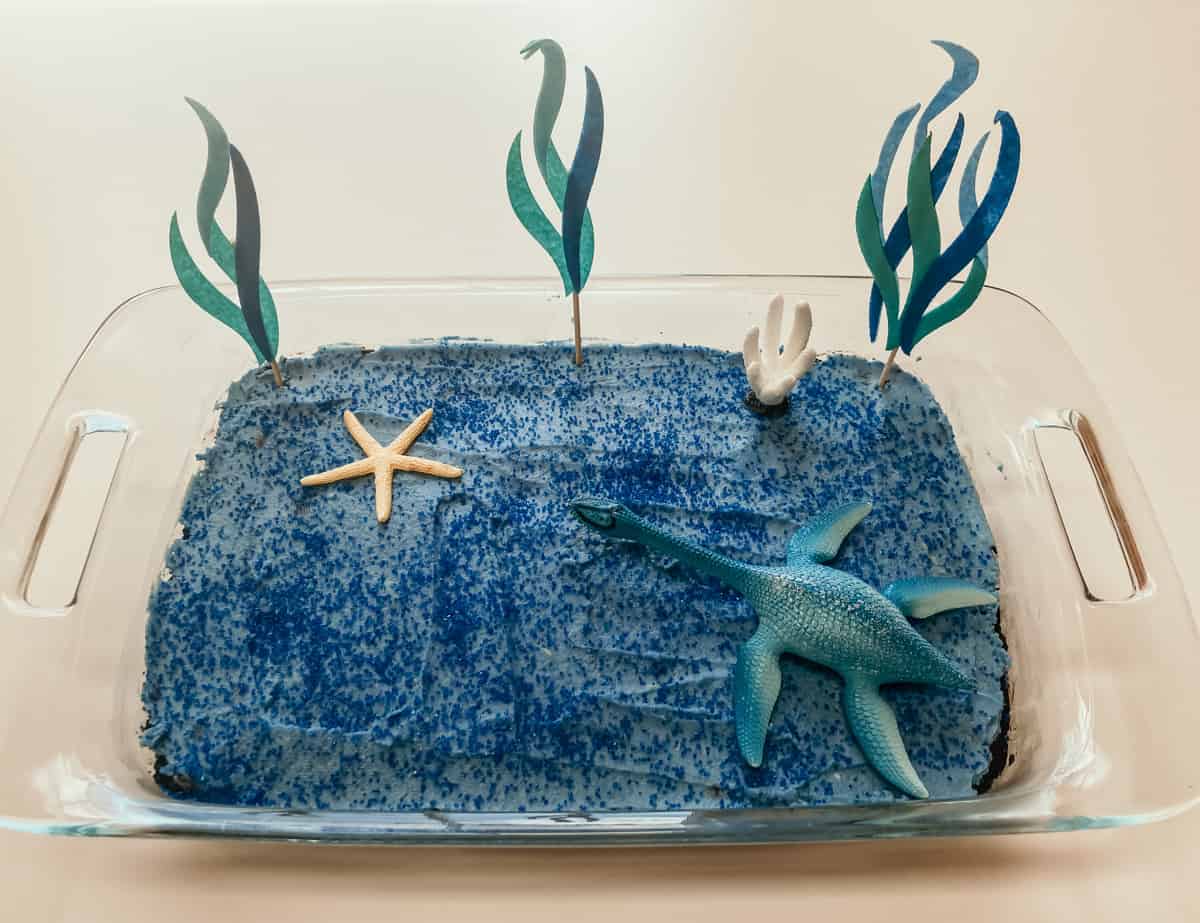
Prehistoric Animal Cake
The plesiosaurus, a prehistoric marine reptile, is a big hit in our home. This delicious plesiosaurus einkorn brownie cake would make a perfect follow-up activity to the second great lesson. The brownies were easy to make and we used nature's inspiration food coloring to achieve the beautiful blue color for the homemade icing.
Your child can substitute their favorite prehistoric animals and colors to customize the experience to their interests.
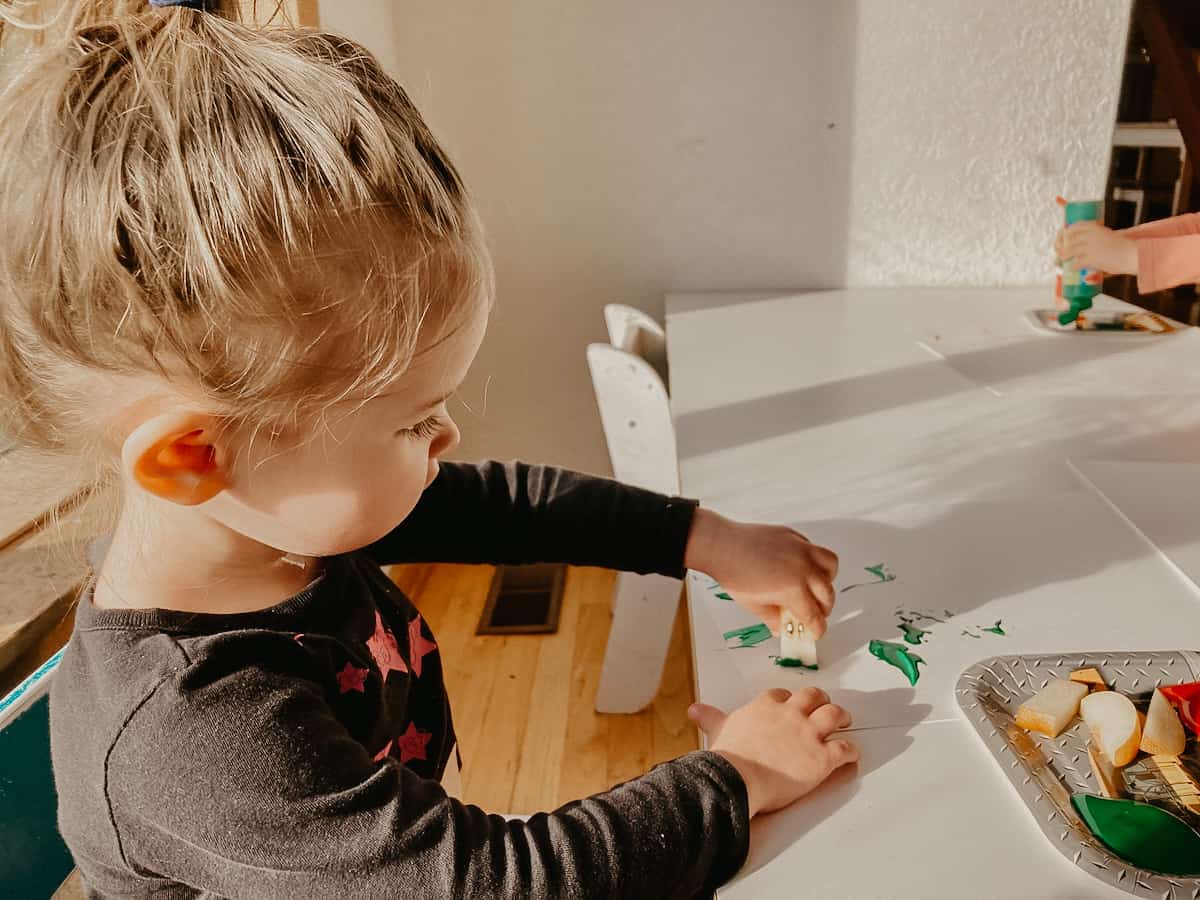
Apple and Pear Art
Katalina never misses an opportunity to participate in art and this was no exception. We were inspired by this Painting with Apples Fall Craft for Kids. As a result, we decided to do the same with a couple of apples and pears from our fall harvest. Lots of fun and a great activity for fine-motor strengthening.
This was a great way to bridge Kaia and Noah's studies on the Second Great Lesson with Katalina's desire to explore the world around her. An Autumn Apple Adventure is great seasonal fun for all ages.
Learn more about homeschooling in the preschool and kindergarten years with this free homeschool course.
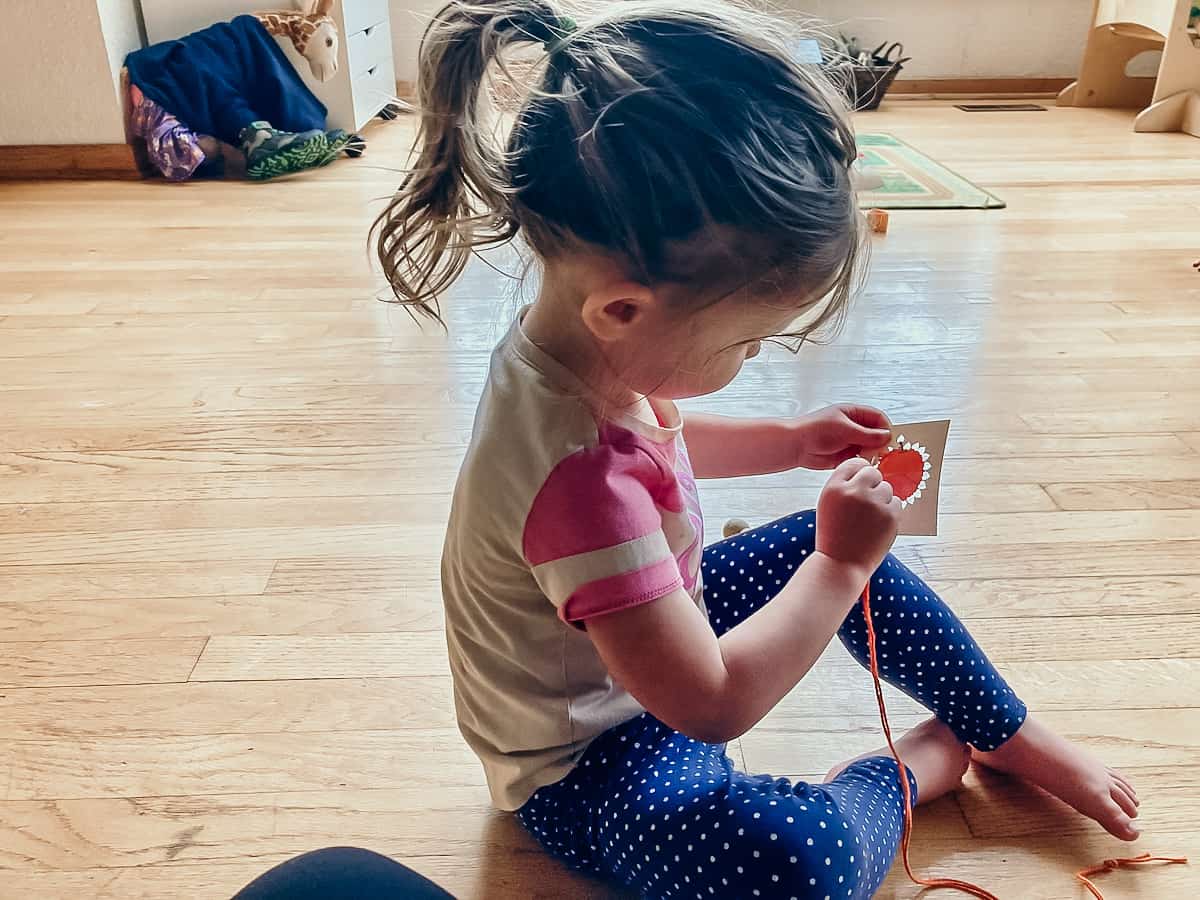
Apple Lacing Cards
This apple lacing card is one of several fall lacing cards Katalina is enjoying right now. This is a great beginning sewing activity. She uses these along with a blunt needle and thread. Great for fine motor skills and the development of concentration. And yes, that's a fully dressed giraffe behind her.
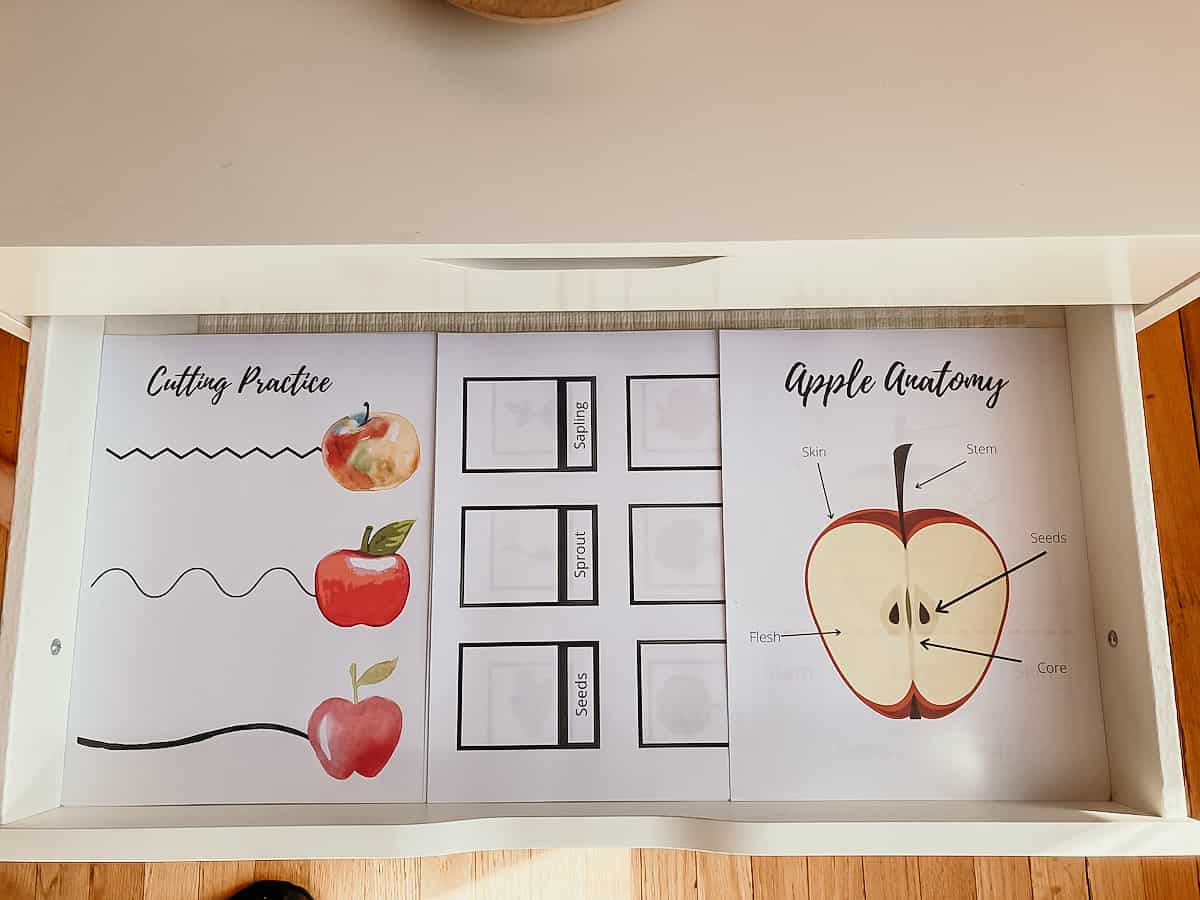
Apple Art Activity Drawer
Katalina and Noah enjoyed these Apple activities with our 2 y.o. focusing on the cutting work. Our 4 y.o. reinforced his knowledge of the apple life cycle with nomenclature. Also, he explored apple anatomy some more with a cut-and-paste activity.
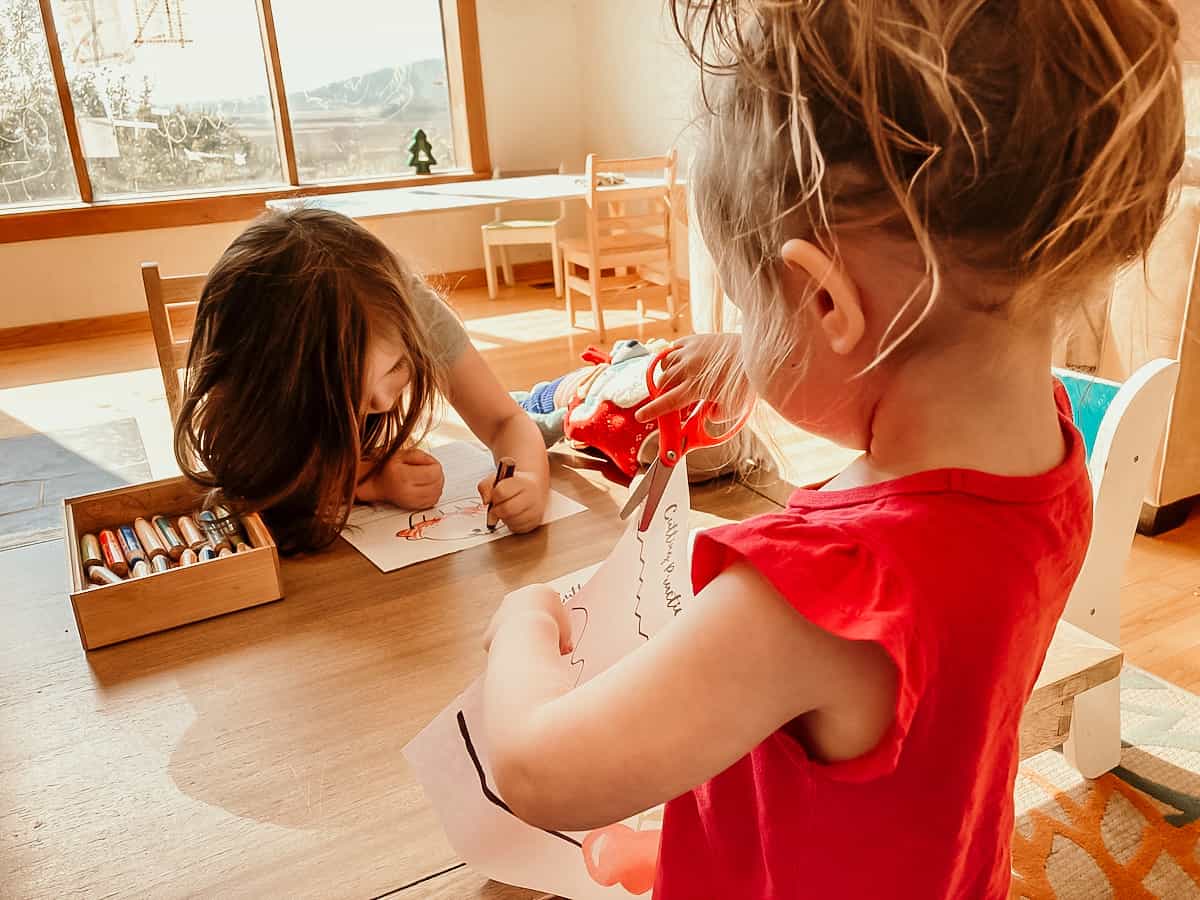
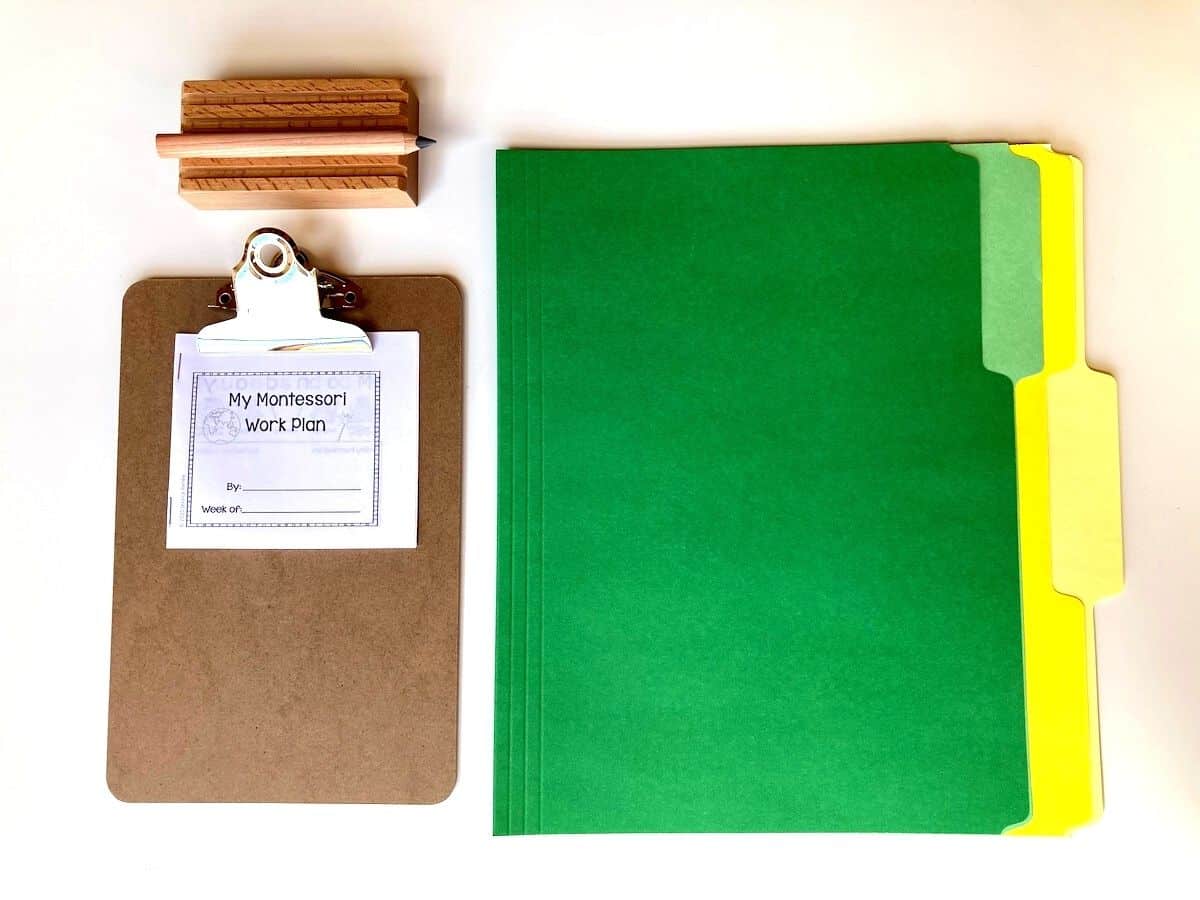
Montessori Work Plan, Review, and Folders for Ongoing and Completed Work
This is how Kaia and Noah document their work for each week. They use these folders to keep track of it. They fill out the Montessori Work Plan at the end of their day. The folders are for ongoing work and completed work.
History of Earth for Kids: The Montessori Second Great Lesson Conclusion
We hope you’ve enjoyed seeing how we do the Second Great Lesson. Using these Elementary Curriculum Resources, I put together a great mix of books, printables, and materials for a variety of hands-on experiences. There are a lot of directions you can take with this great lesson. This is how we did it. We hope you find it useful as you plan your Montessori Second Great Lesson experiences.
Don't forget to check out the First Great Lesson if you haven't already.
More History of Earth & Science Resources
Thanks for stopping by!
– Kristin
The History of Earth for Kids
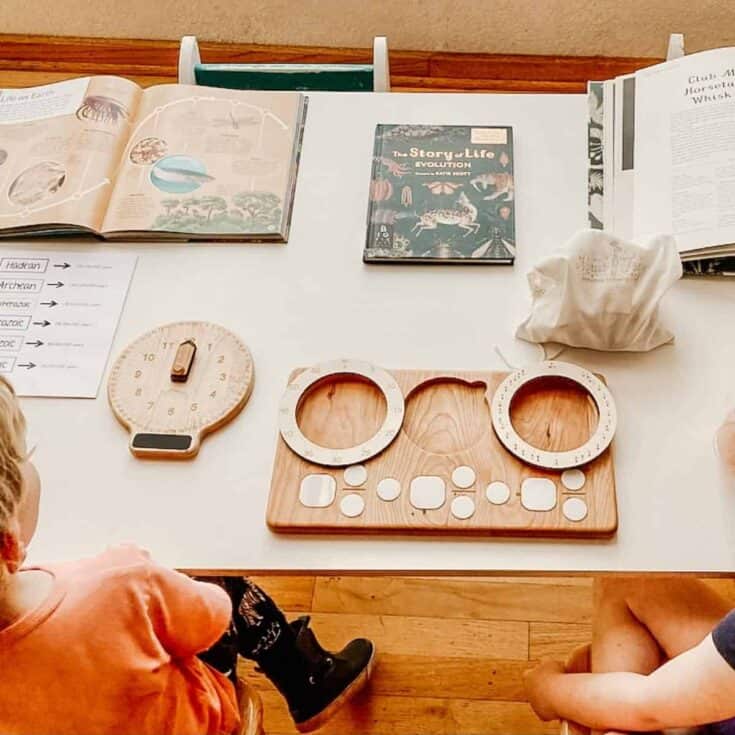
Explore the History of Earth with the Montessori Second Great Lesson Materials & Follow-Up Family Unit. These interdisciplinary lessons include the History of Earth, The Story of Life, Clock of Eras, Earth Science, Water, Weather, Botany, etc. and most subjects. It covers the History of life on Earth up until the appearance of humans. These activities are comprehensive and will keep your kids interested in Earth Science year round.
Books, Nature Items, Hands-on Materials, & Printables
Materials
- Children of the Universe
- From Lava to Life
- Lifecycles: Everything from Start to Finish
- Botanicum: Welcome to the Museum
- The Story of Life
- We Are Water Protectors
- Nature Anatomy
- Trees: A Rooted History
- Montessori Botany Books
- Farm Anatomy
- Extinct: Hallucigenia
- Extinct: Dunkleosteus
- Extinct: Trilobite
- Extinct: Lisowicia
- Extinct: Tyrannosaurus Rex
- Extinct: Megalodon
- Extinct: Thylacine
- Extinct: Hainan Gibbon
- Mesozoic Art: Dinosaurs and Other Ancient Animals in Art
- Dinosaurium: Welcome to the Museum
- Europasaurus: Life on Jurassic Islands
- The Rise and Fall of the Dinosaurs
- The Rise and Reign of the Mammals
- The Fossil Woman: A Life of Mary Anning
- Leaves
- Pinecones
- Acorns
- Apples and Pears
- Mirus Toys Montessori Learning Clock
- Mirus Toys Clock of Eras Puzzle
- Mirus Toys Fraction Manipulation Board
- Mirus Toys Layers of the Earth Puzzle
- Mirus Toys Layers of the Atmosphere Puzzle
- Mirus Toys Life Cycle Board
- Mirus Toys Apple Life Cycle Coins
- Mirus Toys Parts of a Tree Trunk Puzzle
- Mirus Toys Periodic Table Puzzle
- Mirus Toys Periodic Table Booklet
- Mirus Toys Dinosaur & Pterosaur Stampers
- Waseca Biomes Animals of the World Measuring Tape
- Waseca Biomes Water Cycle Mat
- Waseca Biomes Parts of the Biome Readers
- Waseca Biomes Introduction to the Biomes Nomenclature
- Waseca Biomes Grammar Box Cards
- Waseca Biomes Grammar Stencil
- Waseca Biomes Rock Cycle Mat
- Timeline of Life - Working Copy
- Cloth Timeline of Life - Complete Set
- Ring of Fire Puzzle
- Mineral ID Kit
- Fossilicious Rock and Mineral Collection with Complete Curriculum
- Fossilicious Clock of Eras: Creative Connections to Science and Art
- Fossilicious Paleontology for Kids Books and Fossil Set
- Treasures From Jennifer Custom Rocks and Minerals Box
- Treasures From Jennifer Custom Pangea Box
- Schleich Dinosaurs and Prehistoric Animals
- Creative Beast Studio Beasts of the Mesozoic
- Montessori Sandpaper Letters
- Watercolor paints
- Watercolor paper
- Paintbrushes
- Wooden Craft Boards
- Glue
- Scissors
- Stabilo 3-in-1 Crayons
- Montessori Tree Puzzle
- Montessori Movable Alphabet
- Strips of Paper for Grammar Work
- Grammar notebook
- Einkorn Brownies
- Nature's Inspiration Food Coloring
- Tempera paint
- Blunt Needle
- Embroidery Floss
- Montessori Measurement printable
- Clock of Eras Charts printable
- Bilingual Spanish Nature Cards printable
- Parts of a Tree Nomenclature printable (FREE)
- Parts of the Redwood Four Part Cards printable (FREE)
- Early Life Coloring Pages printable
- Lacing Cards printable
- Apple Activities printable
- Montessori Work Plan printable
- Dinosaur or Not a Dinosaur Prehistoric Animal Sorting printable
Tools
- See Materials List
Instructions
- Deliver the Second Great Lesson, using Children of the Universe. Have the kids create the long black line using Animals of the World Measuring Tape, assisting as needed. Measurement practice prior to this lesson may be necessary using the Montessori Measurement printable.
- The next day, revisit the Story of Life using From Lava to Life, the Clock of Eras Charts printable, the Clock of Eras Puzzle and Three Part Cards, the Montessori Learning Clock and the Fraction Manipulation Board. Books such as Life Cycles: Everything from Start to Finish, Botanicum, and The Story of Life are excellent resources to have on hand for visual representations of the story.
- Explore the Timeline of Life and its linear representation, including the 5 great extinctions. Kids can extend their learning and further research their favorite topics using the Dinosaur or Not a Dinosaur Prehistoric Animal Sorting printable. The animal sorting cards can be used to place on the timeline, as research prompts, 3-part cards, sorting of prehistoric animals, and object-to-picture matching for the youngest of learners.
- Introduce the Layers of the Earth Puzzle and Layers of the Atmosphere Puzzle Shelf Work, along with the Bilingual Spanish Nature Cards.
- Introduce the Water Cycle Mat and complete as many lessons as the children are interested in. Additional lessons can be completed on another day. Read We Are Water Protectors to extend work about water and environmental stewardship.
- Explore the Rock Cycle Mat using the guide for presentations to learn about igneous, metamorphic, and sedimentary rock. Revisit as follow-up work to grammar lessons.
- Use the rock and mineral collection and curriculum along with the mineral id kit to explore properties of various rocks and minerals. Use the curriculum throughout the year to inspire continued hands-on learning opportunities.
- Introduce the paleontology books and fossil set to ignite interest in dinosaurs and fossils. Use this collection of fossils and books throughout the year and across your curriculum to extend the learning fun. Incorporate Schleich dinosaurs to increase interest and provide additional hands-on opportunities for kids to explore dinosaurs.
- Support early literacy in children by introducing Montessori Sandpaper Letters for kids for learning letters and letter sounds.
- Encourage opportunities for Nature Journaling: watercolor painting or other Art activities that explore the External Parts of Plants. Use Nature Anatomy, and Trees: A Rooted History for additional Anatomy resources.
- Examine leaf specimens under a microscope. Children can sketch what they see and use Botany books to prompt further discussion.
- Introduce shelf work that explores the Parts of a Tree, Life Cycle of an Apple Tree, Parts of a Tree Trunk/Dendrochronology, and the Periodic Table Puzzle.
- Use the Movable Alphabet to explore vocabulary from these lessons in English and Spanish (or other languages).
- Explore the External Parts of Animals using the Introduction to the Biomes Nomenclature Cards.
- Introduce Grammar work using the Schleich dinosaurs, blank slips of paper, and the Grammar Box Cards. Have the children copy their work into their Grammar notebooks using the Grammar Stencil.
- Provide Early Life Coloring pages to reinforce knowledge gained about the Story of Life.
- Read the Rise and Fall of the Dinosaurs and The Rise and Reign of the Mammals as a family read-aloud or independent read to extend the learning in a story format.
- Provide opportunities for Process Art by painting with Apples and Pears.
- Encourage Sewing activities using the Fall Lacing Cards.
- Introduce Apple Activities printable for practicing scissor skills and reinforcing life cycle work.
- Encourage kids to use the Montessori Work plan to document their daily completed and ongoing work. This will help the child to identify areas or subjects where additional focus should be placed. It also gives the child the opportunity to share how they feel about their work and what they would like to explore the following week.
Notes
Full Lesson Info and Pictures at: https://happyhomeschooladventures.com/montessori-second-great-lesson-materials-follow-up/
Recommended Products
As a member of affiliate programs, I earn from qualifying purchases.
-
Animals of the World Measuring Tape
-
Montessori Learning Clock
-
Fraction Manipulation Board
-
Layers of the Earth Puzzle
-
Layers of the Atmosphere Puzzle
-
Water Cycle Mat
-
Waseca Biomes Parts of the Biome Readers
-
Mirus Toys Life Cycle Board
-
Parts of a Tree Trunk Puzzle
-
Periodic Table Puzzle
-
Introduction to the Biomes Nomenclature
-
Waseca Biomes Grammar Box Cards

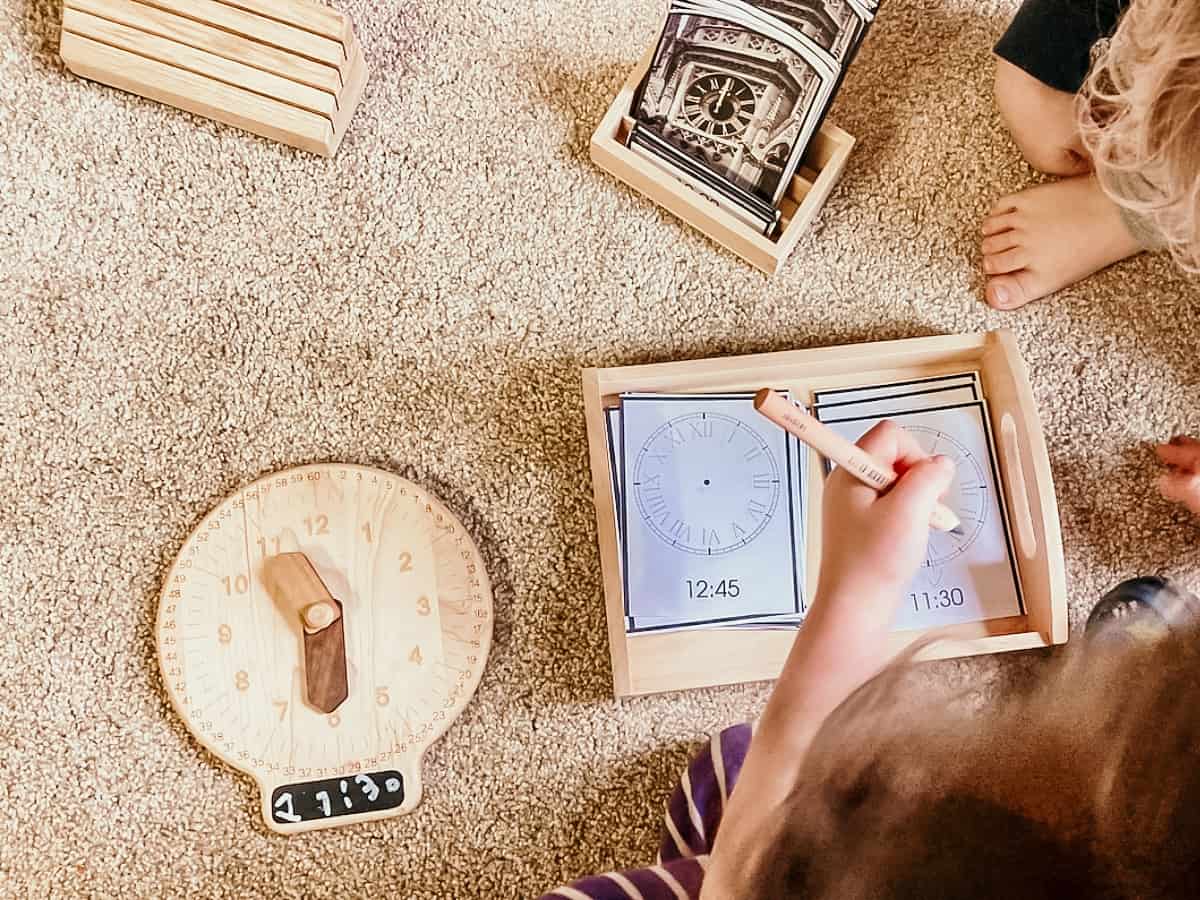
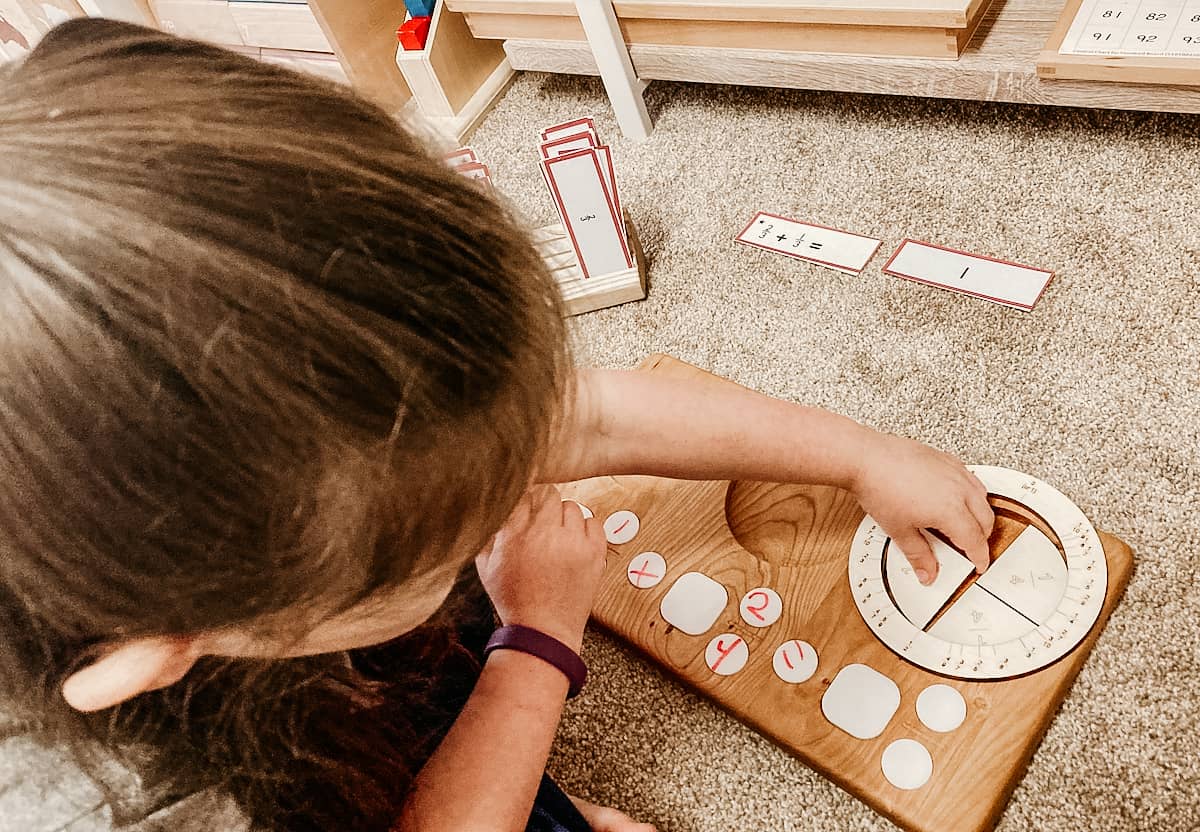
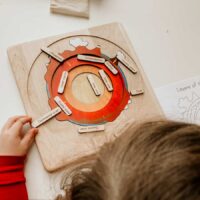
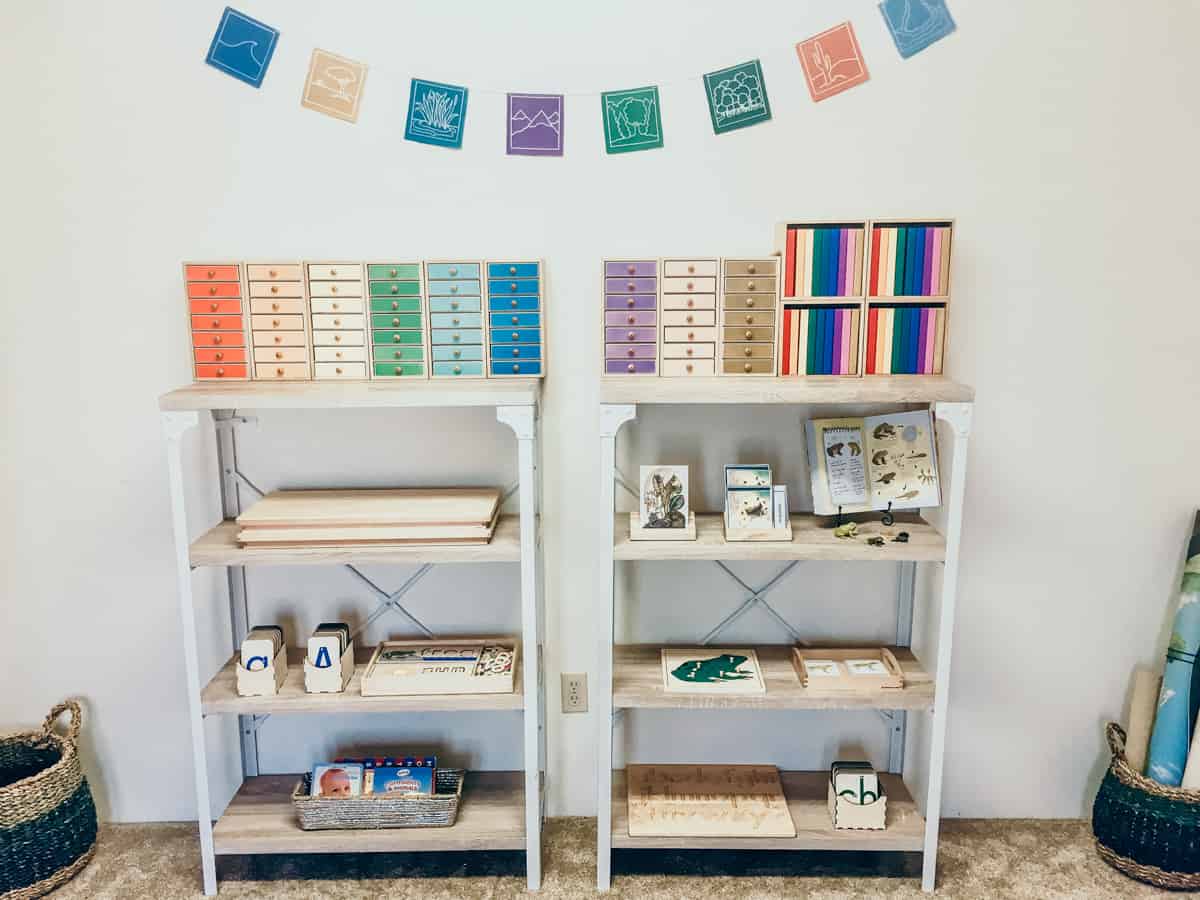
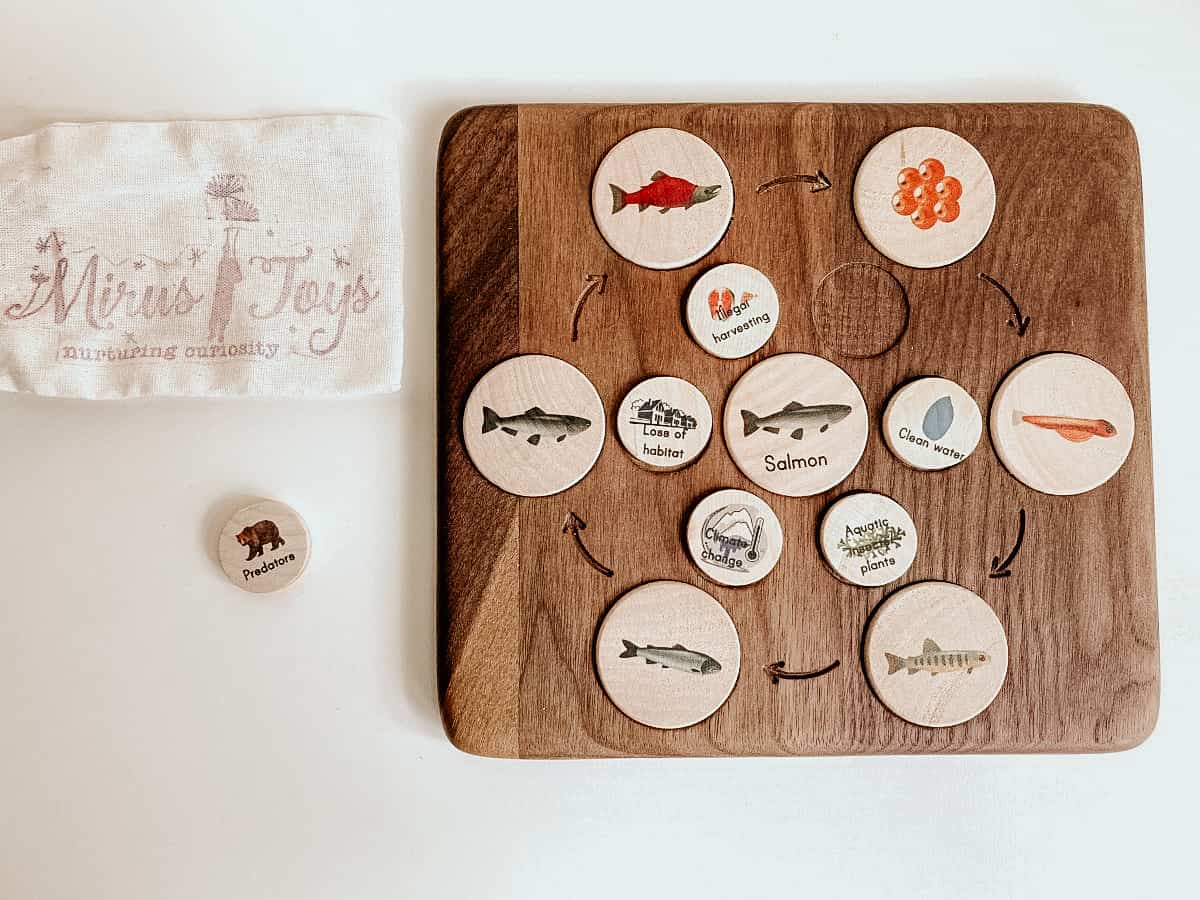
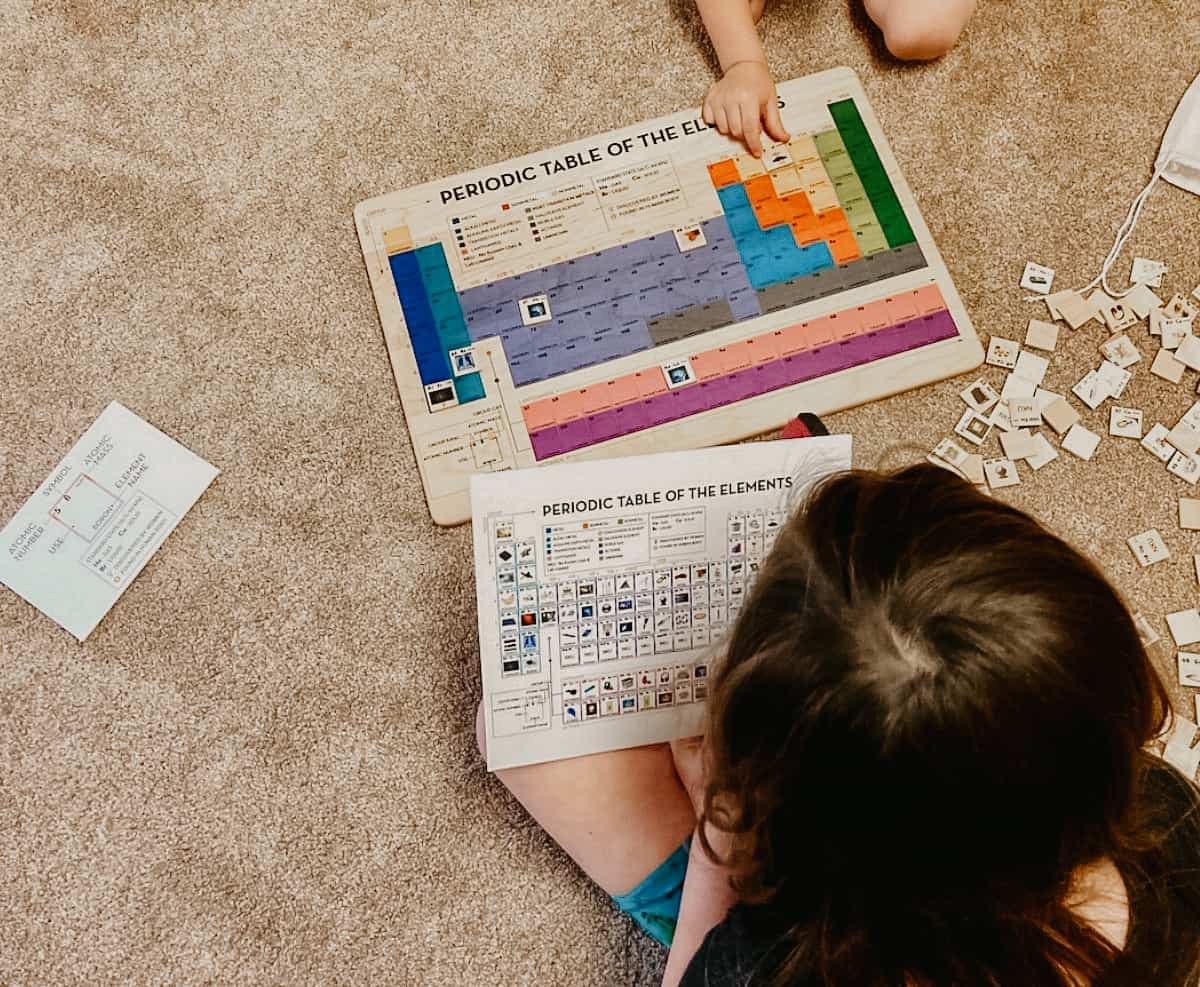
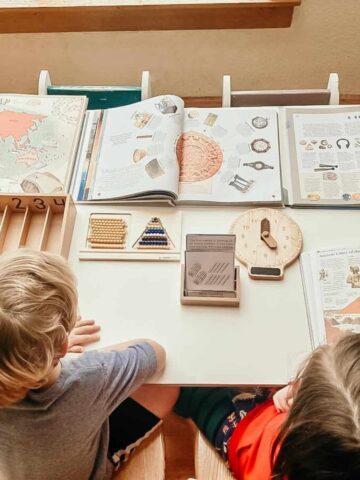

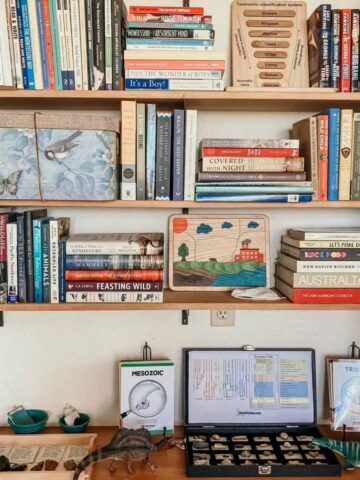
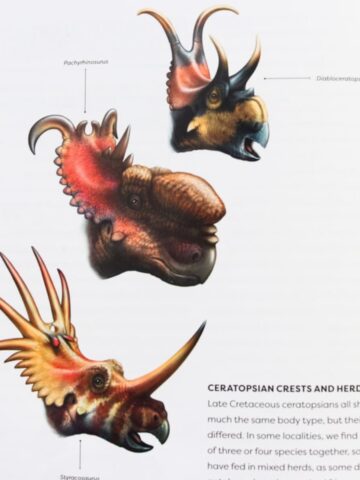
Leave a Reply